ストレンジャー・イン・パラダイス、またはアゲイン Stranger in Paradise; or Again [Marginalia 余白に]
暮れにクリスマスの気分に浮かれて、"Stranger in Paradise" について書き始めて、なんとなく正月も書いたりしたのですけれど――「楽園の他所者 Stranger in Paradise [2009/12/25]」「"Stranger in Paradise" の不思議な日本語訳 A Stranger Translation of "Stranger in Paradise" [2009/12/26]」「ミュージカル『キスメット』のなかの "Stranger in Paradise" "Stranger in Paradise" in the Musical Kismet (1953) [2009/12/26]」「ストレンジャー・イン・パラダイスふたたび Stranger in Paradise Again [2010/01/09]」――暮れからテレビから聞こえてくるCMをたぶん平均1,2日おきくらいにほぼぼけ~っと聞きつづけ、声の感じは1953年初演のミュージカル『キスメット Kismet』 の、ブロードウェイのストライキ中にプロモーションとして抜擢されたトニー・ベネット (Tony Bennett, 1926 - ) なのだけれど、歌詞がなんだかちがうにゃ~、とひと月近くたって思いましたw。
Time again~♪
って、聞こえる歌詞。
で、調べてみると、これ(JR東海のCM曲)は、日本人草間和夫が「作詞」、そして名前からすると日本人 のMISUMI が英訳した歌詞で、日本で活躍している外国人ふたりがレコーディングして2006年に出た「Again」という曲なのだとようやく知りました。
つぎURLはJR東海のページで、「JR東海 | うまし うるわし 奈良 | うましうるわし奈良 キャンペーンソング」(音源つき)――<http://nara.jr-central.co.jp/campaign/song/index.html>
しかし、Donna Burke というのは女声で女性です。Nello Algelucci というひとはイタリア人のギタリストのようなのですが、彼の声が別ヴァージョンとしてあるのでしょうか。
YouTube の過去CM再生リストみたいなもの――<http://www.youtube.com/watch?v=1cRC7BzYub8&feature=PlayList&p=82C6ECB7AD00D2DC&index=36>
2009年師走13日の「サンデーソングブック」の山下達郎のおはなしとして、9thNUTSのブログ「未来の自分が振り返る」<http://yamashitatatsuro.blog78.fc2.com/blog-entry-68.html>に書きとめられていること――
以前、JR東海のCMで流れていた”ストレンジャー・イン・パラダイス”絶対にフランクシナトラの歌でお願いします。どこを探してもシナトラでこの曲が無いと言われました。何故テレビで流れていたのでしょう?
教えてください。
達郎氏:
「これ、フランク・シナトラと勘違いされたんだと思います。これ、奈良のなんかのCMですが、あれは、トニー・ベネットだったと記憶しています。いろんな人のバージョン聴きましたが、フランク・シナトラが”ストレンジャー・イン・パラダイス”を歌っているというのは、今まで聞いたことがありません。不勉強なので知らないのかもしれませんが、トニー・ベネットと勘違いされているのではないかと思います。
それでも納得いかなければJR東海に問い合わせてみますが、今日は、これが一番押しが強いお便りだったのでご紹介しました。」
誰の声やねん。合成映像ならぬ合成音声なのかしら。
ま、それはそれとして、この「Again」の正式なタイトルは、 "Again: Ancient Place, the Destination Is Surely True . . ." (表記ちがうかも) というらしいのですが、1番の冒頭は、Time again, take my heart to a gentle place. ききとれず(汗) Am I [??]dreaming again and again, in a silence [??] where you remain. So time will as a nation as old and new, ききとれず(汗) destination as surely true as used to be ききとれず(汗) というのです。 なんかとても日本人くさいです。耳医者いってこようかな。
//////////////////
Tony Bennett, Official Website <http://www.tonybennett.net/>
Tony Bennett Art | Official Website <http://www.benedettoarts.com/index2.html> 〔Anthony Benedetto という画家として〕
大天使ミカエルのこと The Archangel Michael [Marginalia 余白に]
『あしながおじさん』1年生10月10日の手紙の冒頭。――
Did you ever hear of Michael Angelo?
He was a famous artist who lived in Italy in the Middle Ages. Everybody in English Literature seemed to know about him, and the whole class laughed because I thought he was an archangel. He sounds like an archangel, doesn't he? (Penguin Classics 16)
(ミケル・アンジェロってお聞きになったことありますか?
中世にイタリアに住んでいた有名な芸術家です。英文学のクラスに出ているひとは、みんなこのひとのことを知っているらしくて、わたしが大天使だと思ったというのでクラス全部が笑いました。彼って大天使みたいに聞こえるでしょ?
英語の Michael Angelo あるいは Michelangelo の発音は、「舞妓安寿郎」、いや「マイコゥアンジェロウ」みたいなものでしょうが、日本語ウィキペディアの「ミケランジェロ」の記述を信じれば、そもそも、「名前はミカエル(Michael)と天使(angelo)を併せたもの」でした。そのときのMichael が大天使の名前としてなのか、人名としてなのか、結局同じことなのか、はわかりませんが、ジュディーが「大天使みたい」といっているのは、大天使ミカエル+エンジェルとというふうに、ダブルで耳に響いてきたからにほかなりません。(書きそびれましたが、これは2月10日の記事「マイケル・アンジェローとミケランジェロ Michael Angelo or Michelangelo [Daddy-Long-Legs]」のつづきです。)
大天使 archangels については、数がいくつだ(「三大天使」「四大天使」「七大天使」)とか宗派・宗教による違いとか、ウィキペディアが薀蓄を傾けているし、ほかのサイトでも薀蓄が傾けられているので、それを参照していただけばよいのですが、中心となる三大天使についてかいつまんでいうと、洗礼者ヨハネの誕生を告げたりマリアに受胎告知 (Annunciation) するのがガブリエル(そういう点では天使の原義の "messenger" の役まわりですけれど、伝統的に、終末を告げるラッパを鳴らすのもガブリエルだとされています ("Gabriel's horn [trumpet]"))、そして旧約の「ダニエル書」ではイスラエルの守護者としてあらわれ、新約の「黙示録」で天使軍を率いて赤い竜と戦うとされるのがミカエル(だからミカエルは軍人の守護者になっている)、そして旧約聖書外典(カトリックでは正典)の「トビト書 The Book of Tobit [Tobias]」に描かれる、人間の姿をしてトビトの息子のトビアスの旅に犬と一緒に同行し、父トビトの目を治したり、悪魔 asmodeus に憑りつかれた花嫁のサラを救ったりするのがラファエロです(このラファエロはイスラム教ではイズラフェル Israfel にあたるとされますが、イズラフェルというのはあのエドガー・アラン・ポーのあだ名になっている、音楽をつかさどる天使で、やっぱり世の終末に最後の審判の裁きを知らせるラッパを吹く役回りももっています)。あ、かいつままないで薀蓄を傾けてしまいましたw。
ラファエルとトビアス(と犬)を描いた絵を多数添えて物語を語る記述が英語のウィキペディア "The Book of Tobit" にあります。魚釣りの絵とか悪魔退治の絵とかあって楽しいです。
そして、ラファエロがトビト書にしか出てこないからか、ミカエルとガブリエルも友情出演(?)するモチーフも絵画にはあります。――

Fra' Filippo Lippi (1406-69), The Three Archangels and the Young Tobias
左から、ミカエル、犬、ラファエル、トビアス、ガブリエル。
_TheThreeArchangelsandTobias-b67e0.jpg)
Domenico De Michellino (1417-91), Tobias and the Three Archangels
左端の、なべを兜代わりにかぶっているのがミカエルです。つぎはラファエル、つぎはトビアス、手前に犬、手に釣った魚(これで薬をこしらえる)、そしてガブリエル。
_TobiasandtheThreeArchangels(c1470).jpg)
Francesco Botticini (1446-97), Tobias and the Three Archangels (c. 1470)
左から、すかしたミカエル、犬、ラファエル、トビアス、そしてちょっとやる気のなさそうなガブリエル。この、ボッティチーニの絵で、左端の剣と玉をもっているミカエルのモデルはレオナルド・ダヴィンチだということになっています。
剣をふるった、勇猛なミカエルの図は多いです。一番有名なのはグイド・レニの絵かも――
.jpg)
Guideo Reni 〔2010.9.9訂正〕(1575-1642), The Archangel Michael (c. 1636)
ミカエルは竜とか堕天使とか悪魔とか踏みつけにします。ムカデを踏んでる絵はみつかりませんが。
いっぽう、ジャンヌ・ダルクの夢にあらわれたのがミカエルだということになっています。これがなかなかおもしろいです。
-6a9b2.jpg)
Eugine Thirioin, Appearance of Archangel Saint Michael to Joan of Arc (c. 1876)
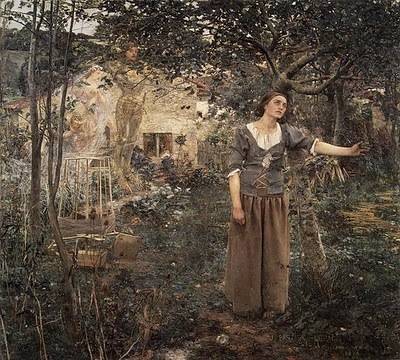
Jules Bastien-Lepage (1848-84), Joan of Arc
このバスチアン=ルパージュは、はい、ジュディーが読む『マリ・バシュキルツェフの日記』を書いた女流画家マリが恋していた画家です(記事「マリ・バシュキルツェフの日記 Marie Bashkirtseff's Journal」など参照)。ミカエルは半分透明みたいな霊的存在として描かれているように見えます。
.jpg)
Joan of Arc's Vision (Harpers, 1895)
////////////////////////////////////////
「天使の一覧」 Wikipedia <http://ja.wikipedia.org/wiki/%E5%A4%A9%E4%BD%BF%E3%81%AE%E4%B8%80%E8%A6%A7>
「ミカエル」 Wikipedia <http://ja.wikipedia.org/wiki/%E3%83%9F%E3%82%AB%E3%82%A8%E3%83%AB>
「ラファエル」 Wikipedia <http://ja.wikipedia.org/wiki/%E3%83%A9%E3%83%95%E3%82%A1%E3%82%A8%E3%83%AB>
「ガブリエル」 Wikipedia <http://ja.wikipedia.org/wiki/%E3%82%AC%E3%83%96%E3%83%AA%E3%82%A8%E3%83%AB>
Fra Filippo Lippi - The Complete Works <http://www.frafilippolippi.org/>
Edgar Allan Poe, "Israfel" audio@ AudioPoetry <http://www.archive.org/details/audio_poetry_50_2006>
Hervey Allen, Israfel: The Life and Times of Edgar Allan Poe (New York: George H. Doran, 1927), Vol. I etext@ Internet Archive <http://www.archive.org/stream/israfelthelifean006580mbp#page/n11/mode/2up>
Hervey Allen, Israfel: The Life and Times of Edgar Allan Poe (New York: George H. Doran, 1927), Vol. II etext@ Internet Archive <http://www.archive.org/stream/israfelthelifean006456mbp#page/n9/mode/2up>
The Book of Tobit: A Chaldee Text from a Unique MS. in the Bodleian Library, with Other Rabbinical Texts, English Translations, and the Itala. Ed. Adolf Neubauer. (Oxford at the Clarendon Press, 1878) <http://www.archive.org/stream/israfelthelifean006456mbp#page/n9/mode/2up>
"Book of Tobit (Tobias)" audio@ LibriVox <http://www.archive.org/details/tobit_ss_librivox>
新しい診療所の建設・続報、と古い診療所とウィーン万博の話など Swift Memorial Infirmary [Marginalia 余白に]
今日もニューヨークタイムズを広げていたら、昨日の記事(「古い伝染病棟と新しい診療所 The Old Contagious Ward and the New Infirmary」参照)の続報が載っていました。――
.jpg)
The New York Times (February 2, 1900), 2面.
VASSAR'S NEW INFIRMARY.
_______
Mrs. Atwater Doubles Her Gift Because of Higher Cost of Building.POUGHKEEPSIE, Feb. 9―Mrs. Caroline Swift Atwater of Poughkeepsie, an alumna of the class of '77, has doubled her original gift of money to Vassar College for a new infirmary, the rise in the price of building materials since the gift was made last June necessitating a larger expenditure than was at first anticipated.
Vassar was the first college in the world to establish an infirmary, having had one in the main dormitory since the founding of the college itself. The growth of the college, however, and the erection of new dormitories has made desirable a separate infirmary building, which Mrs. Atwater's generosity has furnished. This will be known as the Swift Memorial Infirmary, in honor of Mrs. Atwater's father, a member of Vassar's first Board of Trustees.ヴァッサーの新しい診療所
________
建築費の高騰によりアトウォーター夫人、寄贈額を倍にポーキプシー、2月9日.――ポーキプシー市のキャロライン・スウィフト・アトウォーター夫人は、昨年6月、ヴァッサー大学の新しい診療所のための資金の寄付を行なっていたが(夫人は77年の卒業生)、建材の価格の高騰により、当初見込まれていたより多額の出費が必要となったため、はじめの寄付金を倍増した。
ヴァッサーは診療施設をもった世界初の大学であり、大学創設時より中央棟の寮内に診療所をもっていた。しかし、大学の拡充にともなういくつもの新しい寮の建造によって、独立した診療棟が望まれており、アトウォーター夫人の厚意により建設の運びとなった。新しい診療所は、ヴァッサーの最初の理事会のメンバーであった、アトウォーター夫人の父親を記念して、スウィフト記念診療所と名づけられる。
2代目の学長の(といっても「塔 Tower」で書いたように、初代ジュウェットを次いで1865年の開学時に学長となった)レイモンドが、7年の大学運営を経て、1873年5月に、合衆国教育局の求めに応じて大学運営の報告書を提出したときに、学内の医療施設についてはつぎのように書かれていました。(この報告書は、さらに教育局長の要請により、その年のウィーン万国博覧会に、女性の教育についてのヴァッサーでの取り組みの報告のために本として出版されました。この万博のテーマ(モットー)は「文化と教育 Kultur und Erziehung [Culture and Education]」でした。)――
The executive head is the President of the college, whose duty it is to watch over all its interests, and to see that all laws and regulations prescribed by competent authority are carried out. He is specially charged with its discipline and with the moral and religious instruction of the students. The Lady Principal is the chief executive aid of the President in the government of the college, and the immediate head of the college family. She exercises a maternal supervision over the deportment, health, social connections, personal habits, and wants of the students. She is assisted by nine of the lady teachers, each of whom has immediate charge of one of the college corridors; and in matters of health she has the counsel of the "Resident Physician," who is a regularly educated medical woman, and who has under her direction a well-appointed infirmary and a nurse. [Vassar College. A College for Women, in Poughkeepsie, N.Y.: A Sketch of Its Foundation, Aims, Resources, and of the Development of Its Scheme of Instruction to the Present Time (New York: S. W. Green, 1873) 13-14 <http://www.archive.org/stream/vassarcollegeac01raymgoog#page/n22/mode/2up/search/inf>]
この箇所を読んで初めて知ったのですが、学長とは別に "principal" 校長さんがいて、それは女性で、健康面も含めた学生の生活・習慣その他もろもろを「母親」のように監督するのでした(「"maternal supervision" を行使する」)。学長のほうは道徳教育・宗教教育の側面に責任をもつようにも書かれています。この the Lady Principal の下に9人の女教師がいてそれぞれ "corridor" を受け持ち、健康については医学をちゃんと学んだ "Resident Physician" ――というから住み込みですね――が校長の相談役というか協力者としていて、この女性の校医は看護婦とともに診療所を指揮するという体制です。
/////////////////////////////////////
Weltausstellung 1873, Vienna [at ExpoMuseum] <http://expomuseum.com/1873/> 〔ExpoMuseum <http://www.expomuseum.com/> のなかのウィーン万博1873のページ(別にヴァッサーのことは書いてありませんが〕
学生数の増加とスウィフト診療所・補足 Swift Infirmary, Swift Recovery, Swift Hall [Marginalia 余白に]
補足。足が遅いといいますか、だらだら書いている感じがあるかもしれませんが、自分にとってブログのいいところは、呑み込んですぐ排出するみたいな、消化不良のままに勢いで書けること、あるいは(ときどきは)即興の思いつきを節足に、いや拙速に書きとめられること、なの、かもしれず、ご勘弁を願います。
思えば1890年代から1900年代はじめというのは、学生数の増加によりヴァッサー大学に「寮」がつぎつぎと建てられた時期でした。すなわち、『あしながおじさん』の大学のモデルになっているヴァッサー女子大学にジーン・ウェブスターが1897年秋に入学したときには、ストロング・ハウス Strong House (1893) とレイモンド・ハウス Raymond House (1897) という二つの寮がありましたが、さらに Lathrop House (1901) と Davison House (1902) が同じ意匠で建設され、4つの寮が二の字二の字の下駄のあと、という感じで、二つずつ向かい合って並ぶ。そして「塔」のモデルと想定される9階建てのTower をもった ジュウェット・ハウス Jewett House (1907) が、"North" として4つの寮に向かい合って北側に建てられます。
当初から全寮制だったわけで、Main Building は教室と寮が一緒になっていたわけです。そして、そこに古い診療所もありました。1900年に卒業生が新しい独立した診療所の建物を寄贈することにしたのは、確かに要望が高かったからだと思われます。ヴァッサーの学生数の増加については、なぜかコーネル大学の同窓会報 Cornell Alvmni News, Vol. 3, No. 12 (1900年12月12日(水))に、記事として載っています <http://www.ecommons.cornell.edu/bitstream/1813/3165/12/003_12.pdf>。――
左から2つ目のコラムの最後の段落の記事です。この記事は、この2年であらわになった"over-crowded condition" を解消すべく100人収容の新しい dormitory が建設される、という主旨ですが、名前は出てないけれど Lathrop House (1901) の建設のことをいってると思われます。で、最後の一文――"Strong Hall, which was built in 1892, and Raymond House, which was erected four years later, have always been taxed to their full capacity, as well as the accomodations in the main building, and at the present time there are 135 students living in lodging houses outside the college grounds." (1892年に建てられたストロング・ホールと、その4年後に建造されたレイモンド・ハウスは、メイン・ビルディング内の施設同様につねに満杯の使用状況で、現在、135人の学生がキャンパスの外の宿泊所に暮らしている。)
135引く100は35で足りません。そして案の定、というか、つづく1902年にDavison House が建てられることになります。
135人が住んでいた "lodging houses" というのがどんなものだったのか興味深いのですが、わからんです(ヴァッサー大学にとってはあまり誇れる歴史ではないかもしれず)。
(ついでながら、左のコラム下の5行の短い記事は、カリフォルニア大学学長の Benjamin Ide Wheeler が『アトランティック・マンスリー』誌に "Art in Language" という論文を書いた、というものですが、ベンジャミン・ホイーラー (1854-1927) はマサチューセッツ出身でブラウン大学を卒業した文献学者で、1899年から1919年までバークレーのカリフォルニア大学の学長だった人です。おそらくコーネル大学の教授もしていたので載っているのかもしれません。彼を記念した Wheeler Hall にUCバークレーの英文科も入っています。なつかしい。)
☆ ☆ ☆
スウィフト診療所について、ヴァッサーの同窓会報 Vassar, the Alumnae/i Quarterly, Vol. 105, Issue 3 (Summer 2009) の "Hidden Histories" 特集の記事に書かれていました <http://vq.vassar.edu/issue/summer_2009/article/fs_hidden_histories_summer09>。
それによると、"Swift Hall" というのは現在の呼称で、1941年に史学科が移ってきたのだそうです(これは、補足すると、新しいBaldwin Infirmary が前の年に建てられたからです)。もとは Swift Infirmary でしたが、昔の学生の呼び名としては "Swift Recovery" だったそう。「早い回復(=スグナオル)」ということばのシャレです。
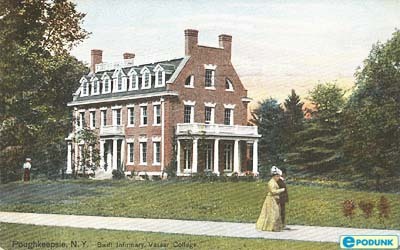
推定20世紀初頭のSwift Infirmary, image via epodunk.com <http://www.epodunk.com/cgi-bin/genInfo.php?locIndex=1476>
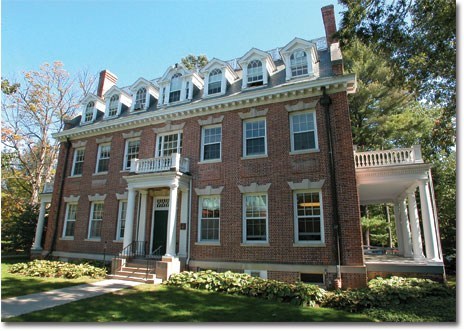
推定21世紀初頭の Swift Hall, image via Vassar, the Alumnae/i Quarterly <http://vq.vassar.edu/issue/summer_2009/article/fs_hidden_histories_summer09>
こうして100年の時間をはさんだ2枚の絵を眺めていると、そのあいだに数知れぬひとびとがさまよっているさまが、1枚の絵を見る以上に、浮かぶようです。
ジーン・ウェブスターの父親による『ハックルベリー・フィンの冒険』の出版 The Publication of _Adventures of Huckleberry Finn_ by Charles L. Webster [Marginalia 余白に]
ジーン・ウェブスターが生まれた1876年にマーク・トウェイン Mark Twain [Samuel Clemens, 1835-1910] の『トム・ソーヤーの冒険 The Adventures of Tom Sawyer』が出版されたのは、ふたりの作家の(といってもウェブスターの側での)ささやかな奇縁として語られることがあります。『トム・ソーヤーの冒険』の出版社は、ハートフォードの Elisha Bliss, Jr. というひとの the American Publishing Company で、この出版社は1869年の出世作『赤毛布外遊記 The Innocents Abroad』からマーク・トウェインの作品を出版し、マーク・トウェイン自身も1868年からハートフォードに住んでブリス Jr. と交流していました。オリヴィア・ラングドンと結婚して2年くらいはニューヨーク州バッファローに住みますが、1874年にまたハートフォードに戻ってきて、ビリヤード・ルームのある豪邸を建てました。
その後、A Tramp Abroad (1880) の出版は American Publishing Company ですが、The Prince and the Pauper (1882)、The Stolen White Elephant (1882)〔短篇小説ですが単行本として〕、Life on the Mississippi (1883) はボストンの James R. Osgood and Company から出版されました。
そして1884年5月1日、もともと出版や印刷に興味をもっていたマーク・トウェイン自身が出資して出版社をつくります。マーク・トウェインは、1875年に姉パメラ (Pamela Ann Clemens Moffett, 1827-1904) の娘のアニー・モフェット (Annie E. Moffett, 1852-1950) と結婚して義理の甥となっていたチャールズ・ルーサー・ウェブスター (Charles Luther Webster, 1851-91) に出版社の仕事を任せ、Charles L. Webster and Company という名前の出版社がニューヨークで立ち上げられます。結婚翌年の7月に生まれていた幼いジーンを含むウェブスター一家はフレドニアからニューヨークに居を移しています。この出版社が最初に出した本が『ハックルベリー・フィンの冒険』(アメリカ版、1885年2月)でした。同じ1885年には南北戦争時の将軍U・S・グラントの自伝も出版し、数十万部を売るベストセラーとなり、一躍有名な出版社となります。
しかし、その後、企画の失敗(法王の手記とかヘンリー・ウォード・ビーチャーの手記とか、11巻本のアメリカ文学アンソロジー――これ、見てみたいのですが・・・・・・――とか)や、ウェブスターの体調不良もあって、1888年、マーク・トウェインは Fred[erick] J. Hall というひとに首をすげかえます(でも出版社の名前は変えず)。チャールズ・ウェブスターは仕事の行き詰まりと精神的な疾患で苦しみ、薬の多量の服用により1891年4月28日、フレドニアの自宅で亡くなります(このときジーン・ウェブスターは14歳)。
その後、出版社の経営は不振で、大金を投じたペイジ植字機の失敗もあり、マーク・トウェイン自身が破産してしまい、1894年にチャールズ・ウェブスター・アンド・カンパニー社は10年の短命でなくなります。マーク・トウェインは、ハーパー社とか、あるいはまたアメリカン・パブリッシング・カンパニーとかから作品を出版するようになりました。
☆ ☆ ☆
で、『ハックルベリー・フィンの冒険』のことを書こうと思っていたのですが、だいぶ前置きが長くなったので(でもつい、ジーン・ウェブスターのことを考えていたら書かざるを得なかったのです)、細部はつぎにまわして、でも少しだけ書いておきたいと思います。
ウィキペディア(英語)の "Adventures of Huckleberry Finn" にも載っているのは、つぎのおもて表紙です。――
これの背表紙の下のほうには "CHARLES L. WEBSTER & CO." と金字でしるされています。――
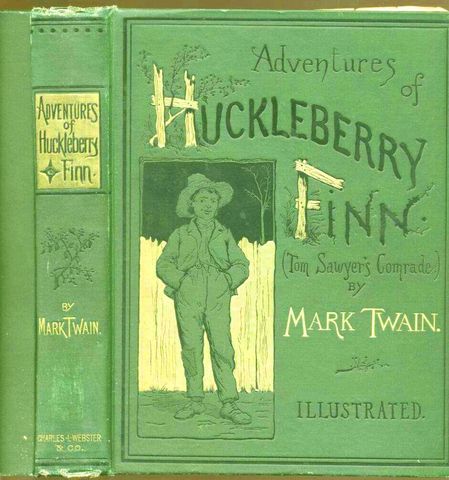
Mark Twain, Adventures of Huckleberry Finn (New York: Charles L. Webster, 1885)
さて、ネットサーフィンしていたら、デラウェア大学図書館の特別収蔵品のページに、青色の表紙の初版が載っていました。――
.jpg)
image via "FOUR DECADES OF LIBRARY SUPPORT: Literature" University of Delaware Library, Special Collections Department <http://www.lib.udel.edu/ud/spec/exhibits/udla/lit.htm>
そして、説明は以下のようです。――
Mark Twain, 1835-1910.
Adventures of Huckleberry Finn: (Tom Sawyer's Comrade).... London: Chatto & Windus, 1884.Perhaps the best-known work of American literature, Huckleberry Finn has also been a source of great controversy over the years. The first edition of Twain's novel remains one of the great high spots of American book collecting.
『ハックルベリー・フィンの冒険』についての有名な話として、1884年に、誤って定冠詞 "The" を付してイギリス版を出版(上にあるようにロンドンのチャトー・アンド・ウィンダス社)、翌1895年に "The" をとってアメリカ版を出版ということがあります。アメリカ版の出版が遅れたのについては、E. W. Kemble の挿絵の1枚にワイセツなイタズラが加えられて、それを修正するのに時間がかかった、という事情があったとされていますが、ともかく、正しいタイトルは定冠詞のないもので、それは、リクツとしては、『トム・ソーヤーの冒険』のほうは冒険が完結しているが、『ハック』のほうは冒険が完結せず、まだこれからも続く、そのことと定冠詞の有無はかかわっているのだ、ということです(このリクツを最初に言った批評家はフィリップ・ヤングでした)。
いまはインターネットの時代で、わたしのような貧乏人にも初版テクストが電子的に入手可能です。で、Internet Archive を漁ると、英米両方の初版テクストが見つかりました(あー、しあわせ♪)。
.jpg)
Mark Twain, The Adventures of Huckleberry Finn (London: Chatto & Windus, 1884) xvi+438, 32 (publisher's catalogue) pp. <http://www.archive.org/stream/adventureshuckl00unkngoog#page/n9/mode/2up2up>
title-591f6.jpg)
Mark Twain, Adventures of Huckleberry Finn (New York: Charles L. Webster, 1885) 366pp. <http://www.archive.org/stream/adventureshuckle00twaiiala#page/n9/mode/2up>
イギリス版のほうの電子テクスト (Google ブックス) は、残念ながらケンブルの挿絵を削除して見られないようにしています。版権の関係なのでしょうか。そして表紙もカヴァーしていません。
両方をパラパラめくっていると、まず本文第一ページの最初の挿絵にタイトルが含まれているのに気づきます。先にアメリカ版――
17.jpg)
Mark Twain, Adventures of Huckleberry Finn (New York: Charles L. Webster, 1885), p. 17
そしてイギリス版――![[The]AdventuresofHuckleberryFinn(Chatto,1884)xvi,1.jpg](https://occultamerica2.c.blog.ss-blog.jp/_images/blog/_73b/occultamerica2/m_5BThe5DAdventuresofHuckleberryFinn(Chatto2C1884)xvi2C1.jpg)
Mark Twain, The Adventures of Huckleberry Finn (London: Chatto and Windus, 1884), pp. xvi, 1
イギリス版は、目次やイラストのリストの部分をローマ数字でページを振ってあり、本文のはじまりが第1ページです。アメリカ版は本文の始まりは第17ページ。両者はページ番号のみならず組版が異なっていることがわかります。それにしても、ケンブルの挿絵に組み込まれていた冒頭第一語の "You" まで切り取っているのはケシカランと思います("don't" で始まっている)。ムカデ図をはじめ著者のイラストを排除したグーテンベルクの『あしながおじさん』よりもひどいです。
しかし、げげげっ。アメリカ版を見ると、"The Adventures of Huckleberry Finn" と定冠詞が入っているではありませんか(イギリス版の電子化ファイルが、たまたま "The" を切り取っているのはご愛嬌としても)。さらに、ページを繰ると、偶数ページの上部にタイトルが印刷されつづけています。
p2-3027f.jpg)
Mark Twain, The Adventures of Huckleberry Finn (London: Chatto and Windus, 1884), p. 2
イギリス版に "The" が一貫するのはうなづずけるとしても、アメリカ版――
18-19.jpg)
Mark Twain, Adventures of Huckleberry Finn (New York: Charles L. Webster, 1885), pp. 18-19
左側18ページの上のマージンです。 THE ADVENTURES OF HUCKLEBERRY FINN. と印刷されています。これは、最後のページまで同じです。
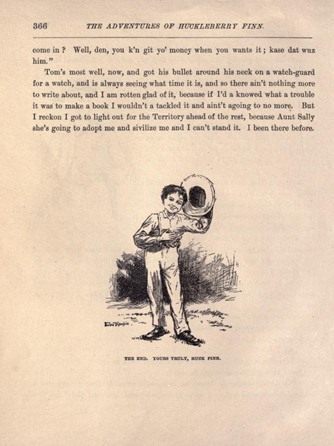
Mark Twain, Adventures of Huckleberry Finn (New York: Charles L. Webster, 1885), p. 366
そうすると、イギリス版とアメリカ版のタイトルの違いといわれるものは、まさにタイトルページだけなのかしら。
Google Books では見られないイギリス版の表紙を捜し求めました。それは、上のデラウェア大学図書館所蔵の青い表紙の本の背表紙の下の字が、どうも Chatto & Windus と書いてあるようには見えなかったということもあります。――
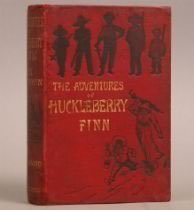
Mark Twain, The Adventures of Huckleberry Finn (London: Chatto & Windus, 1884)
赤でした。そして表紙のデザインは異なっていて、ちゃんと(w) "The" が入っていました。
ということで、少しだけ謎をはらませながらつづく~♪
///////////////////////////////////////
"Mark Twain, Publisher" ["Webster Company Publishing History"] <http://www.twainquotes.com/websterco.html> 〔www.twainquotes.com 内。チャールズ・L・ウェブスター社が1885年から1894年の10年間に出版した本のリスト〕
"A Rare Interview with Charles Webster" ["Charles Webster - short biography and interview"] <http://www.twainquotes.com/interviews/WebsterInterview.html> 〔同上〕
飯塚英一 「マーク・トウェイン最後の旅行記『赤道に沿って』の出版をめぐる経緯」 宇都宮大学『外国文学』 54 (March 2005): 1-13. pdf. 宇都宮大学学術情報レポジトリ <http://uuair.lib.utsunomiya-u.ac.jp/dspace/bitstream/10241/357/1/KJ00004174273.pdf> 〔出版や経営や出資や投機についていろいろと書かれています。チャールズ・ウェブスターについては「厄介者」というふうに、まあマーク・トウェインの側に気持ちを投影して、書かれています。〕
チャールズ・L・ウェブスター社の『ハックルベリー・フィンの冒険』のちらしから本の装丁とかのはなしなど Flyers for Adventures of Huckleberry Finn [Marginalia 余白に]
「ジーン・ウェブスターの父親による『ハックルベリー・フィンの冒険』の出版 The Publication of _Adventures of Huckleberry Finn_ by Charles L. Webster 」のつづきで、「本の部分の英語名称メモ Names of Parts of a Book」の姉妹篇です。
Wikimedia Commons の画像には、Broken Sphere というヒトによって Adventures of Huckleberry Finn 関係のチラシが4種あがっていて(<http://commons.wikimedia.org/wiki/User:BrokenSphere/Artwork/Books>)、それはいずれもヴァージニア大学の "Huck Flyers" ("West Coast Promotional Flyers")というページ(<http://etext.lib.virginia.edu/railton/huckfinn/hfoccidenthp.html>)のリンク先からとられているようです。記事本体は西海岸で販売を請け負った、サンフランシスコのサター・ストリートにあった the Occidental Publishing Company が作成したチラシや封筒についてのものですけれど、チラシの文章は最後のパラグラフ以外はチャールズ・ウェブスターがつくったチラシを踏襲していること("But the flyer's text, which is identical on both versions, was taken directly from the sales prospectus that Charles L. Webster & Co. created in 1884 (as you can see here and here). ")が説明されています。flyer フライアーというのはアメリカ英語で、「チラシ」、「ビラ」 (bill) のことです。
American Publishing Company もそうでしたが、マーク・トウェイン自身がつくった Charles L. Webster and Company も予約販売制の出版社でした。それで、エージェントがチラシをもって購買者を募ってあるく、あるいはチラシを郵送する、さらに、その前に(あるいはそれと同時に)エージェントを募集するということが行なわれたのです。ここにあがっているのは、購読者向けのものと、購読者を探すエージェント向けのもの2種x2です。
タイトルに "The" がついている件はここでは無視しますw。
下から10行目くらいに "SOLD ONLY BY SUBSCRIPTION" (予約購読のみ)と書かれて、そのあとに3種類の装丁が並んでいます。――
Price in fine cloth binding, plain edges, - - - - $2.75
Leather Library Style, sprinkled edges, - - - - - 3.25
Harf Morocco, marbled edges, - - - - - - 4.25
最初が布装(クロス装丁)。「エッジ」が「プレーン」というのは、「小口」(「「本」の部分の名称」参照)(複数であることからわかるように「天」と「地」と「前小口」の三方のふち」が「無地」(無彩色・無模様)、紙の色のままということです。これが2.75ドル。
ふたつめのは Leather (Library Style) と読んでいいと思うのですが、革装(ライブラリー仕様)。"Library Style" の起源について無知ですので、なんとなく方便としてアマゾンの "Bindings" の説明を含むページをリンクしておきます―― <http://www.amazon.com/gp/help/customer/display.html?ie=UTF8&nodeId=468558>。「エッジ」(小口)が「スプリンクルド」というのは、「パラ(掛け)」、霧染め模様にすることです。これが3.25ドル。
みっつめの、Half Morocco は半モロッコ革装(略 hf. mor.)。モロッコ革というのはヤギの皮をタンニン剤でなめした良質の皮革です。半 (half) は half binidng で、クロスの half binding(半クロス装 half cloth) もあれば革の half binding (半革装 half leather)もあります。表紙の全部を覆っている「総クロス(装) full cloth」 や「総革(装) full leather」が「丸装」「完表紙」で、 half は半分です。4分の1装 quarter binding(=背装) とか4分の3装 three-quarter binding というのもあります。marbled edges はマーブル(大理石)模様が小口にしつらえられているもの(「小口マーブル)。4.25ドル。
そうして、その下に、布装の色について書かれています――"NOTE―The cloth bindings are in blue and olive green. Green will be sent unless otherwise ordered." (注――クロス装はブルーとオリーヴ・グリーン。特に指定がなければグリーンを送付。)
これで、青と緑の2種類の表紙の謎が解けました。
しかし。この青と緑のクロス装、そして革装のあいだでも、テクストに異同があるらしいのです。それは、図書館に行ってカリフォルニア大学の全集版とか新しいハックの版とか見れば、たぶん諸テクストの校合(きょうごう collation)を行なって書いてあることかもしれませんが、いまは装丁との関係で、アリゾナ州スコッツデイルの古本屋さん、Charles Parkhurst Rarebooks のウェブサイトのマーク・トウェインのページを参照しておきたいです―― <http://parkhurstrarebooks.com/twainpg.htm>。
ここには2010年2月末日現在、総革装(9000ドル也)、ブルー・クロス(8500ドル)、グリーン・クロス(4800ドル)、そしてよくわからないけど写真を見ると背革に装丁しなおしたのかもしれないグリーン・クロス(2000ドル)の4冊のアメリカ初版が売られています。ABAA に属している古書店らしく、テクストの異同について記述があります。
ブルーのクロス装のものについて、これだけ1884年とする根拠は示されていませんが、特徴を列挙しています。―― "with the following early issue points; a) Illustration captioned "Him and another man: is erroneously listed as being on page 88. b). page 57, eleventh line from bottom reads "with the was"; c). There is no signature mark on page 161. d). Title leaf is tipped in, with copyright notice dated 1884 e.) Page 155 has final 5 lacking. f). Page 143, with "L" missing fron "COL." at top of illustration and "b" in "body" in line 7 is broken. g.) Page 28 is tipped-in." "issue" というのは、「刷」の意味だと思います。
そして、オリーヴ・グリーンのほうを、あとの「刷」としています――" A lovely copy with all the second state issue points, half-title, frontispiece, photo-gravure bust by Gerhardt, 366pp., 174 illustrations, bound in green pictorial cloth lettered and decorated in black and gilt, spine lettered in gilt and black, peach tinted endpapers. A superb copy, nearly fine with just a few spots of rubbing to joints and spine ends, no owner's names, plates or otherwise, internally very fresh, with the following issue points. p. [9]: "...Huck Decides to Leave..." is listed as part of the heading for Chapter VI (changed from "Decided". p. [13]: "Him and another Man" properly listed as at p. 87. p. 57, line 23: "with the saw" (corrected from "with the was"). frontispiece portrait: "Photo-Gravure" plate. title page: conjugate p. 143: "Col." at upper corner of plate includes the "l." p. 155: final "5" of page number in a different font (type slippage and replacement) p. 161: signature mark "11" missing. p. 283: corrected plate bound in."
"state" というのは版 (edition) は同じだけれども、出版までのあいだに訂正などがなされたりするときの「異刷」というやつです。このグリーンのほうが "second state issue" であって、ブルーのほうにあった誤りが訂正されている(典型的には57 ページの saw / was )。革装のものも "was" と直っておらず、ブルー・クロスと似た状態みたい――"The issue points are as follows: A). Illustrations captioned "Him and another man" is listed as being on p. 88. B). Eleventh line from bottom of page 57 reads, "with the was". C) No signature mark on page 161. D). Title leaf is integral with copyright notice dated 1884. E). Page 155 with final 5 absent. F). Page 143 with "1" missing from "Col." at top of illustration and "b" in "body" in line 7 is broken. G). Page 283 is integral in and has the curved fly which is known only in prospectuses and a few leather bound copies according to BAL." 〔この英語、とくに最後の文、つながりがヘンな感じ〕。
おもしろいです。まあ、1884年(つまりイギリス(&カナダ)版初版が出た年)に出るはずだったのが、アクシデントにより1885年2月に先延ばしになったという経緯とかかわるのかもしれませんが、直してない瑕疵があるテクストを最初から売っていいもんでしょうか。それはそれですか。
ところで、このあいだ「ジーン・ウェブスターの父親による『ハックルベリー・フィンの冒険』の出版 The Publication of _Adventures of Huckleberry Finn_ by Charles L. Webster」でリンクしたアメリカ初版――Mark Twain, Adventures of Huckleberry Finn (New York: Charles L. Webster, 1885) 366pp. <http://www.archive.org/stream/adventureshuckle00twaiiala#page/n9/mode/2up>――は、青いクロス装のテクストだとわかりました。そして、誰の手によるものかわかりませんが、見返しに書き込みがあったのでした。――
こういう細かいのって、イラつくところもあるのですが、本好き(書痴・書狂など)としてはワクワクするところもあります。
半分と四分の三 Half and Three-Quarter Bindings [Marginalia 余白に]
チャールズ・L・ウェブスター社の『ハックルベリー・フィンの冒険』の案内チラシ(prospectus, flyer)で "Half Morocco" とされている、いちばん高いアメリカ版初版が売られていた(すでに売れていたけど)のを見ました。――
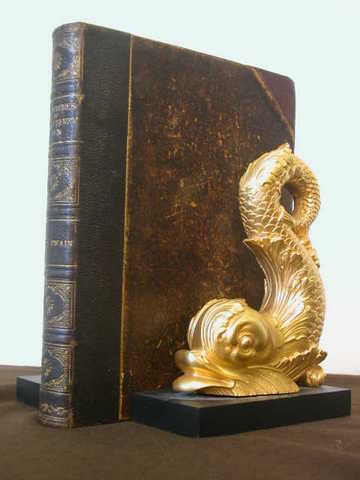
image: Ziern-Hanon Galleries at GOAntiques.com <http://www.goantiques.com/detail,adventures-huckleberry-finn,321843.html>
本についての詳しい記述の半分くらいを引いておきます。――
FIRST EDITION, FIRST PRINTING, FIRST STATE. Square Octavo, original three-quarter brown publisher's morocco and marbled boards, marbled edges, gilt-decorated spine, marbled endpapers. First edition, first printing, first state of Twain's masterpiece, one of approximately 500 copies bound in publisher's three-quarter morocco binding. Copies of Huckleberry Finn were assembled haphazardly by the printer and there has yet to be agreement among bibliographers as to the priority of many points: This copy has all of the commonly identified first state points. First issue points include: On page 13, the list of illustrations has "Him and another Man" listed on page 88 (first state -- this was corrected later); Page 57 reads "with the was" (first state, this was later corrected to "with the saw"); page 9 with uncorrected "decided" (first state, this was later corrected to "decides"); Illustration on Page 283 with straight fly line (second state, curved line preferred); Copyright page dated 1884, as usual; signature number "11" on page 161 missing (first state); Final "5" dropped on page 155 (this was later replaced with a five of a different typeface); Dropped "I" in "Col," on page 143 and in "body" the "b" is broken. Frontispiece portrait shows sculptor's name and has the "Heliotype Printing Company" imprint (no priority is assigned because this was separately printed and tipped in).
書誌学者(文献目録編纂者)のあいだでもまだ議論があるようなことも書いてありますが、とりあえず異同のメモとして引いておきます。
気になったのは、"original three-quarter publisher's morocco"、"publisher's three-quarter morocco binding" というふうに、「ハーフ」ではなくて「四分の三」と記述していることです。このあと、マック・ドネルというひとの書誌からの引用があって、そこでも確かに「四分の三」となっています。――
"The relative rarity of the cloth and leather bindings is clear. Less than two weeks before publication, [the publisher] Webster announced that he was binding 20,000 copies in cloth, another 2,500 in sheep, and 500 copies in three-quarter leather. The remaining 7000 copies of the first printing were probably bound up in similar proportions. Leather copies dried out, cracked apart, and have survived in even fewer numbers than the original production numbers would promise" (MacDonnell, 35).
たぶんテキサス州オースティンの Mac Donnell Rare Books の店主で、ポーとかメルヴィルとかマーク・トウェインなどの初版本蒐集や文献目録作成で知られた Kevin B. Mac Donnell だと思うのですが、詳しいことは知りません。出版2週間前のチャールズ・L・ウェブスター社の広告ではクロス装を20000部、シープ革装を2500部、四分の三革装を500部となっていたそうです。
よくわからんのは、記述の最後のまとめには
[. . .] Maker: Mark Twain Title: Huckleberry Finn First Edtion, First State, Publisher's Leather Binding Style: Half morocco leather binding Type: half morocco leather binding
と、ふたたび「ハーフ」と書かれていることです。ハーフ装なのでしょうか、4分の3装なのでしょうか? そもそも半分と四分の三ってどうちがうのでしょう?
オックスフォード英語大辞典を見ると、"half-binding" は、"A style of binding of books in which the back and corners are of leather, the sides being of cloth or paper" と定義しています。背と角の部分が革で、サイド(なんて訳したら適当かわからず)は布または紙になっている本の装丁スタイル。そして、ちょっと意外だったのですが(無知だったとも言う)、もともとアメリカニズム (orig. U. S.) で、初出は1821年でした。用例のふたつめは1864年のウェブスター辞典のタイトルだけ出ていて、つまり、ウェブスター初版の改訂版でこの語がおさめられた、ということです。
"three- quarter" を見ると、2番のD に複合語と連語が並んでいるなかに、"three-quarter binding" があって、"a style of bookbinding having more leather than half-binding: see quot." (ハーフ装よりも多くの革のある本の装丁のスタイル――用例参照)と書かれています。用例を見ると、"*Three quarter binding is a very wide back and large corners. The sides may be of anything, paper, cloth [etc.]." という1897年の文章が引かれています。
勝手に推測するに、総革 (full leather; full binding) に対してつくられたハーフ装 (half binding) というのがそもそもきっちり半分ではなくてアバウトにつくられ、それと差異化すべく豊富に革を使ったものが四分の三装 (three-quarter binding) と呼ばれてつくられた、ということなのかしら。
神保町の老舗の古本屋の雄松堂のウェブサイトのなかにある、「新・古書への扉:ビアボーム「全集」-装丁を眺める」というページ(Net Pinus 64号: 2006/06/26)には、「この全集の装丁は全てが革ではなく、背と、背とは接していない角の部分が革で、残りはクロス(布)で覆われています。このような装丁を「半革装」(half bound)と言います。[写真5](*2)」という記述があります。
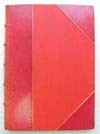
[写真5] image: 雄松堂 Net Pinus 64 <http://yushodo.co.jp/pinus/64/door/index.html>
注の2番は「実際に古書目録の中に出てくる表記は、使われている材料が明記されていることがほとんどです。モロッコ革が使われている場合にはhalf morocco(半モロッコ革装)、子牛革の場合はhalf calf(半子牛革装)と表記されています。また、背だけが革の装丁は quarter bound (背革装) と呼び、この場合にも、目録の中ではquarter calf(背牛革装)とかquarter morocco(背モロッコ革装)と表記されます。[写真6]」というものです。
このマックス・ビアボーム全集の装丁は、上の『ハック・フィン』と比べて、むしろ革の部分が多いようにさえ見えます。
本の厚みによって背に使われる革の量が変わるのだから、純粋に2分の1とか4分の3とか面積で決まっていてあまったぶんは表・裏表紙にもってくるとかいうのでなければ、それぞれアバウトで、4分の3も「ハーフ」の中に入れることもあるのでしょうか。同様に背革 quarter (leather) binding も厳密に4分の1とは思えません(わかりませんが)。
久永内科の久永光造さんの古書サイトのなかの「本の装丁について」 というページも楽しいです。ハーフ・モロッコ装の例としてあがっているなかにつぎの本があります。――
↓表紙は ハーフ モロッコ です マ-ブル紙とモロッコ皮との境界には金箔による金線が入っています マーブル紙は大理石様の模様以外に左上から右下にかけて かすかに うすい帯状の平行線が見えますが これは透かしマーブル紙といって非常に製作困難で マーブル紙としては最も高級なものです ハーフモロッコといってもこの程度のもにもなると へたなフルモロッコより好まれ高く評価されています
image: 「本の装丁 モロッコ革 マーブル紙 べラム 久永内科 久永光造」 <http://www4.ocn.ne.jp/~hisanaga/soutei.htm>
ということで、ハーフというのは(意味の)幅が広いのかなあ、と。
一生懸命、「四分の三」を明記している本を探すと、つぎのようなものが見つかりました。――
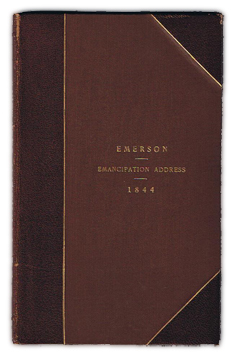
image: "Sample Offerings," Seneca Books, LLC. <http://www.senecararebooks.com/Sample_Offerings.html>
" Bound in three-quarter brown morocco, raised bands, and gilt lettering." と記述されています。
もうひとつ「ハーフ・モロッコ」の例――
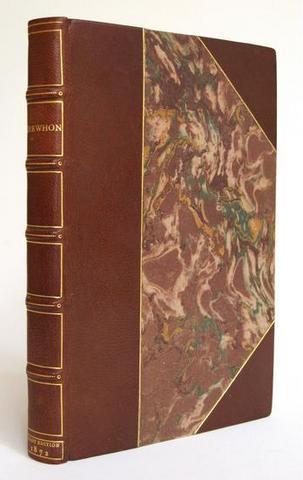
image: Louella Kerr Books - Catalogues- <http://www.louellakerrbooks.com.au/cat113.htm>
やっぱり古本屋さんのサイトです。記述――
BUTLER, Samuel
Erewhon
London, Trubner & Co, 1872. First edition ppviii, 246, [2 blanks]. Roy 8vo, bound in half morocco with marbled boards by Sangorski & Sutcliffe, original brown cloth covers bound in at rear. A very fine copy
Sangorski & Sutcliffe というのは、1901年に創設された、イギリスの有名な装丁工房会社で、ウィキペディアにも載っています。1872年の初版本を装丁しなおしたのですが、オリジナルのクロス表紙は最後に綴じてある、ということです。
面積の計算をしてみようか、と一時は思ったのですが、すっかりやる気がなくなりましたw。
/////////////////////////////////////////
"History of Sangorski & Sutcliffe" <http://www.bookbinding.co.uk/History.htm> 〔Sangorski & Sutcliffe のHP。宝石を入れた有名な『ルバイヤート』や工房の写真あり〕
"Publications" Department of Preservation & Collection Maintenance, Cornell University Library <http://www.library.cornell.edu/preservation/publications/> 〔コーネル大学図書館〕
"September 2003 Fine Art and Antiques Auction Catalog" Aspire Auctions, Inc. <http://www.aspireauctions.com/auction23/3864.html> 〔quarter から half, three-quarter, full まで出品あり〕
ウェブスターが1年生のときのヴァッサー大学のカタログをまた見てみる Vassar Catalogue for 1897-1898 When Jean Webster Was a Freshman [Marginalia 余白に]
ジーン・ウェブスターが1年生のときのヴァッサー大学の便覧 The Thirty-Third Annual Catalogue of Vassar College をまた見てみました。寮のこととか書いてないかなあと。
68ページから始まる "The College and Its Material Equipment" という章の冒頭の概説と、一項目の Main Building の記述を書き写しておきます。――
THE COLLGE AND ITS MATERIAL EQUIPMENT. (大学とその設備)
The College is situated near the city of Poughkeepsie, which is on the Hudson River Railroad, 73 miles from New York. Electric cars run regularly to and from the city. The Western Union Telegraph Company has an office in the building.(大学はポーキプシー市近郊に位置する。ポーキプシーの駅はハドソン・リヴァー鉄道路線にあり、ニューヨークから73マイル(約120キロ)。電車が市とのあいだを往復して定期的に走っている。校舎内にウェスタン・ユニオン電報会社のオフィスがある。)
The College buildings comprise to the Main Building, a structure of five hundred feet long, containing students' rooms, apartments for officers of the College, the chapel, the F. F. Thompson library, and office; Strong Hall and Raymond House, residence buildings; the Vassar Brothers' Laboratory of Physics and Chemnistry; the Museum building, containing the collections of Natural History, the Art Galleries, the Music Rooms, and the Mineralogical and Biological Laboratories; the Observatory; the Alumnae Gymnasium; the Conservatory; houses for the President and for Professors; and various other buildings.(大学の建物は――メイン・ビルディング(本館)(幅500フィートの建物で、なかに学生の部屋、大学職員の住居、チャペル、F・F・トムソン図書館、事務室がある)/ストロング・ホールとレイモンド・ハウス(寮棟)/ヴァッサー・ブラザーズ物理化学実験棟/美術博物館(博物学の収集物と美術ギャラリー、音楽室、鉱物生物学研究室を含む)/校友体育館/温室/学長と教授の住宅/その他種々の建物からなる。)The Main Building (本館)
This building is warmed by steam, lighted with gas, and has an abundant supply of pure water. A passenger elevator is provided. Every possible provision against the danger from fire was made in the construction of the building. In addition to this there is a thoroughly equipped fire service, a steam fire engine, connections and hose on every floor, Babcock extingushers, and fire pumps.(この建物はスチーム暖房、ガス照明で、豊富な真水を貯蔵している。エレベーター備え付け。火災の危険に対するあらゆる可能な対策が建物の建造においてとられている。これに加えて、完全装備の消防隊[? どこに?]、蒸気式消防車[? どこに?]、各階ごとの連結器とホース、バブコック消火器、消防ポンプがある。〔よくわからんです〕)
The students' apartments are ordinarily in groups, with three sleeping-rooms opening into one study. There are also many single rooms and some accomodating two students. The rooms are provided with necessary furniture. The construction of the building is such that even more quiet is secured than in most smaller edifices. The walls separating the rooms are of brick, and the floors are deadened. (学生の部屋は通例複数室で、三つの寝室が一つの書斎にむかいあっている。個室も数多くあり、また学生二人にむく部屋もある。部屋には必要な家具が備わっている。これより小さな建造物以上にずっと静穏が確保されるように建物はつくられている。部屋を分ける壁はレンガ材で、床は防音にされている。) 〔Thirty-Third Annual Catalogue of the Officers and Students of Vassar College, Poughkeepsie, N. Y.: 1897-98 (Poughkeepsie: A. V. Haight, 1897), pp. 68-69 <http://www.archive.org/stream/annualcatalogue00collgoog#page/n717/mode/2up>〕
ということで、『あしながおじさん』2年生10月の手紙に描かれた3人の部屋割りはみごとにこの記述にあっていると思われます。
右下の Corridor (廊下)がどうやら線で示されているところがわかりにくいところかもしれません。たぶん Study だけが廊下に面していて、そこから個人のベッドルームに分かれるのでしょう(自信99パーセント)。
ちなみに、このあと1893年につくられた100人収容の寮、ストロング・ホールの記述があって、「一人部屋と、二人用の3室からなるスイートからなる」 (It is arranged in single rooms, and in suites of three rooms for two students)、と書かれています。あと、こちらには食堂の記述があって、建物の北の部分に2階分の天井の高さのダイニング・ルームがある (The dining room, the height of which extends through two stories, is at the north end of the building" と書かれています。女子学生のおしゃべりでうるさい食堂のモデルはこの建物のものなんですかね。
あと、冒頭の Electric cars というのは、いまはやりの電気自動車ではもちろんなくて(といってもガソリン自動車の前にすでに電気自動車は存在していましたけど)、train とは区別される street car というか tram というか、路面電車みたいなものだったのではないかと思います(今日アメリカには一部都市をのぞいて市街電車はなくなっていますけれど、第一次大戦前まではけっこうあったそうで)。 ちょっと調べてみないとわかりませんけれど。・・・・・・とりあえずウィキペディアの記事「アメリカ路面電車スキャンダル」参照。
あ、それとも the city というのはニューヨーク市のことを指しているのかしら。昔の路線図を調べてみねば。
建物の向き (1)――建物の向きの指示は大学向きだったっていえるのかい Direction(s) of Buildings (1) [Marginalia 余白に]
マーク・トウェインのコネティカット州ハートフォードの家についての和栗了氏の論文「家のドアを開けないで」で自分は知ったのかと思うのですが、マーク・トウェインの家の玄関は東を向いているのだそうです。「マーク・トウェインの八角形をいれた家 Octagonal Shapes in the Mark Twain House」に孫引きした図面を見ると、精確なところはわかりませんけれど、なるほど、Mark Twain House の画像として多く見られるアズマヤ ("THE OMBRA") は南の方角で、玄関はほぼ真東(下の図で真下)にあるのだと了解されます。
さて、マーク・トウェインのことは専門でもないしよくわからんのですが、マーク・トウェインの姉の娘の娘のジーン・ウェブスター(ったって専門であるわけでもないですが)が、どうやらヴァッサー大学の Main Building (「本館」と訳していいものやらいまだ自信なし)に暮らしていたらしいことを、ここ数日の記事で、確認したうえでの話です。
さっきから探していて見つからないのですが、ヴァッサーの校舎を中心とした建築ガイド本を、ついこのあいだ衝動買いして、自分が過去にかかわってきた日本の大学のいずれに対するよりも深い知識を外国の大学にさらにもちつつある今日この頃なのです。それで、文章を参照(適当な記憶はあるんですけど)するのは先送りにして、図版だけ引いておきます。――
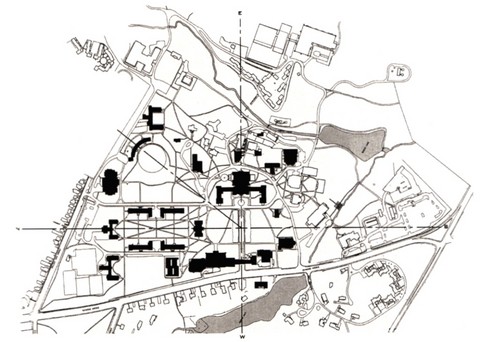
based on the top figure "Diagram of buildings located along the cardinal axis" of page 31 of Vassar College: An Architectural Tour (New York: Princeton Architectural Press, 2004)
図の真ん中の大きなインベーダーみたいなのが Main Building です。ここは1865年に完成した最初の大学校舎です。えーと、この図は上が東、左が北、ですけれど、ちょうど南北のラインが通っている北の端にある小さなインベーダーが、1907年建造のJewett House です。後ろの●がタワーです(「塔 Tower」参照・・・・・・ほんとは丸くないです。純然たる八角形でもないです)。
正門は縦の、東西のラインの下の、つまり西の下のほうの、黒いかたまりの細くなっているところですが、とりあえず、大きいインベーダーが真西を向いていること、つまり本館の正面は西であること、は了解されると思います。
謎をはらみつつ自分でも混沌とした頭でつづく~♪
追伸。半分で拙速に出すのは、夕方まちがってほんの数行で一時公開したためでございます。まことにすいませんでした。
建物の向き (2)――建物の向きの指示は大学向きだったっていえるのかい Direction(s) of Buildings (2) [Marginalia 余白に]
昨晩ののつづきです。
本、見つかりました。Karen Van Lengen and Lisa Reilly, Vassar College: An Architectural Tour (New York: Princeton Architectural Press, 2004). 引用します。――
The positioning of the campus's first structure, Main, was controversial. Vassar had wanted to align it with Raymond Avenue but President Jewett convinced him that placement along the cardinal points would serve as an "educating force," and so Main was oriented directly west, toward, but not in view of the great Hudson River. This early decision to place the college within its larger geographical context was to remain an important force in the future development of this section of the campus, associating the college with its larger habitat―the Hudson River Valley. All of the buildings located on the flat plain near Main follow this initial alignment. Later, as the college expanded, building along the Casperkill and Fonteyn Kill would be located in relation to the local landscape, rather than on the established axis, and their siting would follow the topography of the creek beds. These two contiguous systems are today seamlessly joined by the landscape plan that has evolved incrementally and has been largely created by the Vassar community itself. (30)
(キャンパスの最初の校舎、メイン(本館)をどの場所に置くかについては議論があった。ヴァッサーはレイモンド・アヴェニューの通りに沿うように望んだが、ジュウェット学長は、方位にあわせて建てることで「教育の力 educating force」として作用するとヴァッサーを説得した。結果、メインは真西を向くこととなり、ハドソン河のほうを向いてはいるけれども河が見える位置にはない。大きな地理的コンテクストに大学を位置づけるというこの最初期の決定は、その後のキャンパスのこの部分の展開に影響力をもって残りつづけることとなった。大学は、ハドソン河ヴァレーという大きな環境と関連付けられたのである。メインのそばの平地に位置する建物はすべてこの最初の配列にならった。のちに、大学が拡充し、キャスパーキルとフォンテイン・キル〔kill というのは、川、水路です〕に沿って建物がつくられたときには、定着した軸線ではなくて、風景との関係で配置されるようになった。つまりクリークの川床の地勢に従ったのである。この2種類の体系は、主としてヴァッサーのコミュニティー自身によってつくられ進展してきた風景計画によって、今日ほころびなく結び合わさっている。)
ということで、東西南北という方位にあわせた建造と、水系を中心とする自然の風景にあわせた建造が、混在している、ということです。
このあいだ古いPhotoshop 2.0 が無事インストールできたので、ひまにまかせて色づけしてみました。青いのが後者の建築です。黒いのは東西南北の軸に沿った建物群。ふつうの地図と違って、上が東で左が北です。――
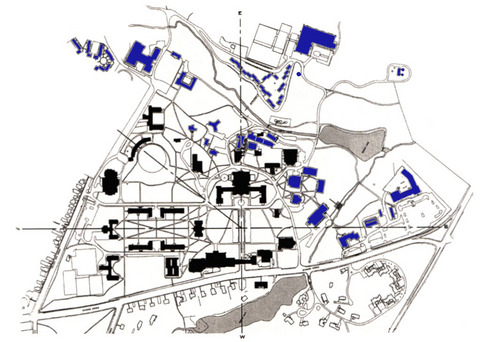
Figure II, based on the top figure "Diagram of buildings located along the cardinal axis" of page 31 of Vassar College: An Architectural Tour (New York: Princeton Architectural Press, 2004)
グレーの箇所は川と湖です。メイン・ビルディングの右上にあるのが Sunset Lake、下(西)にあるのが Vassar Lake (元の名は Mill Cove Lake)。ヴァッサー湖と大学のあいだにある広い道が Raymond Avenue です。サンセット湖から北東にのびている川がキャスパーキル、そしてフォンテイン・キルの元の名は Mill-Cove Brook といったので、それはヴァッサー湖とつながっているクリークなのでしょう(自信50パーセント)。ハドソン河はどこにあるかというと、図の下(西)を南北に流れています。下の地図(上が北)だと南北にハドソン河が流れていて、東に大学があります。
目測で、大学からハドソン河まで2マイルは離れていると思われます。
さて、上に引いた文章でよくわからないのは、創設者のヴァッサーの考えに反対して方位に従った建造を進言した初代学長のジュウェットは、南北に流れる大河ハドソンとの関係で校舎を位置づけたのか(なんだかそういうふうな流れで上の文章は解釈しようとしているように見えます)、それとも、それはそれとして、真西とか真東とか、方位を最重要としたのか(そういうふうに自分は読みたいのですが)、です。ちなみにジュウェットの名を冠した5番目の寮は当初 "North" という名でしたが、図の南北方向(水平方向)の軸の上に、ということは、東西の中心として位置づけられているように見えます。
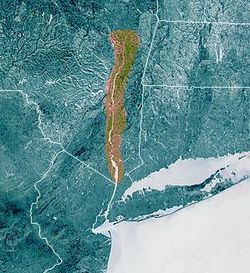
The Hudson River Valley, image via "Hudson Valley," Wikipedia <http://en.wikipedia.org/wiki/Hudson_Valley>
☆ ☆ ☆
建物の方位で、ヨーロッパ文化において伝統的に際立っているのは、キリスト教の教会です。すなわち、祭壇は東を向くように建造され、教会堂の入口は西でした。太陽がのぼる東を向いて礼拝するのは異教の習慣をいれたのだ、という批判(?)がなされうるかもしれませんが、キリスト教会は、「主の栄光は東から」(「エゼキエル書」43章)を典拠として正当化した、とされています。
はじめ、はじめチャペルがメイン・ビルディング内にあったということと関係するのかなあ、とも思ったのですけれど、ジュウェットのいう「教育の力 educating force」は、どうも純粋に宗教的なものとも思えないような気もします。それとも結局のところ宗教的なものが背後にあったのかしら。
『あしながおじさん』3年生の4月の末ごろの手紙に、夜明け前に2マイル歩いて山(One Tree Hill 一ツ木山?)に登り、太陽サンサンご来光を仰ぐエピソードが出てきます。ひそかな太陽神崇拝があったのでしょうか(w)。
226-e3ff3.jpg)
Daddy-Long-Legs (Century, 1912) 226
写真家アルヴィン・ラングドン・コバーンについての覚え書 A Note on the Life of Alvin Langdon Coburn [Marginalia 余白に]
〔いちおう「拝啓着物柱様 Dear Clothes-Pole」のあとの「シルバニアファミリーのものほしセット――拝啓クローズ・ポール(着物柱)様、パート2 Dear Clothes-Pole, Part 2」に載せた写真家コバーンのものほしざお写真から派生したものです。〕
アルヴィン・ラングドン・コバーン Alvin Langdon Coburn, 1882-1966?はアメリカ生まれの写真家です(最晩年にイギリスに帰化)。ボストンのシャツ製造会社の息子に生まれ、7歳のときに創業者の父親が死去、1890年に母方の親戚のいるロサンゼルスに行ったときに、おじさんたちからカメラをプレゼントされ、少年はたちまち写真に魅了されます。1898年、既に国際的に名の知られていた親戚(いとこ)のF. Holland Day?を訪問し、写真の技術を認められます。1899年、母親とロンドンへ移住。そこには王立写真協会 Royal Photographic Society?に招聘されていたDay がいて、アメリカの写真家たちの作品を集めた展覧会の企画の仕事をしていました。その展覧会に若干17歳のコバーンの作品も展示されることになり、華々しいデビューを飾ります。当時もっとも尊敬されていた写真家である Frederick H. Evans, 1853-1943?の目に留まり、エヴァンズらが創設していた写真家グループ Linked Ring の展覧会にも出品します。エヴァンズという人は、教会建築などの写真で有名ですが、ビアズリー (1872-98) の肖像なども撮影しているひとです。――
.jpg)
Frederick H. Evans, Aubrey Beardsley (1894) ![]() Estate of Frederick H. Evans
Estate of Frederick H. Evans
その後、国際的に活躍し、有名なスティーグリッツの雑誌 Camera Work に掲載されたり、スティーグリッツによって個展を開いたり、1910年のニューヨーク州バッファローのAlbright-Knox Art Gallery での展覧会のあと、アメリカ国内を旅行してグランド・キャニオンやヨセミテなどで「自然」の写真を撮ります。1911年、ニューヨークで街の写真を撮影、1912年には写真集 New York を出版(これにおさめられた『タコ The Octopus』が彼の最も有名な写真のようです)。1912年、ボストンの Edith Wightman Clement という女性と結婚。
コバーンというひとが個人的に興味深いのは、1916年ごろからの神秘主義や神秘思想への傾倒です。1916年という年は、いっぽうで詩人のエズラ・パウンドと知り合い、パウンドの影響を受けて、ヴォーティシズムの写真における実践を試みた年です。1913年、パウンドによって Vorticism の名称を与えられたイギリスの前衛的な美術運動は、1914年に機関誌 Blast を創刊したグループ自体は、1915年の第2号の刊行とロンドンのドレ・ギャラリーでの展覧会ののち解散していますが、パウンドはコバーンに新たな可能性を見たのかもしれません。3枚の鏡をはめこんだ機材を用いて撮られたコバーンの写真はパウンドによって Vortograph と呼ばれました。
コバーンは abstract photgraph というコトバのでてくるエッセイ "The Future of Pictorial Photography" を1916年に書いて、イメジの外側に指示対象をもつのではなくて、イメジの下にある形態や構造を強調することを説いており、パウンドとの出会いは、コバーンの「抽象写真」に影響を与えたわけでしょうが、同じ年に、写真家のジョージ・デイヴィッソン George Davison, 1854-1930?と親しくなってもいます。デイヴィッソンは Linked Ring の創立にかかわったひとでもあったのですが、その後イーストマン・コダック社の管理職になりながら、博愛主義者として社会改良運動に傾倒してアナキストと関係をもったために会社を追われます(最終的には1912年)。それはそれとして(ちょっと『あしながおじさん』のなかの philanthropy や socialism を思わせるのですが)、デイヴィッソンがコバーンに与えた影響は、彼が神智学者でもあった(あとはおまけにフリーメイソンでもあった)ところで、コバーンは神秘思想やドルイドの研究にのめりこんでいくのです。
1920年ごろにはフリーメイソンのなかで Royal Arch Mason の位階にのぼっています。さらに、薔薇十字運動の流れをくむと称する、スコットランド起源の?Societas Rosicruciana に入会。Societas Rosicruciana というのは、フリーメイソンの第三位階である親方 Master Mason のみが加入できる交友組織です。1923年、the Universal Order という秘密結社の人物と出会い、その後の人生に決定的な影響を受けたといわれています。the Universal Order というのは季刊誌 The Shrine of Wisdom: A Quarterly Devoted to Synthetic Philosophy, Religion & Mysticism (これの1920~30年代のバックナンバーを Kessinger が復刻しています)刊行しているくらいですから、めちゃくちゃ秘密の結社だとは思いませんけれど、この人物は謎のままです。コバーンはさらにフリーメイソンの歴史や古代祭儀やオカルトの研究に没頭するようになり、多数の講演活動や調査旅行を行なったりします。1927年、Gorsedd (ゴーセズ:古代ウェールズにおける吟遊詩人とドルイド僧の祭を19世紀に復活させた集会)において名誉第三級吟遊詩人となり、ウェールズ名、Maby-y-Trioedd を取得。1930年ごろには写真に対する興味はほとんどなくなっており、過去は無意味と考えて、ネガなどを処分すると同時に、コレクションを王立写真協会に寄贈。1957年10月11日、結婚45周年の日に妻のイーディスが逝去。1966年、北ウェールズの自宅でコバーン死去。享年84。
コバーンの生涯をふりかえって、神秘主義への傾倒でちょっと類推関係を感じるのは、アメリカの作家のハムリン・ガーランドやウィンストン・チャーチル(同名の英国首相のいとこの)なのですが――神秘思想に傾倒する作家は多いのですけれど、それによって過去の自分の芸術的営みを無意味化する身ぶりが気になるのです――、話が錯綜するので、またそれは別の機会があれば、と思います。
タコに落ちる摩天楼の影 The Shadow of the Skyscraper on the Octopus [Marginalia 余白に]
1912年に出版されたアルヴィン・ラングドン・コバーンの写真集 New York におさめられた『タコ The Octopus』(リンク先は Heilbrunn Timeline of Art History; 別url <http://www.metmuseum.org/toah/hd/pict/ho_1987.1100.13.htm>)は、冬の雪に覆われたニューヨーク、マンハッタンのマディソン・スクウェア・パーク Madison Square Park を俯瞰的に切り取ったものです。
.jpg)
"Alvin Langdon Coburn: The Octopus (1987.1100.13)". In Heilbrunn Timeline of Art History. New York: The Metropolitan Museum of Art, 2000–. <http://www.metmuseum.org/toah/hd/pict/ho_1987.1100.13.htm>
タコというと、19世紀後半にアメリカに広がった鉄道網をタコにたとえた作家フランク・ノリスの The Octopus が有名ですが、コバーンのタコは公園のセンターとそこから放射状に延びる道の様子をタコに見立てている模様です。
しかし画面の左半分に巨大な影が落ちています。ニューヨークという都会の摩天楼の影です。雪は空から降ってくる。摩天楼 skyscraper というのはその空を引っ掻く (scrape) ような高さを誇る建物のことです。
ウィキペディアで「摩天楼」を調べようとすると「超高層建築物」 <http://ja.wikipedia.org/wiki/%E8%B6%85%E9%AB%98%E5%B1%A4%E5%BB%BA%E7%AF%89%E7%89%A9>というミモフタモナイ名前の項目に飛ばされるのですが、そこには、歴史的なリストが挙がっていて、ニューヨーク関係では、リストのトップにあがっている1873年の8階建て43m のエクイタブル生命ビル (1912年解体)、1890年の20階106mのニューヨークワールドビル(1955年解体)、1894年の18階建て106mのマンハッタン生命保険ビル (1930年解体)、1899年の30階建て119mバークロービル、そして世紀が変わって1908年の47階187mのシンガービル (1968年解体)、1909年の50階213mのメトロポリタン生命保険会社タワーというのが、1912年の時点(ちなみにたまたまこの年は『あしながおじさん』出版の年でもあります)でニューヨーク市に建っていた「摩天楼」群だということがわかります(最初の8階建て程度のものはその後たくさんつくられたでしょうから、歴史的な意味合いで載っているのでしょう)。
で、最後のメトロポリタン生命保険会社タワー (Metropolitan Life Insurance Company Tower) がマディソン・スクウェアに影を落としているのではないかな、と見当をつけて、現代の地図を見てみました。――
A地点が、40°44′28.49″N 73°59′14.76″W / 40.7412472°N 73.9874333°W
| |
にある、Met Life Tower です。なんか緑がだいぶ多くなっています(季節の問題ではおそらくなく)。
このタワーは、1893年完成の11階建ての建物に付け足された建造物で、ヴェニスのサン・マルコ広場の鐘楼(カンパニーレ)を模してつくられ(つーことはバークレーのセイザー・タワーと同じですね――「March 18 バークレーのセイザータワー The Sather Tower in UC Berkeley」参照)、時鐘というか鐘楼というか鐘塔としては鐘ではなくて4面に直径8mの時計をはめこんでいます。
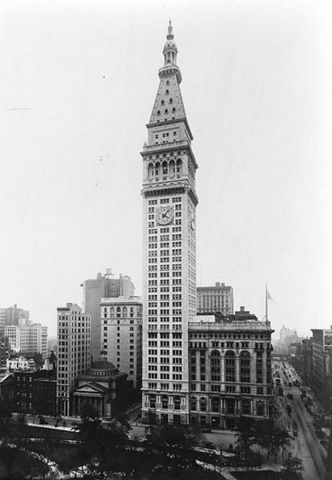
メトロポリタン生命保険会社タワー (Metropolitan Life Insurance Company Tower), "Metropolitan Life Bldg., Manhattan, New York City, in 1911," image via Wikipedia <http://en.wikipedia.org/wiki/File:Met_life_tower_crop.jpg>
1911年ごろのようす。
なんだか、地図が違っているような不安がありますけれど、ともかく、摩天楼の影はこのタワーであると思います。
タコというのは欧米人にとっては悪魔のイメジということはよく言われてきましたけれど、そういうのを引きずっているのかは不明です。しかし、海のイメジと空のイメジがぶつかっているということは言えるのでしょう。そして水平的に広がっていったノリス的なタコ(鉄道)に対して、垂直的に広がる人間の野心みたいなものを映しているのかもしれないな、と思いました。
高さ213mというのは700フィートです。1913年の Woolworth ビルの建造まで、このタワーが世界一の高さの建造物だったのだそうです。
/////////////////////////////
メモ的 urls―
Frank Norris, The Octopus: A Story of California (1901) e-text <http://www.archive.org/stream/octopus00norr#page/n5/mode/2up>
Herman Melville, "The Bell-Tower," The Piazza Tales (1856) e-text <http://www.archive.org/stream/piazztales00melvrich#page/400/mode/2up/search/bell+tower>
「「時計」の文学論 - 教授のおすすめ!セレクトショップ」 <http://plaza.rakuten.co.jp/professor306/diary/200911210000/> 〔 釈迦楽先生のブログ2009.11.21 〕
「今週の本棚:富山太佳夫・評 『ワシントン・アーヴィングと…』/『時の娘たち』 - 毎日jp(毎日新聞)」 <http://mainichi.jp/enta/book/hondana/archive/news/2005/08/20050807ddm015070156000c.html> 〔書評 2005.8.7〕
岡村仁一 「「平地からは見えない光景」――ハーマン・メルヴィルの「鐘塔」について」 『新潟大学言語文化研究』pdf. <http://dspace.lib.niigata-u.ac.jp/dspace/bitstream/10191/6000/1/06_0001.pdf>
モーリス・ブランショ 「メルヴィルの魔法」(『日曜風景』誌連載、<本>、モーリス・ブランショ、1945年12月16日、3頁所収) <http://www.geocities.co.jp/CollegeLife/4761/Melvillepaysdimanche.htm>
風間賢二 「オートマトンが怖い!」 文学と科学のインタフェイス2) 季刊 環境情報誌ネイチャーインタフェイス No. 5 <http://www.natureinterface.com/j/ni05/P90-91/>
カガンボ、ガガンボ、アメンボ [Marginalia 余白に]
以前、『あしながおじさん』のアシナガオジサンがガガンボではなくてザトウムシ(メクラグモ)であることを論証wしようとしたときに(記事「ダディーロングレッグズ (1) Daddy-Long-Legs」&その改増版)、既訳を並べたなかで、新潮文庫の松本恵子の訳文を、つぎのように書き写しました。――
松本恵子 (1954) は「足長とんぼ」と「あしながおじさん[ルビ: ダディ・ロング・レグズ](割注: *かがんぼ [sic])」。
厨川圭子なんかは「大蚊」にルビで「ががんぼ」と振っていたのでした。――
厨川圭子 (1955) は「大蚊[ルビ: ががんぼ]」と「本物の「あしながおじさん」(大蚊[ルビ: ががんぼ)」。
松本恵子の「かがんぼ」は誤植かと思っていたのですが、まもなく「かがんぼ」がもともとで、「ががんぼ」はそれがなまったものらしい、と知りました。
それでも、詳しく調べることはせずに、「かがみ坊」のなまったものかな、と自分勝手に思っていました。「あめん坊」と同じ坊主の仲間かとw。
ところがっ。『大辞泉』は語源について「《「蚊ヶ母(かがんぼ)」の意から転じた語》」としています。蚊の母か。でかいからか。
『大辞林』は同義語として、「カノオバ。カガンボ。カトンボ。」を並べています。ひとつめの「カノオバ」というのは「蚊のおば(叔母・伯母・小母)」(さん)か、「蚊の姥・祖母」でしょうから、坊じゃないのね。しかし、「カノオバ」における助詞の「の」や「オバ」に比べて、「カガンボ」の「が」や音読みの「ボ (母)」――ふつうに母のことを「ボ」とは呼ばんやろう、日本人は――はなんかカタクって、不自然な感じがしなくもないです。まあ、古語のころから呼称があったということか。でかい辞典を調べてみようとは思います。・・・・・・
そして、アメンボのほうも気になって調べました。こちらも勝手な個人的連想では、雨のあとの水たまりにどこからともなくやってきてスイスイと浮かんでいる姿が幼いころの記憶にあり(東京の国分寺界隈、遠い目)、「雨」がらみとばかり思っていました。
ところがっ。アメンボは飴坊で、雨ん坊ではないみたいなのでした。アメンボ(アメンボウ)はカメムシに近いところがあって、「外見は科によって異なるが、翅や口吻など体の基本的な構造はカメムシ類と同じである。カメムシ類とはいかないまでも体に臭腺を持っており、捕えると匂いを放つ。「アメンボ」という呼称も、この匂いが飴のようだと捉えられたことに由来する。」(ウィキペディア「アメンボ類」)。ふーん。カメムシ類とは「いかないまでも」カメムシ類と同じか。捕まえたことがなかったからか、そんな連想はぜんぜん働きませんでした。
ちなみに英語だとアメンボは water strider とか water spider とかいくつか呼び名があるみたいです。
ウィキペディアは漢字「水黽、水馬、飴坊」を挙げているけれど、「アメンボウ」の読みは示しておらないです。広辞苑で「あめんぼう」を見ると「飴ん坊」で、①棒状につくった飴菓子、②「つらら」の異称。たれんぼう、と書かれています。たれんぼう。あまえんぼう。さびしんぼう。うろたえて一つ前の「あめんぼ」を見ると、漢字は「水黽」しか挙げていないくせに、「飴のような臭いを出す。・・・・・・アメンボウ。カワグモ。水馬。」と書かれておる。
ガガンボのほうは――「【大蚊】(カガンボとも)ハエ目ガガンボ科の昆虫。カに似るがはるかに大きく、血を吸わない。脚は長くもげやすい。・・・・・・カノウバ。カノオバ。カトンボ。」
「カノオバ」に加えて「カノウバ」が挙がっています。ウバが乳母か姥かはわかりませんな。
で、ガガンボウというつづりは挙がっていないけれど、WEB で検索すると、うちの地方ではガガンボウと呼びます、みたいな発言がけっこうあって、アメンボ/アメンボウみたいにガガンボ/ガガンボウという両方の呼び名があるみたい。仮に「蚊が母」(が=の・・・・・・我が母みたいに)という語源説が正しいとして、そのボ(母)はボウ(坊)にジェンダー転換してしまうってことでしょうか、民衆の想像力のなかでは(そんなおおげさなものではない)。
ポンチョ・雨ん坊 #3300
特価:4,050円(税込) フクヨシ特価:3,000円(税込) image via ユニフォームのフクヨシ
<http://store.shopping.yahoo.co.jp/e-fukuyoshi/470.html>
天の父と地の父――『緋文字』のばあい(1) (母と娘の会話) Your Heavenly Father and Your Earthly Father in _The Scarlet Letter_: A Conversation Between a Mother and a Daughter [Marginalia 余白に]
〔記事「『あしながおじさん』における神 (第3のノート) 」と「天にまします我らの父――主の祈り Our Father in Heaven: Lord's Prayer」につづく記事「父なる神 God the Father」につづく記事「天の父と地の父(母と娘の会話)――『若草物語』のばあい Your Heavenly Father and Your Earthly Father in _Little Women_: A Conversation Between a Mother and a Daughter」に並ぶものです〕
ナサニエル・ホーソーンの代表作『緋文字』 (1850) は17世紀中ごろのアメリカ植民地を舞台にした歴史ロマンスで、独身の牧師と姦通を犯して女の子パールを産んだ若い人妻のへスター・プリンが赤ん坊を抱いてさらし台に立たされているところから物語は始まり、7年間ぐらいのスパンを全24章でまったりねちねちと描いて、完全な善玉・悪玉、100パーセント好意的に感情移入できるヒーローもヒロインもいない、暗く曖昧な作品となっています。
Frederick C. Gordon, illust. The Scarlet Letter (New York: Frederick A. Stokes,1893), p. 70――赤ん坊のパールを抱き、胸にAdultery (姦通)の頭文字の A の刺繍をつけてさらし台に立つへスター
第6章「パール」――
パールをじっと見ていると、へスター・プリンは手にしている針仕事を思わず膝に落として、隠しておきたいと思う苦しみが言葉とも呻きともつかぬ声となって、泣きさけぶことがよくあった。「おお、<天にまします父>よ、もしいまも<あなた>がわたしの<父>でいてくださるのならお答えください。わたしがこの世に生み落としたこの子供は何者でございましょう。」・・・・・・
(Gazing at Pearl, Hester Prynne often dropped her work upon her knees, and cried out with an agony which she would fain have hidden, but which made utterance for itself betwixt speech and a groan—"O Father in Heaven—if Thou art still my Father—what is this being which I have brought into the world?" And Pearl, overhearing the ejaculation, or aware through some more subtile channel, of those throbs of anguish, would turn her vivid and beautiful little face upon her mother, smile with sprite-like intelligence, and resume her play.)
これがこの章の9段落目です。ちょっとあとの13段落目から章の最後の26段落目のひとつ前の25段落までの母と娘の会話(ねちっこい語り手のコメントの段落は日本語訳からは落とします)。――
「おまえ。おまえはいったいなんなの」と母親は叫んだ。
「あたしお母さんのちいちゃなパールよ!」と子供は答えた。
・・・・・・
「おまえはわたしの子供なの、ほんとうに?」とへスターは尋ねた。
・・・・・・
「ええ、あたしちいちゃなパールよ!」と、おどけた身ぶりをやめずに子供はくりかえした。
「おまえはわたしの子供じゃない! おまえはわたしのパールじゃない」と母親はなかば遊ぶように言った。へスターは、深い苦悩の底にいるときにも戯れの衝動が起こることがあった。「教えてよ、おまえはなんなの? 誰がここへつれてきたの?」
「お母さんが教えてよ!」と子供は真剣に、へスターのそばに寄ってきて、膝にからだをすりつけた。「教えてちょうだい!」
「おまえの<天のお父さま>よ!」とへスター・プリンは答えた。
・・・・・・
「<彼> 〔天のお父さま〕じゃない!」とパールは強い調子で叫んだ。「あたしには<天のお父さま>なんかいない!」
「おだまり、パール、おだまり! そんなことを言ってはいけません!」と母親は呻き声を抑えながら言った。「<彼> 〔天のお父さま〕が皆を世界に送ってくださったのです。わたしだって、おまえのお母さんだってです。だから、おまえならなおさらだわ! そうでないというなら、おまえのような、ヘンな、妖精のような子は、どこから来たのです?」
「教えて、教えて!」とパールはくりかえしたが、もはや本気ではなくて、笑いながら床のうえを跳ねていた。「お母さんなら知っているはず!」
("Child, what art thou?" cried the mother.
"Oh, I am your little Pearl!" answered the child.
But while she said it, Pearl laughed, and began to dance up and down with the humoursome gesticulation of a little imp, whose next freak might be to fly up the chimney.
"Art thou my child, in very truth?" asked Hester.
Nor did she put the question altogether idly, but, for the moment, with a portion of genuine earnestness; for, such was Pearl's wonderful intelligence, that her mother half doubted whether she were not acquainted with the secret spell of her existence, and might not now reveal herself.
"Yes; I am little Pearl!" repeated the child, continuing her antics.
"Thou art not my child! Thou art no Pearl of mine!" said the mother half playfully; for it was often the case that a sportive impulse came over her in the midst of her deepest suffering. "Tell me, then, what thou art, and who sent thee hither?"
"Tell me, mother!" said the child, seriously, coming up to Hester, and pressing herself close to her knees. "Do thou tell me!"
"Thy Heavenly Father sent thee!" answered Hester Prynne.
But she said it with a hesitation that did not escape the acuteness of the child. Whether moved only by her ordinary freakishness, or because an evil spirit prompted her, she put up her small forefinger and touched the scarlet letter.
"He did not send me!" cried she, positively. "I have no
Heavenly Father!"
"Hush, Pearl, hush! Thou must not talk so!" answered the mother, suppressing a groan. "He sent us all into the world. He sent even me, thy mother. Then, much more thee! Or, if not, thou strange and elfish child, whence didst thou come?"
"Tell me! Tell me!" repeated Pearl, no longer seriously, but laughing and capering about the floor. "It is thou that must tell me!"
But Hester could not resolve the query, being herself in a dismal labyrinth of doubt. She remembered—betwixt a smile and a shudder—the talk of the neighbouring townspeople, who, seeking vainly elsewhere for the child's paternity, and observing some of her odd attributes, had given out that poor little Pearl was a demon offspring: such as, ever since old Catholic times, had occasionally been seen on earth, through the agency of their mother's sin, and to promote some foul and wicked purpose. Luther, according to the scandal of his monkish enemies, was a brat of that hellish breed; nor was Pearl the only child to whom this inauspicious origin was assigned among the New England Puritans.)
12720-20E382B3E38394E383BC.JPG)
Frederick C. Gordon, illust. The Scarlet Letter (p. 127)――母親の胸に付けられた A をめがけて花の矢を投げ続ける娘のパール・・・・・・えっと、このときに娘のパールは3歳なんで、ちょっと画は大きすぎるように思いますが、ともあれ、このときに上記の母と娘の会話は起こります。
え? 地の父が出てこない? そーなんです。記憶のなかには対比的にあったのですが・・・・・・。ま、隠蔽されている、ということで・・・・・・。と逃げようと思うと、実は最後の段落で、ホーソーンは意外な「父」に言及します(原文は上の英語の最後のパラグラフ)。――
けれどもヘスターは疑惑の陰鬱な迷宮に入り込んで、質問に答えることができなかった。彼女は近隣のひとびとの話していたことを――微笑とも身震いともつかない状態で――思い起こした。子供の父親がどこにも見つからないことと、この子供の奇妙な性質をいくらか見聞きしていたので、ひとびとは、かわいそうな小さなパールは悪魔の子 (demon offspring) だと言いふらしていた。昔のカトリックの時代から、母親の罪のせいでときおりそんな子供が生まれ、なにか汚れた邪悪な計画を促進するために地上に送られてくるといわれる。ルターも反対派の修道僧の悪口によれば、地獄の申し子であり、ニューイングランドのピューリタンたちのあいだではパールもこの不吉な起源に帰せられる唯一の子供というわけではなかったのである。
ここでの想像力は天上と地上、というにとどまらず、地下へ、地獄へと降下して、神と悪魔の対立の緊張状態のなかに人の世たる地上がイメジされているのでした。
午後4時追記――
えーと、ホーソーンのほうがルイーザ・メイ・オールコットよりもよかれあしかれ観念的で、地上的なできごとの背後に神と悪魔(の構図)を透かし見る、だから(はしょって言うと)ホーソーンはロマンス的で、オルコットはノヴェル的なリアリズムへさしかかっている、ということを言いたいわけではないです(言ってもいいけど)。オルコットをこのごろ読んでいるのですけれど、いっぽうで父親と親和的だったアメリカ超絶主義の影響とともに、やっぱり父の代で親交があったホーソーンの影響を、作家的にむしろ前者より多分に、受けている感じがします。それは具体的には、フロイト以前にフロイト的といわれるホーソーンの psychological な人間理解です。話が長くなりそうなのでやめますけれど、たとえば、悪魔と契約するとか悪魔や悪霊が憑依するとかいう「物語」が、人間の心(魂)のうちなる悪魔(ヒユだけど)みたいなところに変化していく、結果、ゴシック的超自然が心理化・人間内在化するというような流れ。
////////////////////////////////////////
Nathaniel Hawthorne, The Scarlet Letter 初版 (Boston: Ticknor, Reed, and Fields, 1850) のE-text @ Internet Archive <http://www.archive.org/stream/letterromscarlet00hawtrich#page/n5/mode/2up>
The Scarlet Letter: A Romance by Nathaniel Hawthorne. Vignette Edition, with One Hundred New Illustrations by Frederick C. Gordon. New York: Frederick A. Stokes, 1893. <http://www.archive.org/stream/romancescarlet00hawtrich#page/n5/mode/2up>
E-text at Project Gutenberg <http://www.gutenberg.org/cache/epub/33/pg33.html>
シュワー――フランシスとフランセス Schwa: Francis and Frances [Marginalia 余白に]
Frances というのは女の名前で、『秘密の花園』と『白いひと』を書いた女性作家 Frances Hodgson Burnett やヨーロッパの神秘主義思想史の卓越した研究者であったFrances Yates が個人的には親しい。Francis というのは男の名前で、個人的に親しいのは・・・・・・うーん、作家のFrancis Scott Fitzgerald とアメリカ国歌を作曲した Francis Scott Key ですか(ちょっとわざとらしー)。
Frances と Francis の e と i の母音(字)部分は、普及している発音記号だとどちらも同じ /ə/ で表記されます。モーリちゃんの父は英語音声学は何十年も前に習ったキリで、あとドイツ語やスペイン語の学生と一緒に実験音声学の機材を作り損ねてしょうがなく秋葉原まで修理に行ったりとか、音声関係苦手なんすけど、/ə/を「シュワー」と呼び、「曖昧母音」と称するというくらいの知識はあったつもりでした。
んが、ウィキペディアを見ると、曖昧母音と等号で結ばれるのではないことを数十年ぶりに知りました。――
シュワー(schwa)とは母音の一つ。またはその音を表す音声記号・文字 ə のことを指す。ただし、その対象には二つのものがある。同じ記号で表されても両者は同じではない。
一つは国際音声記号によって定められた中舌で口の開きの度合いも中間的な中央母音 [ə] を指す。これを中舌中央母音(なかじた・ちゅうおうぼいん)または中段中舌母音(ちゅうだん・なかじたぼいん)という。
またもう一つは曖昧母音(あいまいぼいん)とも呼ばれ、各言語において見られるはっきりとした特徴のない中性的な母音のことをいう。言語によっては前述の中舌中央母音 [ə] でないこともあるが、音素表記では /ə/ と書かれることが多い。
この曖昧母音を音素としてもつ言語の発音を日本語で表記する場合、「ア段」または「ウ段」「オ段」で表記される。
〔「シュワー - ウィキペディア」〕
ふーん。中段なんたら母音 (mid-central vowel) と曖昧母音は違うので、前者については「シュワー」と言わずに中舌中央母音とか中段中舌母音と呼ぶみたいですね。
まー、なんだかよくわからないけれど、英語の Wikipedia のFrancis の記事を見ると、冒頭の記述はこんな感じ――
Francis is a French and English first name and a surname of Latin origin.
Francis is a name that has many derivatives in most European languages. The female version of the name in English is Frances, and (less commonly) Francine. (For most speakers, Francis and Frances are homophones or near homophones; a popular mnemonic for the spelling is "i for him and e for her".) The name Fran is a common diminutive for Francis, Frances and Francine. In Italian and Spanish, the form Fran is mostly used for boys and men, while Franci is more common for girls and women. 〔"Francis -Wikipedia"〕
つまり、この名前の英語の女性版 (female version) は Frances (あと Francine)で、たいがいの話者にとって Francis と Frances は "homophones" 〔同音語〕あるいは "near homophones" 、それで、よくある区別法(記憶法)は彼に (him) はi で彼女に (her) は e。
Francis の発音のIPA (国際音声記号〔字母〕)表記は /fræncəs/ 、Frances のほうは(も) /fræncəs/(æ のストレス省略)。あー、いまリーダーズ英和をみたら、どっちも「フランシス」と表記されてました。
さて、第一に発音記号が同一だからって現実に同一の発音とは限らないということがあります。それを前もって言っておきます。
そして、日本では表記を微妙に変えることによって意味や指示対象の違いを示すというあたりまえといえばあたりまえですが、でも美しくオシャレな伝統がありました(し、あります)。バレエ〔舞踏の〕とバレー〔ボール〕とか、アイロン〔家政の〕とアイアン〔ゴルフの〕とか、シャベル〔庭の〕とショべル〔建築の〕とか(最後の例は英語 shovel の発音表記としては「シャ」が圧倒的に正しいのだけれど)。
で、フランシスは男、フランセスは女、という了解が昔はあったように思われます。あるいは――聖フランシスとかサンフランシスコとかいう男性表記が確立された時点で、意識的にか無意識的にか心あるひとびとが女性を「フランセス」と表記して区別しようとした歴史があったように思われます。
ウィキペディアの「シュワー」の記事の、「この曖昧母音を音素としてもつ言語の発音を日本語で表記する場合、「ア段」または「ウ段」「オ段」で表記される。」という記述は、なんたら母音と曖昧母音の新たな区別が自分にはよくわからないので、英語の場合のたとえば Watson の "o" がどっちなんだかわからないので、結果よくわからないのだけれど、ホームズの相棒の「ワトソン」「ワトスン」という表記にカラムように思われます。
しかし、フランシスとフランセスは「イ段」または「オエ段」なんだが・・・・・・なんだかなー。
ひるがえって、発音記号が同じだから、どっちも「フランシス」で統一するべきだ、というのはおかしいと思うわけです、絶対に。
"The IPA Symbol for the Schwa" image via "Schwa - Wikipedia" <http://en.wikipedia.org/wiki/Schwa>
///////////////////////
むかしの関連記事(?)――
「July 15 ユニセックスな名前と発音の微妙な問題 Pronouncing Leslie, a unisex name [名前 names]」 (2008.7.15@カリフォルニア時間)
紬(Tsumugi) に恥をさらした後日談 [Marginalia 余白に]
紬(Tsumugi) - 外国人名対訳辞書(自動編纂)、q.v. 「グイド・レニ」 retrieved on Sept. 8, 2010.
「紬(Tsumugi) - 外国人名対訳辞書(自動編纂)に恥をさらす 」を書いたあと、3週間ほどたった今日の朝、開いてみたら、Guide Reni の件数がこの記事自体のために3件増えていた(下の [03][04][05])。精確に書くと、「AND数 6件, 調査数 2件, 確認数 2件, 推定数 2件.
」→「AND数 20件, 調査数 7件, 確認数 7件, 推定数 7件. 」――
Tsumugi は外国語固有「人名に対して、すでにカタカナ訳があるかどうか、複数のカタカナ訳がある場合は、それらの使用や定着の度合」を示すことを目的とする自動生成辞書である。自動生成だからって、「グイド・レニを誤って Guide Reni と綴ったら」と綴った箇所を根拠にグイド・レニの原語は Guido Reni ではなくて Guide Reni かも、という(個人的には恥さらしの、一般的には虚偽の)印象を増やしてもいいのだろうか。
しかも、不条理を感じつつも自らの反省とともに確認したら、わたくしめはちゃんと過去記事を誠意をもって訂正しておりました(えへん)――上が3月10日の、下が2月16日――
「大天使ミカエルが踏みつぶすものたち(1) Those Whom the Archangel Michael Treads (1) [ひまつぶし]」
よくわからないのは、(1) 元記事を情報的に反芻するブログランキングとかブログ検索とかと紬の確率設定基準の関係、(2) なんで2月16日の「大天使ミカエルのこと」のほうは refer されないか、なのですけれど、まあ、あまたある検索エンジン同様の深遠な秘密があるのかもしれません。あと (3) 同じソースからは2度とはカウントしないのかしら。
それにしても、元の記事を誠意をもって訂正するとともに、間違っていたことを訂正する記事を書いた行為に対して、この仕打ちはなんなんだw。違うっちゅうとんのに~。
で、こういうふうにまた書いたものが上記(3) みたいなことで反映されないかどうか、ジッと見守ってみようと思う日曜の昼下がりだったのでした。
Guide Reni のほうだったらされないほうがいいのかも。だって、なるほど紬の主旨はある原語の日本語表記の特定にあるかもしらんけど、記述としてはカタカナ日本語表記の原語は何かという情報も与えているわけで、間違った原語を指示する数値が上がってしまったら困りますよね。
紬(Tsumugi) - 外国人名対訳辞書(自動編纂)、q.v. 「グイド・レニ」 retrieved on Oct. 3, 2010.
あー、また、である調が途中からですますに変わってしまったであります。
「エドガー・A・ポーの死」――N・P・ウィリスのポー追悼文 "Death of Edgar A. Poe" (1849) by Nathaniel P. Willis [Marginalia 余白に]
ニューヨークの新聞・雑誌編集者だったナサニエル・P・ウィリス Nathaniel Parker Willis, 1806-67 は1844年にポーを『イヴニング・ミラー』紙の "paragrapher" (一種の編集助手――ウィリスの文章だと "sub-editor")として雇っていて、3つほど歳のちがうポーと親交がありました。手紙のやりとりも続けていました。ポーはエッセイ「ニューヨーク市の文人たち」や「直筆署名」でウィリスをとりあげていることはポー事典も指摘しています。でも指摘していないことだけれど、ウィリスがあてこすられている短篇小説もいくつもあるみたいです。そのあてこすりは、しかし、友人関係を壊すほどのものではなかった(とはウィリスは受け止めなかった)ようです。
ポーが1849年の10月7日に亡くなって、文学的遺産管財人となるルーファス・ウィルモット・グリズウォルド Rufus Wilmot Griswold, 1815-57 は、ポーに対する誹謗中傷をしだいに募らせていくわけですけれど、N・P・ウィリスは、グリズウォルドを中心とする人身攻撃に異を唱えたひとりでした(女友達のセイラ・ホイットマン――「イタコのセイラ」参照――がもうひとり)。
1849年10月20日号の『ホーム・ジャーナル Home Journal』でウィリスはポーの追悼文を書きますが、グリズウォルドの早速の中傷文章を引用して反駁しています。――
The ancient fable of two antagonistic spirits imprisoned in one body, equally powerful and having the complete mastery by turns-of one man, that is to say, inhabited by both a devil and an angel seems to have been realized, if all we hear is true, in the character of the extraordinary man whose name we have written above. Our own impression of the nature of Edgar A. Poe, differs in some important degree, however, from that which has been generally conveyed in the notices of his death. Let us, before telling what we personally know of him, copy a graphic and highly finished portraiture, from the pen of Dr. Rufus W. Griswold, which appeared in a recent number of the Tribune:
“Edgar Allen Poe is dead. He died in Baltimore on Sunday, October 7th. This announcement will startle many, but few will be grieved by it. The poet was known, personally or by reputation, in all this country; he had readers in England and in several of the states of Continental Europe; but he had few or no friends; and the regrets for his death will be suggested principally by the consideration that in him literary art has lost one of its most brilliant but erratic stars. (エドガー・アランポーが亡くなった。10月7日の日曜日にボルティモアで死去。この通知は多くの人々を驚かせるだろうが、それで悲しむ者はごく少ないだろう。 詩人は、個人として、また評判によって、この国じゅうに知られていた。イギリスと、ヨーロッパ大陸のいくつかの国に読者をもっていた。しかし、彼にはほとんど、あるいはまったく友人がいなかった。・・・・・・)
“His conversation was at times almost supramortal in its eloquence. His voice was modulated with astonishing skill, and his large and variably expressive eyes looked repose or shot fiery tumult into theirs who listened, while his own face glowed, or was changeless in pallor, as his imagination quickened his blood or drew it back frozen to his heart. His imagery was from the worlds which no mortals can see but with the vision of genius. Suddenly starting from a proposition, exactly and sharply defined, in terms of utmost simplicity and clearness, he rejected the forms of customary logic, and by a crystalline process of accretion, built up his ocular demonstrations in forms of gloomiest and ghastliest grandeur, or in those of the most airy and delicious beauty, so minutely and distinctly, yet so rapidly, that the attention which was yielded to him was chained till it stood among his wonderful creations, till he himself dissolved the spell, and brought his hearers back to common and base existence, by vulgar fancies or exhibitions of the ignoblest passion.
“He was at all times a dreamer―dwelling in ideal realms―in heaven or hell―peopled with the creatures and the accidents of his brain. He walked the streets, in madness or melancholy, with lips moving in indistinct curses, or with eyes upturned in passionate prayer (never for himself, for he felt, or professed to feel, that he was already damned, but) for their happiness who at the moment were objects of his idolatry; or with his glances introverted to a heart gnawed with anguish, and with a face shrouded in gloom, he would brave the wildest storms, and all night, with drenched garments and arms beating the winds and rains, would speak as if the spirits that at such times only could be evoked by him from the Aidenn, close by whose portals his disturbed soul sought to forget the ills to which his constitution subjected him―close by the Aidenn where were those he loved―the Aidenn which he might never see, but in fitful glimpses, as its gates opened to receive the less fiery and more happy natures whose destiny to sin did not involve the doom of death. (彼はいつも夢見るひとだった――想像の領域に住んでいた――天国にせよ地獄にせよ――一緒にいたのは自分の脳髄がこしらえた創造物と出来事だった。彼が道を歩くときは、狂気に駆られているか憂鬱に落ちているのか、その唇は不分明な呪詛を吐いてうごめき、うわむきの目が何を情熱的に祈っているのかといえば(自分自身のためでは決してなく、というのも彼は既に地獄落ちの宿命にあると感じていたか感じていると公言していたからで)自分がそのときに崇拝していた偶像たちの幸福のためであった。あるいはまた彼の視線は苦悩でさいなまれる心に内向化され、憂鬱の経帷子に顔を包んだまま、彼は、いかなる激しい嵐にも向かっていった。そして一晩じゅう、びしょ濡れの衣服をまとい両手で風雨を振り払って、こうした時に彼によってあエイデン〔天国〕から呼び出されたとしか思われぬ霊たちにむかってであるかのように話すのだった。天国の扉の近くで、彼の悩める魂はその体が自分を従えさせる悪を忘れようと試みた――彼の愛する者たちがいたエイデンの近くで――彼自身は発作的な一瞥によって以外は垣間見ることの決してかなわない天国であった。なぜなら天国の門が開かれて迎え入れるのはそれほど火のような激情に駆られぬ、もっと幸せな性質のひとびとであって、彼らの罪に対する宿命は死の運命を含んではいなかったからである。)
“He seemed, except when some fitful pursuit subjugated his will and engrossed his faculties, always to bear the memory of some controlling sorrow. The remarkable poem of ‘The Raven’ was probably much more nearly than has been supposed, even by those who were very intimate with him, a reflection and an echo of his own history. He was that bird’s
“ ‘unhappy master whom unmerciful Disaster
Followed fast and followed faster till his songs one burden bore―
Till the dirges of his Hope that melancholy burden bore
Of ‘Never-never more.’
“Every genuine author in a greater or less degree leaves in his works, whatever their design, traces of his personal character: elements of his immortal being, in which the individual survives the person. While we read the pages of the ‘Fall of the House of Usher,’ or of ‘Mesmeric Revelations,’ we see in the solemn and stately gloom which invests one, and in the subtle metaphysical analysis of both, indications of the idiosyncrasies of what was most remarkable and peculiar in the author’s intellectual nature. But we see here only the better phases of his nature, only the symbols of his juster action, for his harsh experience had deprived him of all faith in man or woman. He had made up his mind upon the numberless complexities of the social world, and the whole system with him was an imposture. This conviction gave a direction to his shrewd and naturally unamiable character. Still, though he regarded society as composed altogether of villains, the sharpness of his intellect was not of that kind which enabled him to cope with villany, while it continually caused him by overshots to fail of the success of honesty. He was in many respects like Francis Vivian in Bulwer’s novel of ‘The Caxtons.’ Passion, in him, comprehended -many of the worst emotions which militate against human happiness. You could not contradict him, but you raised quick choler; you could not speak of wealth, but his cheek paled with gnawing envy. The astonishing natural advantages of this poor boy―his beauty, his readiness, the daring spirit that breathed around him like a fiery atmosphere―had raised his constitutional self-confidence into an arrogance that turned his very claims to admiration into prejudices against him. Irascible, envious―bad enough, but not the worst, for these salient angles were all varnished over with a cold, repellant cynicism, his passions vented themselves in sneers. There seemed to him no moral susceptibility; and, what was more remarkable in a proud nature, little or nothing of the true point of honor. He had, to a morbid excess, that, desire to rise which is vulgarly called ambition, but no wish for the esteem or the love of his species; only the hard wish to succeed-not shine, not serve -succeed, that he might have the right to despise a world which galled his self-conceit.
“We have suggested the influence of his aims and vicissitudes upon his literature. It was more conspicuous in his later than in his earlier writings. Nearly all that he wrote in the last two or three years-including much of his best poetry-was in some sense biographical; in draperies of his imagination, those who had taken the trouble to trace his steps, could perceive, but slightly concealed, the figure of himself.”
Apropos of the disparaging portion of the above well-written sketch, let us truthfully say:―
Some four or five years since, when editing a daily paper in this city, Mr. Poe was employed by us, for several months, as critic and sub-editor. This was our first personal acquaintance with him. He resided with his wife and mother at Fordham, a few miles out of town, but was at his desk in the office, from nine in the morning till the evening paper went to press. With the highest admiration for his genius, and a willingness to let it atone for more than ordinary irregularity, we were led by common report to expect a very capricious attention to his duties, and occasionally a scene of violence and difficulty. Time went on, however, and he was invariably punctual and industrious. With his pale, beautiful, and intellectual face, as a reminder of what genius was in him, it was impossible, of course, not to treat him always with deferential courtesy, and, to our occasional request that he would not probe too deep in a criticism, or that he would erase a passage colored too highly with his resentments against society and mankind, he readily and courteously assented-far more yielding than most men, we thought, on points so excusably sensitive. With a prospect of taking the lead in another periodical, he, at last, voluntarily gave up his employment with us, and, through all this considerable period, we had seen but one presentment of the man-a quiet, patient, industrious, and most gentlemanly person, commanding the utmost respect and good feeling by his unvarying deportment and ability.
Residing as he did in the country, we never met Mr. Poe in hours of leisure; but he frequently called on us afterward at our place of business, and we met him often in the street-invariably the same sad mannered, winning and refined gentleman, such as we had always known him. It was by rumor only, up to the day of his death, that we knew of any other development of manner or character. We heard, from one who knew him well (what should be stated in all mention of his lamentable irregularities), that, with a single glass of wine, his whole nature was reversed, the demon became uppermost, and, though none of the usual signs of intoxication were visible, his will was palpably insane. Possessing his reasoning faculties in excited activity, at such times, and seeking his acquaintances with his wonted look and memory, he easily seemed personating only another phase of his natural character, and was accused, accordingly, of insulting arrogance and bad-heartedness. In this reversed character, we repeat, it was never our chance to see him. We know it from hearsay, and we mention it in connection with this sad infirmity of physical constitution; which puts it upon very nearly the ground of a temporary and almost irresponsible insanity.
The arrogance, vanity, and depravity of heart, of which Mr. Poe was generally accused, seem to us referable altogether to this reversed phase of his character. Under that degree of intoxication which only acted upon him by demonizing his sense of truth and right, he doubtless said and did much that was wholly irreconcilable with his better nature; but, when himself, and as we knew him only, his modesty and unaffected humility, as to his own deservings, were a constant charm to his character. His letters, of which the constant application for autographs has taken from us, we are sorry to confess, the greater portion, exhibited this quality very strongly.
In one of the carelessly written notes of which we chance still to retain possession, for instance, he speaks of “The Raven”―that extraordinary poem which electrified the world of imaginative readers, and has become the type of a school of poetry of its own―and, in evident earnest, attributes its success to the few words of commendation with which we had prefaced it in this paper. ―It will throw light on his sane character to give a literal copy of the note:―
“FORDHAM, April 20, 1849.“My dear Willis:―The poem which I inclose, and which I am so vain asto hope you will like, in some respects, has been just published in apaper for which sheer necessity compels me to write, now and then. It pays well as times go-but unquestionably it ought to pay ten prices;for whatever I send it I feel I am consigning to the tomb of theCapulets. The verses accompanying this, may I beg you to take out ofthe tomb, and bring them to light in the ‘Home journal?’ If you can oblige me so far as to copy them, I do not think it will be necessaryto say ‘From the――, ―that would be too bad;―and, perhaps, ‘From a late――paper,’ would do.
“I have not forgotten how a ‘good word in season’ from you made ‘TheRaven,’ and made ‘Ulalume’ (which by-the-way, people have done me thehonor of attributing to you), therefore, I would ask you (if I dared)to say something of these lines if they please you.
“Truly yours ever,
“EDGAR A. POE.”
In double proof of his earnest disposition to do the best for himself, and of the trustful and grateful nature which has been denied him, we give another of the only three of his notes which we chance to retain:―“FORDHAM, January 22, 1848.
“My dear Mr. Willis:―I am about to make an effort at re-establishingmyself in the literary world, and feel that I may depend upon youraid.
“My general aim is to start a Magazine, to be called ‘The Stylus;’ but it would be useless to me, even when established, if not entirelyout of the control of a publisher. I mean, therefore, to get up ajournal which shall be my own at all points. With this end in view, I must get a list of at least five hundred subscribers to begin with;nearly two hundred I have already. I propose, however, to go Southand West, among my personal and literary friends―old college andWest Point acquaintances―and see what I can do. In order to get themeans of taking the first step, I propose to lecture at the Society Library, on Thursday, the 3d of February, and, that there may be nocause of squabbling, my subject shall not be literary at all. I have chosen a broad text―‘The Universe.’
“Having thus given you the facts of the case, I leave all the restto the suggestions of your own tact and generosity. Gratefully, mostgratefully,
“Your friend always,
“EDGAR A. POE.”
Brief and chance-taken as these letters are, we think they sufficiently prove the existence of the very qualities denied to Mr. Poe―humility, willingness to persevere, belief in another’s friendship, and capability of cordial and grateful friendship! Such he assuredly was when sane. Such only he has invariably seemed to us, in all we have happened personally to know of him, through a friendship of five or six years. And so much easier is it to believe what we have seen and known, than what we hear of only, that we remember him but with admiration and respect―these descriptions of him, when morally insane, seeming to us like portraits, painted in sickness, of a man we have only known in health.
But there is another, more touching, and far more forcible evidence that there was goodness in Edgar A. Poe. To reveal it we are obliged to venture upon the lifting of the veil which sacredly covers grief and refinement in poverty; but we think it may be excused, if so we can brighten the memory of the poet, even were there not a more needed and immediate service which it may render to the nearest link broken by his death.
Our first knowledge of Mr. Poe’s removal to this city was by a call which we received from a lady who introduced herself to us as the mother of his wife. She was in search of employment for him, and she excused her errand by mentioning that he was ill, that her daughter was a confirmed invalid, and that their circumstances were such as compelled her taking it upon herself. The countenance of this lady, made beautiful and saintly with an evidently complete giving up of her life to privation and sorrowful tenderness, her gentle and mournful voice urging its plea, her long-forgotten but habitually and unconsciously refined manners, and her appealing and yet appreciative mention of the claims and abilities of her son, disclosed at once the presence of one of those angels upon earth that women in adversity can be. It was a hard fate that she was watching over. Mr. Poe wrote with fastidious difficulty, and in a style too much above the popular level to be well paid. He was always in pecuniary difficulty, and, with his sick wife, frequently in want of the merest necessaries of life. Winter after winter, for years, the most touching sight to us, in this whole city, has been that tireless minister to genius, thinly and insufficiently clad, going from office to office with a poem, or an article on some literary subject, to sell, sometimes simply pleading in a broken voice that he was ill, and begging for him, mentioning nothing but that “he was ill,” whatever might be the reason for his writing nothing, and never, amid all her tears and recitals of distress, suffering one syllable to escape her lips that could convey a doubt of him, or a complaint, or a lessening of pride in his genius and good intentions. Her daughter died a year and a half since, but she did not desert him. She continued his ministering angel―living with him, caring for him, guarding him against exposure, and when he was carried away by temptation, amid grief and the loneliness of feelings unreplied to, and awoke from his self abandonment prostrated in destitution and suffering, begging for him still. If woman’s devotion, born with a first love, and fed with human passion, hallow its object, as it is allowed to do, what does not a devotion like this-pure, disinterested and holy as the watch of an invisible spirit―say for him who inspired it?
We have a letter before us, written by this lady, Mrs. Clemm, on the morning in which she heard of the death of this object of her untiring care. It is merely a request that we would call upon her, but we will copy a few of its words―sacred as its privacy is―to warrant the truth of the picture we have drawn above, and add force to the appeal we wish to make for her:
“I have this morning heard of the death of my darling Eddie. . . . Can you give me any circumstances or particulars? . . . Oh! do not desert your poor friend in his bitter affliction! . . . Ask Mr. ――to come, as I must deliver a message to him from my poor Eddie. . . .
I need not ask you to notice his death and to speak well of him. I know you will. But say what an affectionate son he was to me, his poor desolate mother. . . .”
To hedge round a grave with respect, what choice is there, between the relinquished wealth and honors of the world, and the story of such a woman’s unrewarded devotion! Risking what we do, in delicacy, by making it public, we feel―other reasons aside―that it betters the world to make known that there are such ministrations to its erring and gifted. What we have said will speak to some hearts. There are those who will be glad to know how the lamp, whose light of poetry has beamed on their far-away recognition, was watched over with care and pain, that they may send to her, who is more darkened than they by its extinction, some token of their sympathy. She is destitute and alone. If any, far or near, will send to us what may aid and cheer her through the remainder of her life, we will joyfully place it in her bands.
茶色にした部分、何を言っているのかわからないけれど有名なグリズウォルドの人格攻撃の一節を訳したら疲れて力尽きました。とりあえずウィリスのテクストの細かいパンクチュエーション等は今年出た次の本におおむね従いました (pp. 94-99)(ただしグリズウォルドの引用は "Tribune [excerpts from the Ludwig obtuary follow]." というふうに省略されているので、他 (pp. 73-80 に収録の “"Death of Edgar Allan Poe" in New York Daily Tribune (1849) / "Ludwig" [Rufus Wilmot Griswold]”)から補いました)。――
Benjamin F. Fisher, ed. Poe in His Own Time: A Biographical Chronicle of His Life, Drawn from Recollections, Interviews, and Memoirs by Family, Friends, and Associates. Iowa City: University of Iowa Press, 2010. 312pp.
アシナガオジサンとハエ The Daddy Long-legs and the Fly [Marginalia 余白に]
Wordnik 〔いちおー「ワードニックとワードテック Wordnik and Wordtheque 」参照〕 で daddy-long-legs, daddy longlegs, Daddy-Long-Legs などくりかえし引い(検索し)たおかげで、しばらく記事を書かなかった『あしながおじさん』に思いが募った正月八日です。
エドワード・リア (Edward Lear, 1812-88) が "The Daddy Long-legs and the Fly" という nonsense poem を書いていることを知りませんでした。「ノンセンス」というカタカナ日本語が、高橋康也さんの『ノンセンス大全』 (晶文社, 1977) と高山宏訳『ノンセンスの文学』 (河出書房新社,1980) 〔Elizabeth Sewell, The Field of Nonsense (Chatto,1952)の訳〕以来イギリス文学方面では固まっていたかと思いきや、2003年に出ていた柳瀬尚紀訳のエドワード・リア『ナンセンスの絵本』(岩波書店) は「ナンセンス」になってました。ま、ナンセンスのほうがフツーですけど。
ウィキメディア・コモンズの Edward Lear の項目にはリアが描いたハエとアシナガオジサンが2葉載っています。――
テクストの歴史はよくわかりませんけれど、単行本としては最初は1871年に出た次の本に収められていたようです。――
☆Edward Lear. Nonsense Songs, Stories, Botany, and Alphabets. Boston: James R. Osgood, 1871. <http://www.archive.org/stream/nonsensesongsst00leargoog#page/n8/mode/2up> PP. おー、ページ番号なしだ、数えてPp. 10-14
出版社の名前聞いたことある、と思ったらボストンかよ! と思ったら、同年にちゃんとイギリスで出版されていました。――
☆Edward Lear. Nonsense Songs, Stories, Botany, and Alphabets. London: Robert John Bush, 1871. <http://www.archive.org/stream/nonsensesongsst02leargoog#page/n4/mode/2up> 〔と思ったら、でも残念ながらこれの少なくとも Read online は不全。ナンセンス!〕
☆同、1872年増刷 <http://www.archive.org/stream/nonsensesongsst01leargoog#page/n14/mode/2up> Pp. 10-14
オー (O)、3行抜きのイニシアル♪ 〔でもこっちも14-15ページの挿絵が消えてますね。14ページの下に、船に乗る蚊、いやハエとザトウイチ、いやガガンボの図があるわけですけど〕
☆Project Gutenberg は、1894年のリプリント版に依拠した旨きちんと注記したうえでE-text をこしらえていました。オリジナルの挿絵つきです。―― <http://ia700307.us.archive.org/35/items/nonsensesong13647gut/13647-h/13647-h.htm> 依拠したテクストは、Boston: Roberts Brothers, 1894 でした。ロバーツというのは『若草物語』の出版社ですね。
☆アメリカでは19世紀末の1899年にボストンの別の出版社 Little, Brown から Nonsense Songs and Laughable Limericks というタイトルの本が出版され、コピーライトのページには Roberts Brothers 1888/ Little Brown, 1899 と記載されています。 <http://www.archive.org/stream/nonsensesongslau00lear#page/n5/mode/2up> 37pp+38pp. 三つ目の詩。ツーか、この本はページナンバーが入っていますけど、合冊みたいになっています。14-17ページ。組版が異なっていますね、明らかに。
☆1910年、ロンドンでリア自身のイラストをはずして L. Leslie Brooke の挿絵を入れた本が出ています。――Nonsense Songs. London: Frederick Warne, 1910. 12番目に入っています。タイトル、 "The Daddy Long-Legs and the Fly" になっています。画家のLeslie Brooke をフィーチャーしたシリーズ本が出ていたのでした。<http://www.archive.org/stream/nonsensesongs00lear2#page/n7/mode/2up>
☆エドワード・リア・ホームページというのがあって、挿絵つきで掲載しています。<http://www.nonsenselit.org/Lear/ns/dll.html>
えーと、なにが言いたかったのかと言うと、何が特に言いたかったというのでもなく、すべて書いたことを言いたかったということかもしれませんが、とりあえず、イギリスの daddy long-legs はクモの親戚のザトウムシではなくて羽の生えた6本足の昆虫のガガンボ(カガンボ)だ、ということです。
///////////////////////
Works by Edward Lear @ Project Gutenberg
Edward Lear Home Page @ nonsenselit.org
あめんどう Almond――「春を告げるもの A Herald of Spring (Walter Crane)」のつづき [Marginalia 余白に]
「春を告げるもの A Herald of Spring (Walter Crane)」のつづきです。
前に参照したコノディーの『ウォルター・クレインの芸術』(ロンドン、1902) The Art of Walter Crane という本を見たら、ウォルター・クレインのローマ滞在について、つぎのような記述がありました。――
His journey to Rome in 1870 could not fail to mark an important phase in the development of Walter Crane's art. He steeped himself in the study of the masters of the Renaissance, whilst the beauty of Italian scenery and southern sunshine inspired him to a series of landscape studies, which must be counted among the finest productions of his fertile brush. The temperament revealed by these delightful water-colours is sunny and joyful throughout. He never strikes the note of sadness, so often to be found in pictorial representations of the Campagna and of the ruins in and around Rome. There is hope for him in every ruin. His sky is ever smiling, the glooms of the ruins counteracted by the cheerful signs of spring, the youthful green of the meadows, the delicate pink of the blossom-covered almond trees. Were it not for the characteristic glimpses of Italian architecture and the distinctly southern vegetation―lemon and orange trees, cypresses, olives―one might almost think of peaceful English scenes. A number of these water-colour drawings were shown between 1870 and 1876 at the annual exhibitions of the Dudley Gallery, the most important one being "The Herald of Spring," a graceful maiden in a clinging robe of primrose hue, carrying a spray of almond blossoms, and stepping airily along a typical Roman street. The colouring is extremely delicate and suggestive of early spring, the drawing as exact and conscientious as that of all true pre-Raphaelites. (p. 94)
(1870年のローマ旅行はウォルター・クレインの芸術の展開における重要な局面を刻むこととなった。ルネサンスの大画家たちの研究に没頭したようだが、同時に、イタリアの風景美と南方の陽光に触発されて描いた一連の風景画の習作は、クレインの豊穣な絵筆が生み出した最上の作品となっている。これらの水彩画があらわにする気質は、一貫して太陽のように陽気で喜びに満ちている。一般にカンパーニャ平野やローマ市内外の廃墟を画家が絵で描いた場合、しばしば悲哀の調子が見られたが、クレインの場合は異なる。空は微笑みつづけ、廃墟の陰鬱は、春の陽気な兆しや草原の若々しい緑や、花に覆われたアーモンドの木の繊細なピンクによって抑えられている。イタリア建築が特徴的に垣間見られたり、典型的な南の植生――レモンやオレンジの木、セイヨウヒノキ、オリーヴ――が見られなかったなら、平和なイギリスの風景だと思う人がいてもおかしくはないだろう。水彩画の数点は、1870年から1876年にかけてダドリー・ギャラリーの年次展に出品された。そのなかで最も重要なのが "The Herald of Spring" である。春を告げるのはプリムローズ〔淡黄緑色〕のローブをまとった優美な乙女、アーモンドの花の小枝を手に持ち、典型的なローマの街路を空気のように歩んでいる。色彩はきわめて繊細で、初春を想起させる。筆致は真のラファエロ前派がすべてそうであるように精確で入念である。)
ということで、桜にも桃にも見えた花はアーモンドでした。Konody は神話的なレファレンスみたいなものを何も書いておらないのですけれど、ウォルター・クレインが(五月柱も含めて)春の絵をたくさん描き――The Advent of Spring とか The Coming of May (あ、この2枚同じか (1873)) とかA Day of Spring: View from Monte Pazioli towards Albano とか The Earth and Spring とか La Primavera とか Signs of Spring とかThe Triumph of Spring とか、詩画集 The First of May: A Fairy Masque とか、(そして春の女神でもあるペルセポネ=プロセルピーナを好んで描いてもおり)――それがときに神話の枠組みをもっていることを考えるならば、この、妻をモデルにしたという裸足の「乙女」は、ペルセポネのイメジをもっているのではないかと思われます。そこで手篭の中の花のダフォディルもかかわるかなあと。しかし、ややこしくなるので、それはまたいずれ。
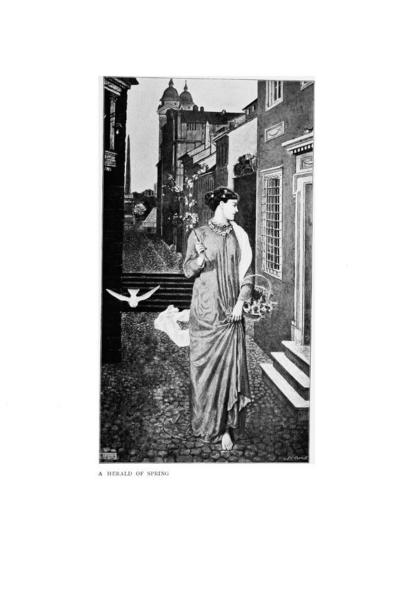
The Art of Walter Crane, between pages 94-95
で、アーモンドですけれど、調べてみても、とりたてて神話的象徴性をもってはいないみたいです。日本語のウィキペディアの「アーモンド」も英語のWikipedia の "almond" も、旧約聖書におけるアーモンド(古い日本語訳聖書で「あめんどう」)の言及を説明して、それはそれなりに象徴みたいなところもあるのですけど。どうやら、実際にローマの春の風景に見られたアーモンドの花をクレインは入れたのかなあと思われたのでした。
////////////////////////
「アーモンドのおはなし 5 アーモンドの花」 <http://www.ezaki-glico.com/almond/flower/index.html> 〔江崎グリコのページ〕
「さだまさし 春告鳥 - Ichishuのさだ作品批評シリーズ(第1弾)」 <http://www008.upp.so-net.ne.jp/ichishu/sada/harutsuge.htm> 〔いえ、ちょくせつ関係ないですけど、メモ的に。春告鳥はウグイスです。春告魚はイワシ〕
以下再掲
Walter Crane Catalogues:
1) "Catalogue of Books Illustrated or Written by Crane" Walter Crane - Arts & Crafts Home <http://www.achome.co.uk/waltercrane/index.php?page=catalogue> 〔The Arts and Crafts Home: A Design Source for Home Decoration 内〕
2) A Bookman's Catalogue: The Norman Colbeck Collection of Nineteenth-Century and Edwardian Poetry and Belle Lettres, Vol. 1 A-L (University of British Columbia Press, 1987), pp. 175-7 <http://books.google.co.jp/books?id=4DUL-RazzhgC&pg=PA175&dq=A+Bookman%27s+Catalogue+Walter+Crane&as_brr=3&ei=0H7_SoHaHpOilQTelvTyDg#v=onepage&q=&f=false>
Walter Crane Images:
1) "Walter Crane Image Gallery" <http://www.artmagick.com/pictures/artist.aspx?artist=walter-crane> 〔ArtMagick〕
2) "Walter Crane Online" <http://www.artcyclopedia.com/artists/crane_walter.html> 〔Artcyclopedia: The Guide to Great Art on the Internet〕
3) Walter Crane, A Floral Fantasy in an Old English Garden (New York and London: Harper, 1899) <http://www.archive.org/stream/floralfantasyino00cranrich#page/n7/mode/2up> 〔Internet Archive〕
4) -----, A Flower Wedding: Described by Two Wallflowers (London: Cassell, 1905) <http://www.archive.org/stream/flowerweddingdes00cran#page/n5/mode/2up> 〔Internet Archive〕
5) -----, illustration. Nathaniel Hawthorne, A Wonder Book for Girls and Boys (Boston: Houghton Mifflin, ) <http://www.archive.org/stream/wonderbookforgir00hawt2#page/n11/mode/2up> 〔Internet Archive〕
6) Paul George Konody (1872-1933), The Art of Walter Crane (London: G. Bell and Sons, 1902) <http://www.archive.org/details/cu31924014894558> 〔Internet Archive〕
ペルセポネ(プロセルピーナ)の話(上)――春を告げるもの(ウォルター・クレイン)の余白に [Marginalia 余白に]
ギリシア神話のペルセポネ(=ローマ神話のプロセルピーナ)は、冥界(地下世界)〔ギリシア神話の ハーデス Hades、ローマ神話のオルクス Orcus〕の女王という側面と、母親のデーメテール Demeter (=ローマ神話のケレス Ceres)とほとんど一緒の地母神的な側面と、あって、たぶん(に)混淆的な存在なのだけれど、母親と違って地を去っちゃってまた帰ってくるという空間的移動をもつことで、「春の女神」という時間的サイクルを司る役割をもったように思われます。
ウォルター・クレインは、1878年に The Fate of Persephone という油絵(テンペラも使用)の大作を発表しています。
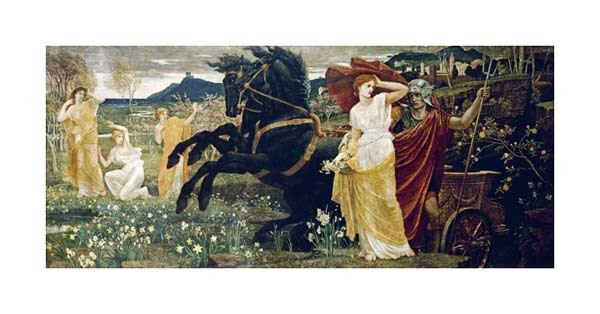
Walter Crane, The Fate of Persephone [122.5×267cm; oil and tempera on canvas] image via Fine Art Giclée - globalgallery.com <http://www.globalgallery.com/enlarge/64751/#>
この絵がクリスティーズのオークションにかけられたときの "lot description" を見ると、ミルトンの『失楽園』(Paradise Lost, Book IV, ll. 268-71)と関係付けられているみたいです。――
signed, inscribed and indistinctly dated 'WALTER CRANE MDCCC/LXXVIII' (lower left) and signed and inscribed 'THE FATE OF PERSEPHONE/WALTER CRANE/13 HOLLAND ST./KENSINGTON.LONDON.W./ Proserpine in Enna gath'ring flowers./Herself a fairer flower by gloomy Dis/was gather'd Milton' (on the stretcher) and further inscribed '.../Herself a fairer Flower..gloomy Dis/Was gather'd/Walter Crane/Beaumont Lodge/Shepherds Bush/13 Holland Street' (on an old label attached to the stretcher)
oil and tempera on canvas
48¼ x 105 1/8 in. (122.5 x 267 cm.) <http://www.christies.com/LotFinder/lot_details.aspx?intObjectID=3935128>
"stretcher" に書かれていると書かれていますけど、 "stretcher" というのはカンヴァスを張る木枠のことですよね。だから、ウォルター・クレイン自身がタイトルに続けて書いたのでしょうか。それが "Proserpine in Enna gath'ring flowers./ Herself a fairer flower by gloomy Dis/ was gather'd Milton" の部分。ラベルには基本同じ引用が反復されているみたい。
・・・・・・かのプロセルピンが
花摘みつゝ、みづからはなほ美はしき
花なれば、もの暗きヂスに摘まれて
ためにケレスが世をあまねく尋ねし
美はしきエンナの野も・・・・・・ 〔藤井武訳『楽園喪失』〕
ヂスというのは Dis で、ローマ神話における冥界の王(ギリシア神話の Pluto)。花を摘んでいた娘のプロセルピーナは彼女自身が美しい花だったので、暗い世界の Dis に摘まれ、〔母親の〕Ceres が捜索した、というような一節ですけど、ここで、プロセルピーナの物語のおさらいです。
ゼウス Zeus (ローマ神話のジュピター Jupiter)大地と豊穣の女神デーメテール Demeter (ケレス Ceres)のあいだに生まれた娘のペルセポネ Persephone(プロセルピーナ Proserpina; Proserpine (英語))は、他の娘(ニンフ nymph)たちとエンナ〔シチリア島のパレルモの南東あたり〕の草原で花を摘んでいました。黄色いスイセンに手を伸ばしたときに、不意に地が割けて、馬車に乗った冥王プルートー(ディス[ヂス])が出現し、ペルセポネを抱きかかえるとそのまま地下世界へと連れ去ってしまいます。母親のデーメテールは失踪した娘を半狂乱になって探しまわり、そのかん大地は収穫もなく荒れ果てます。ゼウスは psychopomp (霊魂を冥界へ導く案内者)でもあるヘルメスを使いにだして、プルートーにペルセポネを帰させようとします。プルートーはしぶしぶ承知しますが、帰ろうとするペルセポネにザクロ(石榴・柘榴――英語だと pomegranate・・・・・・語源的には「種のたくさんあるリンゴ」)をひとつ手渡します。ペルセポネは冥界にいるあいだ、なにも口にしておらなかった。で、地上にむかう馬車のなかでザクロの種を4ないし6粒食べてしまいました。このザクロによってペルセポネは冥界に縛られてしまいます。母親のデーメテールはゼウスに懇願する。その結果、4粒の種を食べたペルセポネは1年のうちの4箇月を地下世界で冥王プルートーの妻として暮らし、4箇月たったら戻ってきて地上の母親と8箇月暮らすことになりましたとさ。
ということで、ペルセポネが冥界にいて地上を去っている時期が冬(母親は悲しくて大地の世話をやめてしまう)で、ペルセポネが地上に戻ってくるのが春の訪れです。
1906年に出版された Flowers from Shakespeare's Garden: A Posy from the Plays Illustrated in 40 Colour Plates by Walter Crane (London: Cassell, 1906) には、シェークスピアの『冬物語』の挿絵としてプロセルピーナを描いています。残念ながら Internet Archive 等には E-book が見つかりませんが、『子どものための美しい庭 The Beautiful Garden for Children』のなかで見られます <http://pinkchiffon.web.infoseek.co.jp/secretgarden12.htm>。胸はだけてます。
そして、マール社から『シェイクスピアの花園』というタイトルで2006年に出版されているようです。――
ミルトンにシェークスピア。つづきます。
/////////////////////////////////////
「ゼウス(4):母娘と狂女物と「花と蛇」(ペルセフォネ)」 〔Ashe さんの『絵画で見るギリシャ神話』2002.9.3〕 <http://ashe4myth.blog118.fc2.com/blog-entry-14.html>
「ウォルター・クレイン 「プロセルピナ」」 〔『子どものための美しい庭 The Beautiful Garden for Children』の中〕 <http://pinkchiffon.web.infoseek.co.jp/secretgarden12.htm>
ペルセポネ(プロセルピーナ)の話(下)――春を告げるもの(ウォルター・クレイン)の余白に [Marginalia 余白に]
ウォルター・クレインは1871年秋から73年の春までイタリアに旅行し、冬はローマで過ごしました。その滞在中に描いた水彩画の1枚が A Herald of Spring (1872) でした。Dudley Gallery で展示されたときには The Herald of Spring と定冠詞になっていて、それでA と Theが混在しているみたいです。
この絵です。
さて、「ペルセポネ(プロセルピーナ)の話(上)――春を告げるもの(ウォルター・クレイン)の余白に」のつづきです(そして、いっきに、「あめんどう Almond――「春を告げるもの A Herald of Spring (Walter Crane)」のつづき」で提起した問題の解決編です)。
Flowers from Shakespeare's Garden: A Posy from the Plays Illustrated in 40 Colour Plates by Walter Crane (London: Cassell, 1906) でシェークスピアの『冬物語』にちなんでウォルター・クレインが描いたペルセポネの絵には芝居の台詞が添えられています。――
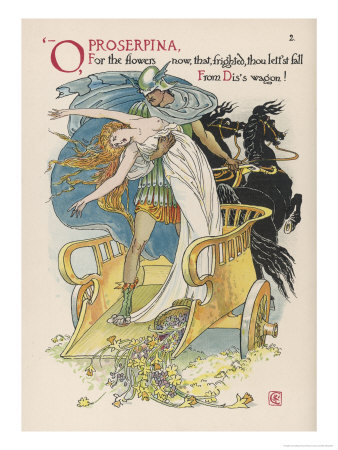
image via AllPosters.com: "Persephone Is Abducted by Hades by Walter Crane" <http://www.allposters.com/-sp/Persephone-is-Abducted-by-Hades-Posters_i1863390_.htm?aid=637878808&DestType=7&Referrer=http%3A%2F%2Fwww%2Enatureartworks%2Ecom%2Fposters%2Fi1863390%2Ehtml>
("Persephone Is Abducted by Hades" というのがタイトルとしてクレインが付けたものかどうか定かではないですけど、独立した複製画としてこの題で流布しているみたいです。「ペルセポネがハーデスに誘拐される」。ここでハーデスは死者の国という場所ではなくて冥界の支配者プルートーのことです。)
さて、もとのシェークスピアの芝居『冬物語』において、この箇所は、第4幕3場のパーディタ Perdita の「花くらべ」として知られる台詞の一部です。前後を薄くして引いておきます。
PERDITA: [. . .]
I would I had some flowers o' the spring that might
Become your time of day;―and yours, and yours, and yours,
That wear upon your virgin branches yet
Your maidenheads growing:―O, Proserpina,
For the flowers now, that, frighted, thou lett'st fall
From Dis's wagon! daffodils,
That come before the swallow dares, and take
The winds of March with beauty; violets dim,
But sweeter than the lids of Juno's eyes
Or Cytherea's breath; pale primroses,
That die unmarried, ere they can behold
Bright Phoebus in its strength,―a malady
Most incident to maids; bold oxlips and
The crown-imperial; lillies of all kinds,
The flower-de-luce being one! O, these I lack,
To make you garlands of; and my sweet friend,
To strew him o'er and o'er!
英語の勉強をすると、 "O! for" は《古》archaic で「ああ、x x がほしい」という言い方。that は関係代名詞で先行詞は the flowers。thou = you〔古い2人称代名詞〕。lett'st = lettest = let〔古い2人称代名詞と一緒に変化した古い動詞形〕で、これの目的語が that = the flowers。frighted = frightened は主語の thou を修飾する補語の過去分詞(「びっくりして」「驚きのあまり」)。
――ああ、プロセルピーナ! あなたがディスの馬車から落としてしまった花がいまほしい。
さて、つづく台詞の部分にもクレインは絵を添えています。――
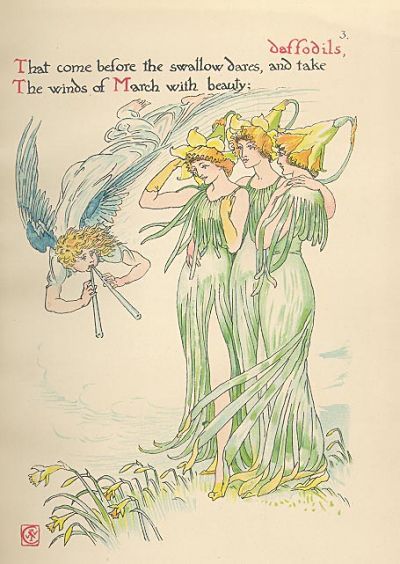
Daffodils [Walter Crane, Flowers from Shakespeare's Garden: A Posy from the Plays (London: Cassell, 1906)] image via
| 『Wings of Angel』 (天使の翼) 「絵画の中の妖精」<http://angel.pupu.jp/f_picture/crane.htm> |
daffodils,
That come before the swallow dares, and take
The winds of March with beauty;
(ツバメがあらわれるまえにあらわれて、三月の風を美しさでとりこにするダフォディルが〔ほしい〕)
(take よくわかりませんけど、captivate の意味にとっておきます)この黄色い花ならびに3人の黄色い花の精はダフォディル(水仙; とくにラッパズイセン)で、その花は、ペルセポネがプルートー(=ディス=ハーデス)に拉致されたときに摘みかけていた花にほかなりません。宙を飛ぶ若いツバメは管楽器 (winds) でラッパズイセンことダフォディルと競っているのかしら。
そして、もう一度 A Herald of Spring の絵を見てみる。あ゛~、もう1回貼りつけてしまいます。――
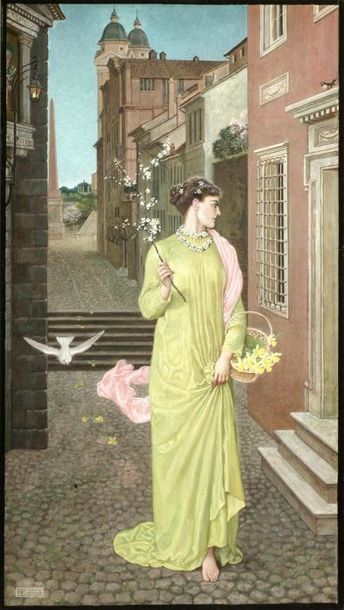
image via Pre Raphaelite Art [by Hermes さん] <http://preraphaelitepaintings.blogspot.com/2011/01/walter-crane-herald-of-spring.html>; original image <http://www.bmagic.org.uk/objects/1929P528 >
この絵で、裸足の女性が左手にもったカゴに入っている黄色い花はダフォディルです。そして、やはり、右上の家の入口にとまっているのはツバメではないかと思われ(でもまだ巣がないから、やってきたばかりかと)。街路に落ちている花は右手にもったアーモンドの花ではなくてダフォディルでしょう。
そうなると、この、妻をモデルにしたとされる「春を告げるもの」、春の先触れ、告知者は、冥界から地上に現われたペルセポネのイメジと重なっているということになるのではないでしょうか。
背後に見えるオベリスクがどういう象徴性をもった建造物と考えられていたのか知りませんが、少なくとも構図的には上方への垂直的運動、地(地下世界)からの力を示していると言えると思います。
六粒の柘榴の種――母と娘のはなし(デーメテールとペルセポネ) "The Six Pomegranate Seeds" by Mary MacGregor (1910) [Marginalia 余白に]
1910年にメアリー・マグレガーという女性(たぶんスコットランド系のひと)が出版した『ギリシャの物語』という本にウォルター・クレインは19葉の扉絵と挿絵を描いていて、その第3章が "The Six Pomegranate Seeds" というタイトルで、ペルセポネの話を扱っていました (pp. 6-10)
Mary MacGregor. The Story of Greece: Told to Boys and Girls. [with Nineteen Plates in Colour by Walter Crane] London and Edinburgh: T. C. & E. C. Jack, 1910. xvi+356pp. (103 chapters) e-book @ openlibrary <http://openlibrary.org/books/OL7086918M/The_story_of_Greece>
子供向けということで、ジョイス君に捧げられているのですけど、英語もやさしいし、なかば写経的に書き留めておこうと思いました。6ページと7ページのあいだ、そして10ページと11ページのあいだに挿絵が入っています。全103章で300ページを超す本に19しか絵がないのですから、例外的な扱い、ということになるでしょうか。と思ったら、パンの挿絵で、これは前の第2章が "The Great God Pan" なのでした。
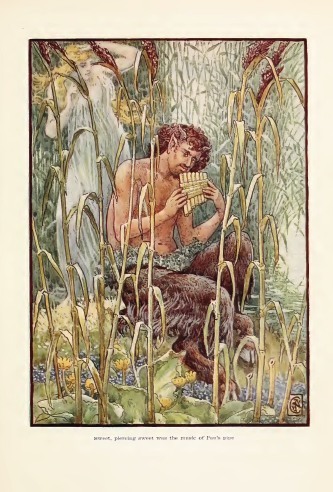
Sweet, piercing sweet was the music of Pan's pipe
THE SIX POMEGRANATE SEEDS
DEMETER, the goddess of the earth, was often to be seen in the fields in springtime. As the Greek peasants sowed their seed they caught glimpses of her long yellow hair while she moved now here, now there, among them. It almost seemed to these simple folk as though already the bare fields were golden with the glory of harvest, so bright shone the yellow hair of the goddess. Then they smiled hopefully one to the other, knowing well that Demeter would give them a bounteous reaping-time.
In the autumn she was in the fields again, the peasants even dreamed that they saw her stoop to bind the sheaves. Certainly she had been known to visit their barns when the harvest was safely garnered. And stranger still, it was whispered among the womenfolk that the great Earth-Mother had entered their homes, had stood close beside them as they baked bread to feed their hungry households.
It was in the beautiful island of Sicily, which lies in the Mediterranean Sea, that the goddess had her home. Here she dwelt with her daughter Persephone, whom she loved more dearly than words can tell.
Persephone was young and fair, so fair that she seemed as one of the spring flowers that leaped into life when her mother touched the earth with her gracious hands. Early as the dawn the maiden was in the fields with Demeter, to gather violets while the dew still lay upon them, to dance and sing with her playmates. At other times she would move gravely by the side of her mother to help her in her quiet labours.
All this time, Pluto, King of Hades, was living in his gloomy kingdom underground, longing for some fair maiden to share his throne. But there was not one who was willing to leave the glad light of the sun, no, not though Pluto offered her the most brilliant gems in his kingdom.
One day the dark king came up out of the shadows, riding in his chariot of gold, drawn by immortal horses. Swifter was their pace than that of any mortal steeds.
Persephone was in a meadow with her playfellows when the king drew near. The maiden stood knee-deep amid the meadow-grass, and, stooping, plucked the fragrant sweet flowers all around her hyacinth, lilies, roses, and pale violets.
Pluto saw the group of happy maidens, beautiful each one as a day in spring, but it was Persephone who charmed him more than any other.
'She shall be my queen and share my throne,' muttered the gloomy king to himself. Then, for he knew that to woo the maiden would be vain, Pluto seized Persephone in his arms, and bore her weeping to his chariot.
Swift as an arrow the immortal steeds sped from the meadow, where Persephone's playmates were left terrorstricken and dismayed.
On and on flew the chariot. Pluto was in haste to reach Hades ere Demeter should miss her daughter.
A river lay across his path, but of this the king recked naught, for his steeds would bear him across without so much as lessening their speed.
But as the chariot drew near, the waters began to rise as though driven by a tempest. Soon they were lashed to such fury that Pluto saw that it was vain to hope to cross to the other side. So he seized his sceptre, and in a passion he struck three times upon the ground. At once a great chasm opened in the earth, and down into the darkness plunged the horses.
A moment more and Pluto was in his own kingdom, Persephone by his side.
When the king seized the maiden in the meadow, and bore her to his chariot, she had cried aloud to Zeus, her father, to save her. But Zeus had made no sign, nor had any heard save Hecate, a mysterious goddess, whose face was half hidden by a veil.
None other heard, yet her piteous cry echoed through the hills and woods, until at length the faint echo reached the ear of Demeter.
A great pain plucked at the heart of the mother as she heard, and throwing the blue hood from off her shoulders, and loosening her long yellow hair, Demeter set forth, swift as a bird, to seek for Persephone until she found her.
To her own home first she hastened, for there, she thought, she might find some trace of the child she loved so well.
But the rooms were desolate as 'an empty bird's nest or an empty fold.'
The mother's eyes searched eagerly in every corner, but nothing met her gaze save the embroidery Persephone had been working, 'a gift against the return of her mother, with labour all to be in vain.' It lay as she had flung it down in careless mood, and over it crept a spider, spinning his delicate web across the maiden's unfinished work.
For nine days Demeter wandered up and down the earth, carrying blazing torches in her hands. Her sorrow was so great that she would neither eat nor drink, no, not even ambrosia, or a cup of sweet nectar, which are the meat and drink of the gods. Nor would she wash her face. On the tenth day Hecate came towards her, but she had only heard the voice of the maiden, and could not tell Demeter who had carried her away.
Onward sped the unhappy mother, sick at heart for hope unfulfilled, onward until she reached the sun. Here she learned that it was Pluto who had stolen her daughter, and carried her away to his gloomy kingdom.
Then in her despair Demeter left all her duties undone, and a terrible famine came upon the earth. 'The dry seed remained hidden in the soil; in vain the oxen drew the ploughshare through the furrows.'
As the days passed the misery of the people grew greater and greater, until faint and starving they came to Demeter, and besought her once again to bless the earth.
But sorrow had made the heart of the goddess hard, and she listened unmoved to the entreaties of the hungry folk, saying only that until her daughter was found she could not care for their griefs.
Long, weary days Demeter journeyed over land and sea to seek for Persephone, but at length she came back to Sicily.
One day as she walked along the bank of a river, the water gurgled gladly, and a little wave carried a girdle almost to her feet.
Demeter stooped to pick it up, and lo! it was the girdle that Persephone had worn on the day that she had been carried away. The maiden had flung it into the river as the chariot had plunged into the abyss, hoping that it might reach her mother. The girdle could not help Demeter to recover her daughter, yet how glad she was to have it, how safe she treasured it!
At length, broken-hearted indeed, Demeter went to Zeus to beg him to give her back her daughter. 'If she returns the people shall again have food and plenteous harvests,' she cried. And the god, touched with the grief of the mother and the sore distress of the people, promised that Persephone should come back to earth, if she had eaten no food while she had lived in the gloomy kingdom of Hades.
No words can tell the joy with which Demeter hastened to Hades. Here she found her daughter with no smile upon her sweet face, but only tears of desire for her mother and the dear light of the sun. But alas! that very day Persephone had eaten six pomegranate seeds. For every seed that she had eaten she was doomed to spend a month each year with Pluto. But for the other six months, year after year, mother and daughter would dwell together, and as they clung to one another they were joyous and content.
So for six glad months each year Demeter rejoiced, for her daughter was by her side, and ever it was spring and summer while Persephone dwelt on earth. But when the time came for her to return to Hades, Demeter grew ever cold and sad, and the earth too became weary and grey. It was autumn and winter in the world until Persephone returned once more.
-62954.jpg)
Demeter rejoiced for her daughter was by her side
[The Story of Greece Told to Boys and Girls by Mary MacGregor with nineteen plates in colour by Walter Crane. Published in 1910 by T.C. & E.C. Jack, Ltd. in London and Edinburgh]
ううむ。性的なアテコスリはまったく排除されていますねー。ヘルメスも出てきーへんし。ペルセポネはけっこうあとまで maiden と呼ばれてるし。
ロセッティのプロセルピーナ (1) Dante Gabriel Rossetti's Proserpine [Marginalia 余白に]
日本語で「ラファエロ前派」と呼ばれているグループがどこまでカバーする言葉かは諸説あるかもしれませんけれど、ウォルター・クレイン Walter Crane (1845-1915) はもちろん Pre-Raphaelite Brotherhood: PRB という兄弟団の一員であったわけではなく、活動は重なっているけれど、世代的にもちょっとあとのひとです。
John Everett Millais (1829-96)
William Holman Hunt (1827-1910)
Dante Gabriel Rossetti (1828-82)
以上が出発の3人 (1848)
William Michael Rossetti (1829-1919)
Thomas Woolner (1825-92)
James Collinson (1825-81)
Frederic George Stephens (1828-1907)
以上で最初の7人兄弟 (1848)
初期にも共鳴して兄弟団にかかわる画家たちはいろいろいるのだけれど、後期の、といってもどこまでかも諸説あるので、とりあえず兄のロセッティ後期の、中世趣味から唯美主義的なところへむかうところで密接にかかわってくるのがつぎのふたりです。――
Edward Burne-Jones (1833-98)
William Morris (1834-96)
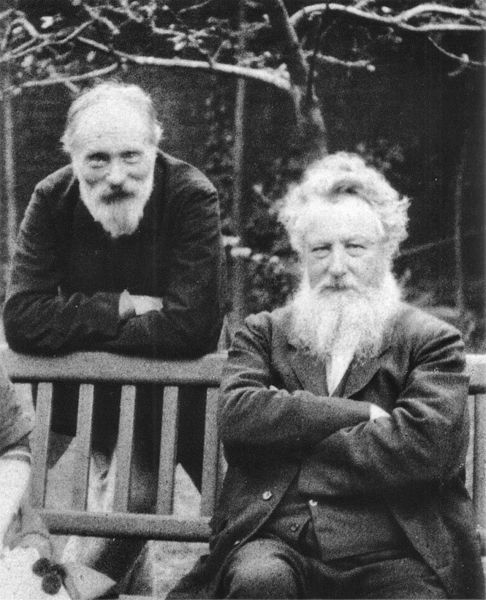
Edward Burne-Jones and William Morris (1890) image via "William Morris," Wikipedia
そして、さらに唯美主義に社会主義を加えて進んでいくウィリアム・モリスと共鳴してアーツ・アンド・クラフツ運動を一緒にやっていくのがウォルター・クレインでした。たぶん。――
Walter Crane (1845-1915)
そして、ついでながら、そっちの方向性はラファエロ前派の運動のはじめから先達で後援者であったジョン・ラスキンによって示されていたのかもしれません。――
John Ruskin (1819-1900)
ラスキンの奥さんだったEffie Gray (1828-97) と、ラスキンが一番親しかったジョン・エヴァレット・ミレーのふたりは、エフィーがラスキンと離婚した翌年の1855年に結婚しました。ラスキンとエフィーの結婚は不幸なものだったということになっていますが、彼女はミレーのモデルをつとめたりもして、惹かれていたのでした。ミレーの有名なオフィーリアの絵 (1852) のモデルになったElizabeth Siddal (1829-62) と結婚したのがロセッティでしたが、彼らの結婚も不幸なものでした。エリザベス・シッダルはロセッティのモデルとして1853年ごろから数多くの絵に描かれ、長い婚約期間を経て1860年に結婚します。しかし婚約中の1857年に知り合ってロセッティが強く惹かれていくのが Jane Burden (1839-1914) で、でも彼は婚約中だし、ウィリアム・モリスと1859年に結婚してしまいます(ジェーン・モリスになる)。エリザベスはもともと帽子屋の店員で労働者階級のひと。自らも絵筆を執って画家活動を行ない、詩も書き、ラスキンに支持もされますが、ロセッティの家の側からの蔑視や夫の浮気な性格や流産の不幸もあって、薬のアヘンチンキを多用して結婚2年後の1862年に亡くなってしまいます。
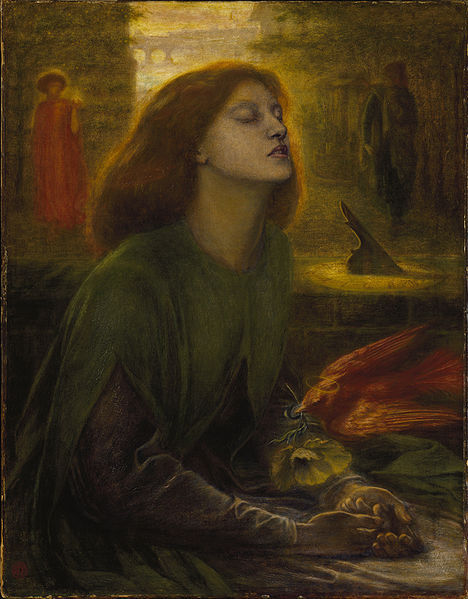
Dante Gabriel Rossetti, Beata Beatrix ([1864-]1872) [Elizabeth Siddal がモデル。ロセッティが1873年にモリスに送った手紙によれば、ダンテのベアトリーチェの死の表象というよりも「トランスないし不意の霊的変容によって象徴化して理想化した」もの "an ideal of the subject, symbolized by a trance or sudden spiritual transfiguration" これはテート・ギャラリー所蔵ヴァージョン。バーミンガム美術館のは花が赤い]
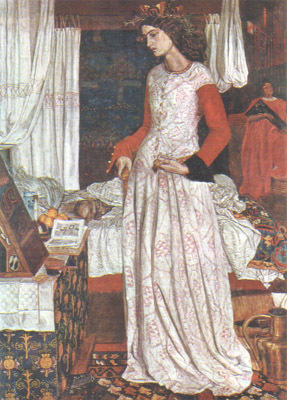
William Morris, La belle Iseult [Queen Guenevere] (1858)――モリス唯一の油絵は知り合ったころのジェーンをモデルにしたもの
ラスキンとは違って、ウィリアム・モリスとジェーンのあいだにはちゃんと子どもも生まれているのですけど――1861年と翌年に年子の姉妹が生まれていて、妹の May Morris (1861-1935) は社会主義者・工芸家になって活動します――、しだいに夫婦の仲は冷えていったらしい。
ロセッティは、1858年にやっぱり知り合っていたモデルの Fanny Cornforth (1835?-c1906) を家政婦として家に迎えて関係をもちながら、モリス夫妻と交流を続けて、ジェーンをモデルにした絵も描きつづけます。
.jpg)
Rossetti, The Blue Bower (1865) [Fanny Cornforth] image via Passiflora <http://www.passionflow.co.uk/art312141115.htm>
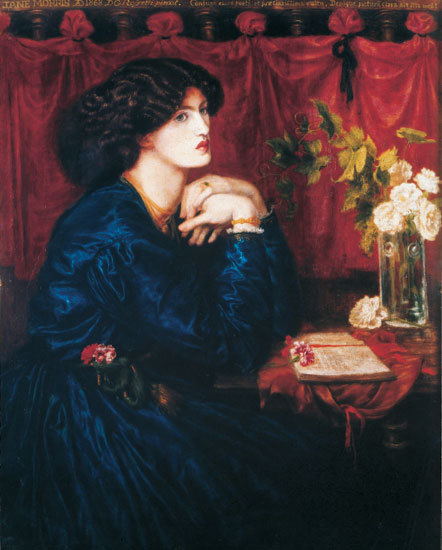
Rossetti, Jane Morris [The Blue Dress] (1868) image via Wikipedia
でペルセポネ、プロセルピーナといえば、あまりに有名なのが、最晩年まで反復される、ジェーン・モリスをモデルとした Proserpine の連作なのでした。1871年のパステル画にはじまり亡くなる1年前の1881年の油絵まで、執拗に。
で、不幸な結婚生活を送るジェーンをプロセルピーナに、冥王をウィリアム・モリスになぞらえる解釈みたいなのが自ずと行なわれてきたのですけど、絵が貼れなくなったので、別の記事につづきます。
/////////////////////////////////////////
"Chronology" The Arts and Crafts Home: A Design Source for Home Decoration 〔Mark Golding さん作成(あるいは from: Arts and Crafts by Anscombe and Gere)の年表 1819 [ラスキンの生年]-1919[バウハウスの創設]〕 <http://www.achome.co.uk/chronology/chronology.htm>
"The William Morris Internet Archive: Chronology" 〔Nick Salmon さん作成の年譜。marxists.org 内〕 <http://www.marxists.org/archive/morris/works/chrono.htm>
ホーソーンの「柘榴の種」(上) "The Pomegranate-Seeds" by Nathaniel Hawthorne [Marginalia 余白に]
記事「六粒の柘榴の種――母と娘のはなし(デーメテールとペルセポネ) "The Six Pomegranate Seeds" by Mary MacGregor (1910)」で20世紀初頭に子供向けに書かれたペルセポネの神話を書き出しましたが、アメリカのホーソーンがその半世紀前に子供たちのために書いた「柘榴の種 The Pomegrate-Seeds」も書き写しておきます。
テクストは、A Wonder-Book for Girls and Boys (1852)の続篇として出版された Tanglewood Tales (1853) 。
20世紀のホーソーン全集、オハイオ州立大学の Centenary Edition では第7巻に合わせて収められています(A Wonder-Book はpp. 1-171、Tanglewood Tales はpp. 173-368)。
オハイオ版は、依拠したテクストはもちろん原稿("The copy-text for the present edition is, of course, the manuscript, which alone has authority for the accidentals")と記しているので、原稿と初版テクストにひどく異同があったらめんどうだな、と思ったのですけれど、それほどたいした違いはないみたい。でも、ちなみに "accidentals" というのは、なぜか英和の辞書にその意味で載っていないけれども textual criticism ないし本文校訂の用語で、書き手の意味にとって本質的でない特徴です(ちゃんとOED では確認しました―― accidental の名詞のd で、 "Textual Criticism. Applied to any feature that is non-essential to the author's meaning." 用例は17世紀からあります)。これに対して意味に関わる異同は "substantive variants" と呼ぶのですけれど、なぜかこれも英和辞典にはない、どころかOED にもはっきりテクスト批評の用語とは書いてないみたいです。
オハイオ大学版が初版の "substantive variants" として、原稿と比較のうえで原稿を採用して初版のほうをしりぞけたのは3つあります。
初版 apron full 原稿 apronful
初版 she quite forget 原稿 she quite forgot
初版 as she if she were to stay 原稿 as if she were to stay
下のふたつは実のところ誤植とわかる間違い。最初のは、プロセルピーナがエンネの野原で妖精たちに語ることばのなかで、エプロンいっぱいに花を摘んでくるからここで待ってて――"But do you wait for me here, and I will run and gather my apronful of flowers, and be back again [. . .]"――と言うところ。集めるのは(つまり動詞 gather の目的語は)花で、エプロンではないということで apronful が正しかろうと我々の目にも映ります。でもむかしはナンタラフルということば(代表的なのは spoonful)って、分かち書きしたり、1語になっても-fullだったりもするので、見た目よりはあいまいです。
原稿と初版が違っていて、初版のほうをそのまま採用している異同もありました(目につくのは naiad とか faun とか satyr が原稿では大文字になっている箇所があるのだけれど、統一させたみた。
それから、原稿に誤字がある(w)――ceiling を cieling と書き間違えているとか、branches を brances と脱字で書いているとか――のとかは初版で直したほうを当然採用。原稿で落ちている引用符を初版が踏襲してしまっているのをセンテナリー版が直した箇所もあります。
いろいろ見ると細かいです。細かすぎ。ということで、下のテクストはセンテナリー版の編集を基本尊重した初版テクストです。コンマとかの細かい異同は目を皿のようにしないとわからないところもあるので、気がついた時点で直していきます。(以上、まえおき)
(あれこれ書いてたら50000字制限にくりかえし引っかかってしまったので三分割しますw)

Walter Crane, Flowers from Shakespeare's Garden: A Posy from the Plays Illustrated in 40 Colour Plates by Walter Crane (London: Cassell, 1906)
THE POMEGRANATE SEEDS.
Nathaniel Hawthorne
Mother Ceres was exceedingly fond of her daughter Proserpina, and seldom let her go alone into the fields. But, just at the time when my story begins, the good lady was very busy, because she had the care of the wheat, and the Indian corn, and the rye and barley and, in short, of the crops of every kind, all over the earth; and as the season had thus far been uncommonly backward, it was necessary to make the harvest ripen more speedily than usual. So she put on her turban, made of poppies (a kind of flower which she was always noted for wearing), and got into her car drawn by a pair of winged dragons, and was just ready to set off.
"Dear mother," said Proserpina, "I shall be very lonely while you are away. May I not run down to the shore, and ask some of the sea nymphs to come up out of the waves and play with me?"
"Yes, child," answered Mother Ceres. "The sea nymphs are good creatures, and will never lead you into any harm. But you must take care not to stray away from them, nor go wandering about the fields by yourself. Young girls, without their mothers to take care of them, are very apt to get into mischief."
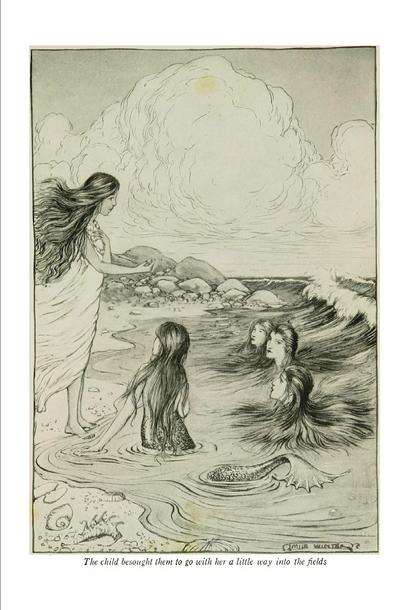
Illustration by Milo Winter. Tanglewood Tales. Chicago: Rand McNally, 1913.
The child promised to be as prudent as if she were a grown-up woman; and, by the time the winged dragons had whirled the car out of sight, she was already on the shore, calling to the sea nymphs to come and play with her. They knew Proserpina's voice, and were not long in showing their glistening faces and sea-green hair above the water, at the bottom of which was their home. They brought along with them a great many beautiful shells; and sitting down on the moist sand, where the surf wave broke over them, they busied themselves in making a necklace, which they hung round Proserpina's neck. By way of showing her gratitude, the child besought them to go with her a little way into the fields, so that they might gather abundance of flowers, with which she would make each of her kind playmates a wreath.
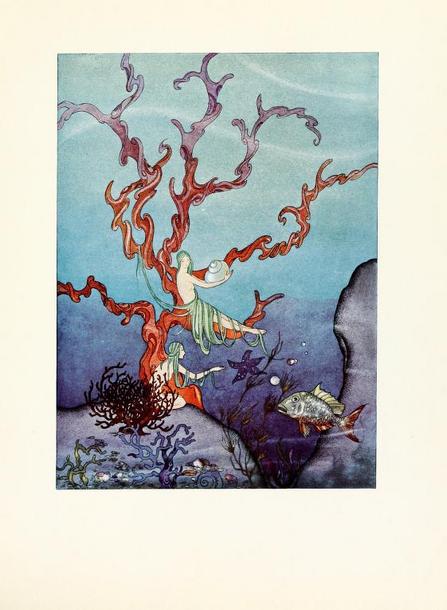
Illustration by Virginia Frances Sterrett. Tanglewood Tales. Philadelphia: Penn Publishing, 1921.
"O no, dear Proserpina," cried the sea nymphs; "we dare not go with you upon the dry land. We are apt to grow faint, unless at every breath we can snuff up the salt breeze of the ocean. And don't you see how careful we are to let the surf wave break over us every moment or two, so as to keep ourselves comfortably moist? If it were not for that, we should look like bunches of uprooted seaweed dried in the sun.
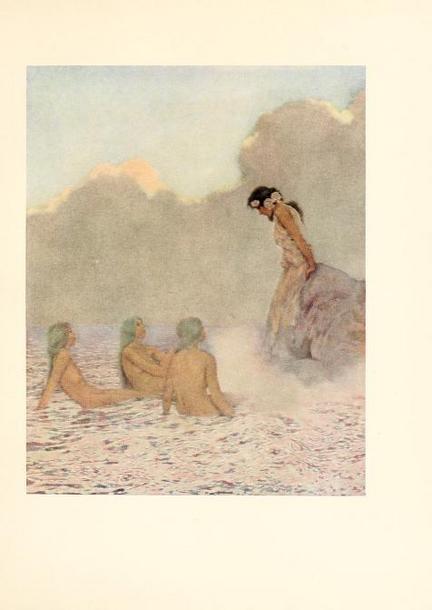
Illustration by Maxfield Parrish. A Wonder Book and Tanglewood Tales for Girls and Boys. New York: Duffield, 1910.
"It is a great pity," said Proserpina. "But do you wait for me here, and I will run and gather my apronful [apron full] of flowers, and be back again before the surf wave has broken ten times over you. I long to make you some wreaths that shall be as lovely as this necklace of many colored shells."
"We will wait, then," answered the sea nymphs. "But while you are gone, we may as well lie down on a bank of soft sponge under the water. The air to-day is a little too dry for our comfort.
But we will pop up our heads every few minutes to see if you are coming."
The young Proserpina ran quickly to a spot where, only the day before, she had seen a great many flowers. These, however, were now a little past their bloom; and wishing to give her friends the freshest and loveliest blossoms, she strayed farther into the fields, and found some that made her scream with delight. Never had she met with such exquisite flowers before--violets so large and fragrant--roses with so rich and delicate a blush--such superb hyacinths and such aromatic pinks--and many others, some of which seemed to be of new shapes and colors. Two or three times, moreover, she could not help thinking that a tuft of most splendid flowers had suddenly sprouted out of the earth before her very eyes, as if on purpose to tempt her a few steps farther. Proserpina's apron was soon filled, and brimming over with delightful blossoms. She was on the point of turning back in order to rejoin the sea nymphs, and sit with them on the moist sands, all twining wreaths together. But, a little farther on, what should she behold? It was a large shrub, completely covered with the most magnificent flowers in the world.
"The darlings!" cried Proserpina; and then she thought to herself, "I was looking at that spot only a moment ago. How strange it is that I did not see the flowers!"
The nearer she approached the shrub, the more attractive it looked, until she came quite close to it; and then, although its beauty was richer than words can tell, she hardly knew whether to like it or not. It bore above a hundred flowers of the most brilliant hues, and each different from the others, but all having a kind of resemblance among themselves, which showed them to be sister blossoms. But there was a deep, glossy luster on the leaves of the shrub, and on the petals of the flowers, that made Proserpina doubt whether they might not be poisonous. To tell you the truth, foolish as it may seem, she was half inclined to turn round and run away.
"What a silly child I am!" thought she, taking courage. "It is really the most beautiful shrub that ever sprang out of the earth. I will pull it up by the roots, and carry it home, and plant it in my mother's garden."
Holding up her apron full of flowers with her left hand, Proserpina seized the large shrub with the other, and pulled, and pulled, but was hardly able to loosen the soil about its roots. What a deep-rooted plant it was! Again the girl pulled with all her might, and observed that the earth began to stir and crack to some distance around the stem. She gave another pull, but relaxed her hold, fancying that there was a rumbling sound right beneath her feet. Did the roots extend down into some enchanted cavern? Then laughing at herself for so childish a notion, she made another effort: up came the shrub, and Proserpina staggered back, holding the stem triumphantly in her hand, and gazing at the deep hole which its roots had left in the soil.
Much to her astonishment, this hole kept spreading wider and wider, and growing deeper and deeper, until it really seemed to have no bottom; and all the while, there came a rumbling noise out of its depths, louder and louder, and nearer and nearer, and sounding like the tramp of horses' hoofs and the rattling of wheels. Too much frightened to run away, she stood straining her eyes into this wonderful cavity, and soon saw a team of four sable horses, snorting smoke out of their nostrils, and tearing their way out of the earth with a splendid golden chariot whirling at their heels. They leaped out of the bottomless hole, chariot and all; and there they were, tossing their black manes, flourishing their black tails, and curvetting with every one of their hoofs off the ground at once, close by the spot where Proserpina stood. In the chariot sat the figure of a man, richly dressed, with a crown on his head, all flaming with diamonds. He was of a noble aspect, and rather handsome, but looked sullen and discontented; and he kept rubbing his eyes and shading them with his hand, as if he did not live enough in the sunshine to be very fond of its light.
As soon as this personage saw the affrighted Proserpina, he beckoned her to come a little nearer.
"Do not be afraid," said he, with as cheerful a smile as he knew how to put on. "Come! Will you not like to ride a little way with me, in my beautiful chariot?"
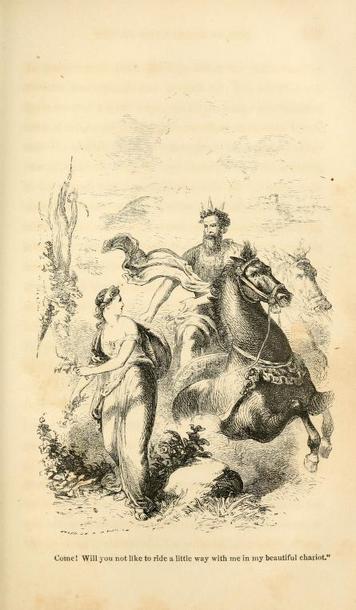
Tanglewood Tales, for Girls and Boys; Being a Second Wonder-Book. Boston: Ticknor, Reed, and Fields, 1853. [1st American edition]
But Proserpina was so alarmed, that she wished for nothing but to get out of his reach. And no wonder. The stranger did not look remarkably good-natured, in spite of his smile; and as for his voice, its tones were deep and stern, and sounded as much like the rumbling of an earthquake underground than anything else. As is always the case with children in trouble, Proserpina's first thought was to call for her mother.
"Mother, Mother Ceres!" cried she, all in a tremble. "Come quickly and save me."
But her voice was too faint for her mother to hear. Indeed, it is most probable that Ceres was then a thousand miles off, making the corn grow in some far distant country. Nor could it have availed her poor daughter, even had she been within hearing; for no sooner did Proserpina begin to cry out, than the stranger leaped to the ground, caught the child in his arms, and again mounted the chariot, shook the reins, and shouted to the four black horses to set off. They immediately broke into so swift a gallop, that it seemed rather like flying through the air than running along the earth. In a moment, Proserpina lost sight of the pleasant vale of Enna, in which she had always dwelt. Another instant, and even the summit of Mount Aetna had become so blue in the distance, that she could scarcely distinguish it from the smoke that gushed out of its crater. But still the poor child screamed, and scattered her apron full of flowers along the way, and left a long cry trailing behind the chariot; and many mothers, to whose ears it came, ran quickly to see if any mischief had befallen their children. But Mother Ceres was a great way off, and could not hear the cry.
As they rode on, the stranger did his best to soothe her.
"Why should you be so frightened, my pretty child?" said he, trying to soften his rough voice. "I promise not to do you any harm. What! you have been gathering flowers? Wait till we come to my palace, and I will give you a garden full of prettier flowers than those, all made of pearls, and diamonds, and rubies. Can you guess who I am? They call my name Pluto; and I am the king of diamonds and all other precious stones. Every atom of the gold and silver that lies under the earth belongs to me, to say nothing of the copper and iron, and of the coal mines, which supply me with abundance of fuel. Do you see this splendid crown upon my head? You may have it for a plaything. O, we shall be very good friends, and you will find me more agreeable than you expect, when once we get out of this troublesome sunshine."
"Let me go home!" cried Proserpina. "Let me go home!"
"My home is better than your mother's," answered King Pluto. "It is a palace, all made of gold, with crystal windows; and because there is little or no sunshine thereabouts, the apartments are illuminated with diamond lamps. You never saw anything half so magnificent as my throne. If you like, you may sit down on it, and be my little queen, and I will sit on the footstool."
"I don't care for golden palaces and thrones," sobbed Proserpina. "Oh, my mother, my mother! Carry me back to my mother!"
ホーソーンの「柘榴の種」(中) "The Pomegranate-Seeds" by Nathaniel Hawthorne [Marginalia 余白に]
Illustration by Virginia Frances Sterrett. Tanglewood Tales. Philadelphia: Penn, 1921.
But King Pluto, as he called himself, only shouted to his steeds to go faster.
"Pray do not be foolish, Proserpina," said he, in rather a sullen tone. "I offer you my palace and my crown, and all the riches that are under the earth; and you treat me as if I were doing you an injury. The one thing which my palace needs is a merry little maid, to run upstairs and down, and cheer up the rooms with her smile. And this is what you must do for King Pluto."
"Never!" answered Proserpina, looking as miserable as she could. "I shall never smile again till you set me down at my mother's door."
But she might just as well have talked to the wind that whistled past them, for Pluto urged on his horses, and went faster than ever. Proserpina continued to cry out, and screamed so long and so loudly that her poor little voice was almost screamed away; and when it was nothing but a whisper, she happened to cast her eyes over a great broad field of waving grain--and whom do you think she saw? Who, but Mother Ceres, making the corn grow, and too busy to notice the golden chariot as it went rattling along. The child mustered all her strength, and gave one more scream, but was out of sight before Ceres had time to turn her head.
King Pluto had taken a road which now began to grow excessively gloomy. It was bordered on each side with rocks and precipices, between which the rumbling of the chariot wheels was reverberated with a noise like rolling thunder. The trees and bushes that grew in the crevices of the rocks had very dismal foliage; and by and by, although it was hardly noon, the airbecame obscured with a gray twilight. The black horses had rushed along so swiftly, that they were already beyond the limits of the sunshine. But the duskier it grew, the more did Pluto's visage assume an air of satisfaction. After all, he was not an ill-looking person, especially when he left off twisting his features into a smile that did not belong to them. Proserpina peeped at his face through the gathering dusk, and hoped that he might not be so very wicked as she at first thought him.
"Ah, this twilight is truly refreshing," said King Pluto, "after being so tormented with that ugly and impertinent glare of the sun. How much more agreeable is lamplight or torchlight, more particularly when reflected from diamonds! It will be a magnificent sight, when we get to my palace."
"Is it much farther?" asked Proserpina. "And will you carry me back when I have seen it?"
"We will talk of that by and by," answered Pluto. "We are just entering my dominions. Do you see that tall gateway before us? When we pass those gates, we are at home. And there lies my faithful mastiff at the threshold. Cerberus! Cerberus! Come hither, my good dog!"
So saying, Pluto pulled at the reins, and stopped the chariot right between the tall, massive pillars of the gateway. The mastiff of which he had spoken got up from the threshold, and stood on his hinder legs, so as to put his fore paws on the chariot wheel. But, my stars, what a strange dog it was! Why, he was a big, rough, ugly-looking monster, with three separate heads, and each of them fiercer than the two others; but fierce as they were, King Pluto patted them all. He seemed as fond of his three-headed dog as if it had been a sweet little spaniel, with silken ears and curly hair. Cerberus, on the other hand, was evidently rejoiced to see his master, and expressed his attachment, as other dogs do, by wagging his tail at a great rate. Proserpina's eyes being drawn to it by its brisk motion, she saw that this tail was neither more nor less than a live dragon, with fiery eyes, and fangs that had a very poisonous aspect. And while the three-headed
Cerberus was fawning so lovingly on King Pluto, there was the dragon tail wagging against its will, and looking as cross and ill-natured as you can imagine, on its own separate account.
"Will the dog bite me?" asked Proserpina, shrinking closer to Pluto. "What an ugly creature he is!"
"O, never fear," answered her companion. "He never harms people, unless they try to enter my dominions without being sent for, or to get away when I wish to keep them here. Down,
Cerberus! Now, my pretty Proserpina, we will drive on."
On went the chariot, and King Pluto seemed greatly pleased to find himself once more in his own kingdom. He drew Proserpina's attention to the rich veins of gold that were to be seen amongthe rocks, and pointed to several places where one stroke of a pickaxe would loosen a bushel of diamonds. All along the road, indeed, there were sparkling gems, which would have been of inestimable value above ground, but which here were reckoned of the meaner sort and hardly worth a beggar's stooping for.
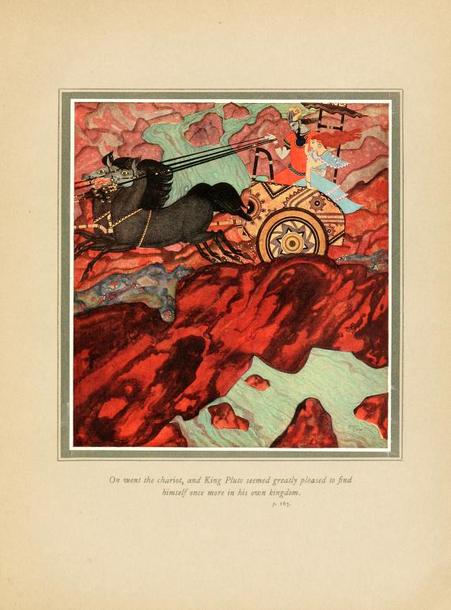
Illustration by Edmund Dulac. Tanglewood Tales. London and New York: Hodder and Stoughton, c1918.
Not far from the gateway, they came to a bridge, which seemed to be built of iron. Pluto stopped the chariot, and bade Proserpina look at the stream which was gliding so lazily beneath it. Never in her life had she beheld so torpid, so black, so muddy-looking a stream; its waters reflected no images of anything that was on the banks, and it moved as sluggishly as if it had quite forgotten which way it ought to flow, and had rather stagnate than flow either one way or the other.
"This is the River Lethe," observed King Pluto. "Is it not a very pleasant stream?"
"I think it a very dismal one," answered Proserpina.
"It suits my taste, however," answered Pluto, who was apt to be sullen when anybody disagreed with him. "At all events, its water has one excellent quality; for a single draught of it makes people forget every care and sorrow that has hitherto tormented them. Only sip a little of it, my dear Proserpina, and you will instantly cease to grieve for your mother, and will have nothing in your memory that can prevent your being perfectly happy in my palace. I will send for some, in a golden goblet, the moment we arrive."
"O, no, no, no!" cried Proserpina, weeping afresh. "I had a thousand times rather be miserable with remembering my mother, than be happy in forgetting her. That dear, dear mother! I never, never will forget her."
"We shall see," said King Pluto. "You do not know what fine times we will have in my palace. Here we are just at the portal. These pillars are solid gold, I assure you."
He alighted from the chariot, and taking Proserpina in his arms, carried her up a lofty flight of steps into the great hall of the palace. It was splendidly illuminated by means of large precious stones, of various hues, which seemed to burn like so many lamps, and glowed with a hundred-fold radiance all through the vast apartment. And yet there was a kind of gloom in the midst of this enchanted light; nor was there a single object in the hall that was really agreeable to behold, except the little Proserpina herself, a lovely child, with one earthly flower which she had not let fall from her hand. It is my opinion that even King Pluto had never been happy in his palace, and that this was the true reason why he had stolen away Proserpina, in order that he might have something to love, instead of cheating his heart any longer with this tiresome magnificence. And, though he pretended to dislike the sunshine of the upper world, yet the effect of the child's presence, bedimmed as she was by her tears, was as if a faint and watery sunbeam had somehow or other found its way into the enchanted hall.
Pluto now summoned his domestics, and bade them lose no time in preparing a most sumptuous banquet, and above all things, not to fail of setting a golden beaker of the water of Lethe by Proserpina's plate.
"I will neither drink that nor anything else," said Proserpina. "Nor will I taste a morsel of food, even if you keep me forever in your palace."
"I should be sorry for that," replied King Pluto, patting her cheek; for he really wished to be kind, if he had only known how. "You are a spoiled child, I perceive, my little Proserpina; but when you see the nice things which my cook will make for you, your appetite will quickly come again."
Then, sending for the head cook, he gave strict orders that all sorts of delicacies, such as young people are usually fond of, should be set before Proserpina. He had a secret motive in this; for, you are to understand, it is a fixed law, that when persons are carried off to the land of magic, if they once taste any food there, they can never get back to their friends. Now, if King Pluto had been cunning enough to offer Proserpina some fruit, or bread and milk (which was the simple fare to which the child had always been accustomed), it is very probable that she would soon have been tempted to eat it. But he left the matter entirely to his cook, who, like all other cooks, considered nothing fit to eat unless it were rich pastry, or highly-seasoned meat, or spiced sweet cakes--things which Proserpina's mother had never given her, and the smell of which quite took away her appetite, instead of sharpening it.
But my story must now clamber out of King Pluto's dominions, and see what Mother Ceres had been about, since she was bereft of her daughter. We had a glimpse of her, as you remember, half hidden among the waving grain, while the four black steeds were swiftly whirling along the chariot, in which her beloved Proserpina was so unwillingly borne away. You recollect, too, the loud scream which Proserpina gave, just when the chariot was out of sight.
Of all the child's outcries, this last shriek was the only one that reached the ears of Mother Ceres. She had mistaken the rumbling of the chariot wheels for a peal of thunder, and imagined that a shower was coming up, and that it would assist her in making the corn grow. But, at the sound of Proserpina's shriek, she started, and looked about in every direction, not knowing whence it came, but feeling almost certain that it was her daughter's voice. It seemed so unaccountable, however, that the girl should have strayed over so many lands and seas (which she herself could not have traversed without the aid of her winged dragons), that the good Ceres tried to believe that it must be the child of some other parent, and not her own darling Proserpina, who had uttered this lamentable cry. Nevertheless, it troubled her with a vast many tender fears, such as are ready to bestir themselves in every mother's heart, when she finds it necessary to go away from her dear children without leaving them under the care of some maiden aunt, or other such faithful guardian. So she quickly left the field in which she had been so busy; and, as her work was not half done, the grain looked, next day, as if it needed both sun and rain, and as if it were blighted in the ear, and had something the matter with its roots.
The pair of dragons must have had very nimble wings; for, in less than an hour, Mother Ceres had alighted at the door of her home, and found it empty. Knowing, however, that the child was fond of sporting on the sea-shore, she hastened thither as fast as she could, and there beheld the wet faces of the poor sea nymphs peeping over a wave. All this while, the good creatures had been waiting on the bank of sponge, and once, every half minute or so, had popped up their four heads above water, to see if their playmate were yet coming back. When they saw Mother Ceres, they sat down on the crest of the surf wave, and let it toss them ashore at her feet.
"Where is Proserpina?" cried Ceres. "Where is my child? Tell me, you naughty sea nymphs, have you enticed her under the sea?"
"O, no, good Mother Ceres," said the innocent sea nymphs, tossing back their green ringlets, and looking her in the face. "We never should dream of such a thing. Proserpina has been at play with us, it is true; but she left us a long while ago, meaning only to run a little way upon the dry land, and gather some flowers for a wreath. This was early in the day, and we have seen nothing of her since."
Ceres scarcely waited to hear what the nymphs had to say, before she hurried off to make inquiries all through the neighborhood. But nobody told her anything that would enable the poor mother to guess what had become of Proserpina. A fisherman, it is true, had noticed her little footprints in the sand, as he went homeward along the beach with a basket of fish; a rustic had seen the child stooping to gather flowers; several persons had heard either the rattling of chariot wheels, or the rumbling of distant thunder; and one old woman, while plucking vervain and catnip, had heard a scream, but supposed it to be some childish nonsense, and therefore did not take the trouble to look up. The stupid people! It took them such a tedious while to tell the nothing that they knew, that it was dark night before Mother Ceres found out that she must seek her daughter elsewhere. So she lighted a torch, and set forth, resolving never to come back until Proserpina was discovered.
In her haste and trouble of mind, she quite forgot her car and the winged dragons; or, it may be, she thought that she could follow up the search more thoroughly on foot. At all events, this was the way in which she began her sorrowful journey, holding her torch before her, and looking carefully at every object along the path. And as it happened, she had not gone far before she found one of the magnificent flowers which grew on the shrub that Proserpina had pulled up.
"Ha!" thought Mother Ceres, examining it by torchlight. "Here is mischief in this flower! The earth did not produce it by any help of mine, nor of its own accord. It is the work of enchantment, and is therefore poisonous; and perhaps it has poisoned my poor child."
But she put the poisonous flower in her bosom, not knowing whether she might ever find any other memorial of Proserpina.
All night long, at the door of every cottage and farm-house, Ceres knocked, and called up the weary laborers to inquire if they had seen her child; and they stood, gaping and half- asleep, at the threshold, and answered her pityingly, and besought her to come in and rest. At the portal of every palace, too, she made so loud a summons that the menials hurried to throw open the gate, thinking that it must be some great king or queen, who would demand a banquet for supper and a stately chamber to repose in. And when they saw only a sad and anxious woman, with a torch in her hand and a wreath of withered poppies on her head, they spoke rudely, and sometimes threatened to set the dogs upon her. But nobody had seen Proserpina, nor could give Mother Ceres the least hint which way to seek her. Thus passed the night; and still she continued her search without sitting down to rest, or stopping to take food, or even remembering to put out the torch although first the rosy dawn, and then the glad light of the morning sun, made its red flame look thin and pale. But I wonder what sort of stuff this torch was made of; for it burned dimly through the day, and, at night, was as bright as ever, and never was extinguished by the rain or wind, in all the weary days and nights while Ceres was seeking for Proserpina.
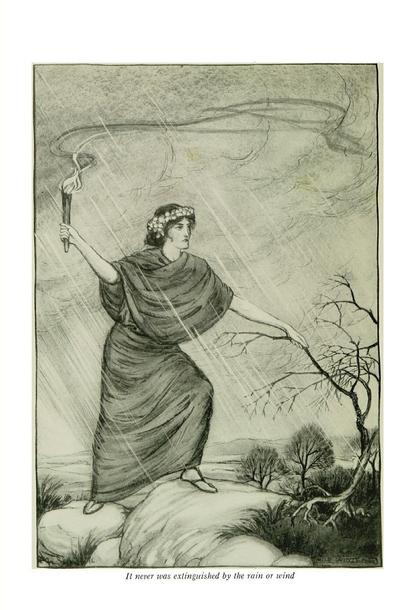
Illustration by Milo Winter. Tanglewood Tales. Chicago: Rand McNally, 1913.
It was not merely of human beings that she asked tidings of her daughter. In the woods and by the streams, she met creatures of another nature, who used, in those old times, to haunt the pleasant and solitary places, and were very sociable with persons who understood their language and customs, as Mother Ceres did. Sometimes, for instance, she tapped with her finger against the knotted trunk of a majestic oak; and immediately its rude bark would cleave asunder, and forth would step a beautiful maiden, who was the hamadryad of the oak, dwelling inside of it, and sharing its long life, and rejoicing when its green leaves sported with the breeze. But not one of these leafy damsels had seen Proserpina. Then, going a little farther, Ceres would, perhaps, come to a fountain, gushing out of a pebbly hollow in the earth, and would dabble with her hand in the water. Behold, up through its sandy and pebbly bed, along with the fountain's gush, a young woman with dripping hair would arise, and stand gazing at Mother Ceres, half out of the water, and undulating up and down with its ever- restless motion. But when the mother asked whether her poor lost child had stopped to drink out of the fountain, the naiad, with weeping eyes (for these water-nymphs had tears to spare for everybody's grief, would answer "No!" in a murmuring voice, which was just like the murmur of the stream.
Often, likewise, she encountered fauns, who looked like sunburnt country people, except that they had hairy ears, and little horns upon their foreheads, and the hinder legs of goats, on which they gamboled merrily about the woods and fields. They were a frolicsome kind of creature but grew as sad as their cheerful dispositions would allow, when Ceres inquired for her daughter, and they had no good news to tell. But sometimes she same suddenly upon a rude gang of satyrs, who had faces like monkeys, and horses' tails behind them, and who were generally dancing in a very boisterous manner, with shouts of noisy laughter. When she stopped to question them, they would only laugh the louder, and make new merriment out of the lone woman's distress. How unkind of those ugly satyrs! And once, while crossing a solitary sheep pasture, she saw a personage named Pan, seated at the foot of a tall rock, and making music on a shepherd's flute. He, too, had horns, and hairy ears, and goats' feet; but, being acquainted with Mother Ceres, he answered her question as civilly as he knew how, and invited her to taste some milk and honey out of a wooden bowl. But neither could Pan tell her what had become of Proserpina, any better than the rest of these wild people.
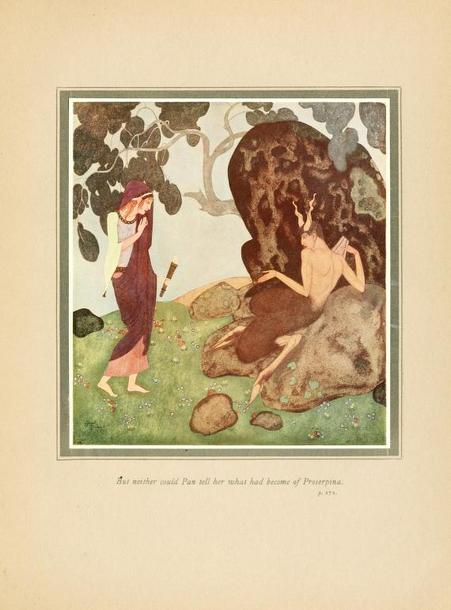
Illustrations by Edmund Dulac. Tanglewood Tales. London and New York: Hodder and Stoughton, c1918.
And thus Mother Ceres went wandering about for nine long days and nights, finding no trace of Proserpina, unless it were now and then a withered flower; and these she picked up and put in her bosom, because she fancied that they might have fallen from her poor child's hand. All day she traveled onward through the hot sun; and, at night again, the flame of the torch would redden and gleam along the pathway, and she continued her search by its light, without ever sitting down to rest.
On the tenth day, she chanced to espy the mouth of a cavern within which (though it was bright noon everywhere else) there would have been only a dusky twilight; but it so happened that a torch was burning there. It flickered, and struggled with the duskiness, but could not half light up the gloomy cavern with all its melancholy glimmer. Ceres was resolved to leave no spot without a search; so she peeped into the entrance of the cave, and lighted it up a little more, by holding her own torch before her. In so doing, she caught a glimpse of what seemed to be a woman, sitting on the brown leaves of the last autumn, a great heap of which had been swept into the cave by the wind. This woman (if woman it were) was by no means so beautiful as many of her sex; for her head, they tell me, was shaped very much like a dog's, and, by way of ornament, she wore a wreath of snakes around it. But Mother Ceres, the moment she saw her, knew that this was an odd kind of a person, who put all her enjoyment in being miserable, and never would have a word to say to other people, unless they were as melancholy and wretched as she herself delighted to be.
Illustration by Virginia Frances Sterrett. Tanglewood Tales. Philadelphia: Penn Publishing, 1921.
"I am wretched enough now," thought poor Ceres, "to talk with this melancholy Hecate, were she ten times sadder than ever she was yet." So she stepped into the cave, and sat down on the withered leaves by the dog-headed woman's side. In all the world, since her daughter's loss, she had found no other companion.
"O Hecate," said she, "if ever you lose a daughter, you will know what sorrow is. Tell me, for pity's sake, have you seen my poor child Proserpina pass by the mouth of your cavern?"
"No," answered Hecate, in a cracked voice, and sighing betwixt every word or two; "no, Mother Ceres, I have seen nothing of your daughter. But my ears, you must know, are made in such a way, that all cries of distress and affright all over the world are pretty sure to find their way to them; and nine days ago, as I sat in my cave, making myself very miserable, I heard the voice of a young girl, shrieking as if in great distress. Something terrible has happened to the child, you may rest assured. As well as I could judge, a dragon, or some other cruel monster, was carrying her away."
"You kill me by saying so," cried Ceres, almost ready to faint. "Where was the sound, and which way did it seem to go?"
"It passed very swiftly along," said Hecate, "and, at the same time, there was a heavy rumbling of wheels towards the eastward. I can tell you nothing more, except that, in my honest opinion, you will never see your daughter again. The best advice I can give you is, to take up your abode in this cavern, where we will be the two most wretched women in the world."
"Not yet, dark Hecate," replied Ceres. "But do you first come with your torch, and help me to seek for my lost child. And when there shall be no more hope of finding her (if that black day is ordained to come), then, if you will give me room to fling myself down, either on these withered leaves or on the naked rock, I will show what it is to be miserable. But, until I know that she has perished from the face of the earth, I will not allow myself space even to grieve."
The dismal Hecate did not much like the idea of going abroad into the sunny world. But then she reflected that the sorrow of the disconsolate Ceres would be like a gloomy twilight round about them both, let the sun shine ever so brightly, and that therefore she might enjoy her bad spirits quite as well, as if she were to stay in the cave. So she finally consented to go, and they set out together, both carrying torches, although it was broad daylight and clear sunshine. The torchlight seemed to make a gloom; so that the people whom they met, along the road, could not very distinctly see their figures; and, indeed, if they once caught a glimpse of Hecate, with the wreath of snakes round her forehead, they generally thought it prudent to run away, without waiting for a second glance.
As the pair traveled along in this woe-begone manner, a thought struck Ceres.
"There is one person," she exclaimed, "who must have seen my poor child, and can doubtless tell what has become of her. Why did not I think of him before? It is Phoebus."
"What," said Hecate, "the young man that always sits in the sunshine? O, pray do not think of going near him. He is a gay, light, frivolous young fellow, and will only smile in your face. And besides, there is such a glare of the sun about him, that he will quite blind my poor eyes, which I have almost wept away already."
"You have promised to be my companion," answered Ceres. "Come, let us make haste, or the sunshine will be gone, and Phoebus along with it."
Accordingly, they went along in quest of Phoebus, both of them sighing grievously, and Hecate, to say the truth, making a great deal worse lamentation than Ceres; for all the pleasure she had, you know, lay in being miserable, and therefore she made the most of it. By and by, after a pretty long journey, they arrived at the sunniest spot in the whole world. There they beheld a beautiful young man, with long, curling ringlets, which seemed to be made of golden sunbeams; his garments were like light summer clouds; and the expression of his face was so exceedingly vivid, that Hecate held her hands before her eyes, muttering that he ought to wear a black veil. Phoebus (for this was the very person whom they were seeking) had a lyre in his hands, and was making its chords tremble with sweet music; at the same time singing a most exquisite song, which he had recently composed. For, beside a great many other accomplishments, this young man was renowned for his admirable poetry.
Illustration by Virginia Frances Sterrett, 1921.
As Ceres and her dismal companion approached him, Phoebus smiled on them so cheerfully that Hecate's wreath of snakes gave a spiteful hiss, and Hecate heartily wished herself back in her cave. But as for Ceres, she was too earnest in her grief either to know or care whether Phoebus smiled or frowned.
"Phoebus!" exclaimed she, "I am in great trouble, and have come to you for assistance. Can you tell me what has become of my dear child Proserpina?"
"Proserpina! Proserpina, did you call her name?" answered Phoebus, endeavoring to recollect; for there was such a continual flow of pleasant ideas in his mind, that he was apt to forget what had happened no longer ago than yesterday. "Ah, yes, I remember her now. A very lovely child, indeed. I am happy to tell you, my dear madam, that I did see the little Proserpina not many days ago. You may make yourself perfectly easy about her. She is safe, and in excellent hands."
"O, where is my dear child?" cried Ceres, clasping her hands, and flinging herself at his feet.
"Why," said Phoebus--and as he spoke he kept touching his lyre so as to make a thread of music run in and out among his words--"as the little damsel was gathering flowers (and she has really a very exquisite taste for flowers), she was suddenly snatched up by King Pluto, and carried off to his dominions. I have never been in that part of the universe; but the royal palace, I am told, is built in a very noble style of architecture, and of the most splendid and costly materials. Gold, diamonds, pearls, and all manner of precious stones will be your daughter's ordinary playthings. I recommend to you, my dear lady, to give yourself no uneasiness. Proserpina's sense of beauty will be duly gratified, and even in spite of the lack of sunshine, she will lead a very enviable life."
"Hush! Say not such a word!" answered Ceres, indignantly. "What is there to gratify her heart? What are all the splendors you speak of without affection? I must have her back again. Will you go with me you go with me, Phoebus, to demand my daughter of this wicked Pluto?"
"Pray excuse me," replied Phoebus, with an elegant obeisance. "I certainly wish you success, and regret that my own affairs are so immediately pressing that I cannot have the pleasure of attending you. Besides, I am not upon the best of terms with King Pluto. To tell you the truth, his three-headed mastiff would never let me pass the gateway; for I should be compelled to take a sheaf of sunbeams along with me, and those, you know, are forbidden things in Pluto's kingdom."
"Ah, Phoebus," said Ceres, with bitter meaning in her words, "you have a harp instead of a heart. Farewell."
"Will not you stay a moment," asked Phoebus, "and hear me turn the pretty and touching story of Proserpina into extemporary verses?"
But Ceres shook her head, and hastened away, along with Hecate. Phoebus (who, as I have told you, was an exquisite poet) forthwith began to make an ode about the poor mother's grief; and, if we were to judge of his sensibility by this beautiful production, he must have been endowed with a very tender heart. But when a poet gets into the habit of using his heartstrings to make chords for his lyre, he may thrum upon them as much as he will, without any great pain to himself. Accordingly, though Phoebus sang a very sad song, he was as merry all the while as were the sunbeams amid which he dwelt.
.jpg)
Illustration by George Wharton Edwards. Tanglewood Tales. Boston: Houghton, Mifflin, 1889.
ホーソーンの「柘榴の種」(下) "The Pomegranate-Seeds" by Nathaniel Hawthorne [Marginalia 余白に]
.jpg)
Illustration by George Wharton Edwards. Boston: Houghton, Mifflin, 1889.
Poor Mother Ceres had now found out what had become of her daughter, but was not a whit happier than before. Her case, on the contrary, looked more desperate than ever. As long as Proserpina was above ground, there might have been hopes of regaining her. But now that the poor child was shut up within the iron gates of the king of the mines, at the threshold of which lay the three-headed Cerberus, there seemed no possibility of her ever making her escape. The dismal Hecate, who loved to take the darkest view of things, told Ceres that she had better come with her to the cavern, and spend the rest of her life in being miserable. Ceres answered, that Hecate was welcome to go back thither herself, but that, for her part, she would wander about the earth in quest of the entrance to KingPluto's dominions. And Hecate took her at her word, and hurried back to her beloved cave, frightening a great many little children with a glimpse of her dog's face as she went.
Poor Mother Ceres! It is melancholy to think of her, pursuing her toilsome way, all alone, and holding up that never-dying torch, the flame of which seemed an emblem of the grief and hope that burned together in her heart.So much did she suffer, that, though her aspect had been quite youthful when her troubles began, she grew to look like an elderly person in a very brief time. She cared not how she was dressed, nor had she ever thought of flinging away the wreath of withered poppies, which she put on the very morning of Proserpina's disappearance. She roamed about in so wild a way, and with her hair so disheveled, that people took her for some distracted creature, and never dreamed that this was Mother Ceres, who had the oversight of every seed which the husbandman planted. Nowadays, however, she gave herself no trouble about seed time nor harvest, but left the farmers to take care of their own affairs, and the crops to fade or flourish, as the case might be. There was nothing, now, in which Ceres seemed to feel an interest, unless when she saw children at play, or gathering flowers along the wayside. Then, indeed, she would stand and gaze at them with tears in her eyes. The children, too, appeared to have a sympathy with her grief, and would cluster themselves in a little group about her knees, and look up wistfully in her face; and Ceres, after giving them a kiss all round, would lead them to their homes, and advise their mothers never to let them stray out of sight.
"For, if they do," said she, "it may happen to you, as it has to me, that the iron-hearted King Pluto will take a liking to your darlings, and snatch them up in his chariot, and carry them away."
One day, during her pilgrimage in quest of the entrance to Pluto's kingdom, she came to the palace of King Cereus, who reigned at Eleusis. Ascending a lofty flight of steps, she entered the portal, and found the royal household in very great alarm about the queen's baby. The infant, it seems, was sickly (being troubled with its teeth, I suppose), and would take no food, and was all the time moaning with pain. The queen--her name was Metanira--was desirous of funding a nurse; and when she beheld a woman of matronly aspect coming up the palace steps, she thought, in her own mind, that here was the very person whom she needed. So Queen Metanira ran to the door, with the poor wailing baby in her arms, and besought Ceres to take charge of it, or, at least, to tell her what would do it good.
"Will you trust the child entirely to me?" asked Ceres.
"Yes, and gladly, too," answered the queen, "if you will devote all your time to him. For I can see that you have been a mother."
"You are right," said Ceres. "I once had a child of my own. Well; I will be the nurse of this poor, sickly boy. But beware, I warn you, that you do not interfere with any kind of treatment which I may judge proper for him. If you do so, the poor infant must suffer for his mother's folly."
Then she kissed the child, and it seemed to do him good; for he smiled and nestled closely into her bosom.
So Mother Ceres set her torch in a corner (where it kept burning all the while), and took up her abode in the palace of King Cereus, as nurse to the little Prince Demophoon. She treated him as if he were her own child, and allowed neither the king nor the queen to say whether he should be bathed in warm or cold water, or what he should eat, or how often he should take the air, or when he should be put to bed. You would hardly believe me, if I were to tell how quickly the baby prince got rid of his ailments, and grew fat, and rosy, and strong, and how he had two rows of ivory teeth in less time than any other little fellow, before or since. Instead of the palest, and wretchedest, and puniest imp in the world (as his own mother confessed him to be, when Ceres first took him in charge), he was now a strapping baby, crowing, laughing, kicking up his heels, and rolling from one end of the room to the other. All the good women of the neighborhood crowded to the palace, and held up their hands, in unutterable amazement, at the beauty and wholesomeness of this darling little prince. Their wonder was the greater, because he was never seen to taste any food; not even so much as a cup of milk.
"Pray, nurse," the queen kept saying, "how is it that you make the child thrive so?"
"I was a mother once," Ceres always replied; "and having nursed my own child, I know what other children need."
But Queen Metanira, as was very natural, had a great curiosity to know precisely what the nurse did to her child. One night, therefore, she hid herself in the chamber where Ceres and the little prince were accustomed to sleep. There was a fire in the chimney, and it had now crumbled into great coals and embers, which lay glowing on the hearth, with a blaze flickering up now and then, and flinging a warm and ruddy light upon the walls. Ceres sat before the hearth with the child in her lap, and the firelight making her shadow dance upon the ceiling overhead. She undressed the little prince, and bathed him all over with some fragrant liquid out of a vase. The next thing she did was to rake back the red embers, and make a hollow place among them, just where the backlog had been. At last, while the baby was crowing, and clapping its fat little hands, and laughing in the nurse's face (just as you may have seen your little brother or sister do before going into its warm bath), Ceres suddenly laid him, all naked as he was, in the hollow among the red-hot embers. She then raked the ashes over him, and turned quietly away.
You may imagine, if you can, how Queen Metanira shrieked, thinking nothing less than that her dear child would be burned to a cinder. She burst forth from her hiding-place, and running to the hearth, raked open the fire, and snatched up poor little Prince Demophoon out of his bed of live coals, one of which he was gripping in each of his fists. He immediately set up a grievous cry, as babies are apt to do, when rudely startled out of a sound sleep. To the queen's astonishment and joy, she could perceive no token of the child's being injured by the hot fire in which he had lain. She now turned to Mother Ceres, and asked her to explain the mystery.
"Foolish woman," answered Ceres, "did you not promise to intrust this poor infant entirely to me? You little know the mischief you have done him. Had you left him to my care, he would have grown up like a child of celestial birth, endowed with superhuman strength and intelligence, and would have lived forever. Do you imagine that earthly children are to become immortal without being tempered to it in the fiercest heat of the fire? But you have ruined your own son. For though he will be a strong man and a hero in his day, yet, on account of your folly, he will grow old, and finally die, like the sons of other women. The weak tenderness of his mother has cost the poor boy an immortality. Farewell."
Saying these words, she kissed the little Prince Demophoon, and sighed to think what he had lost, and took her departure without heeding Queen Metanira, who entreated her to remain, and cover up the child among the hot embers as often as she pleased. Poor baby! He never slept so warmly again.
While she dwelt in the king's palace, Mother Ceres had been so continually occupied with taking care of the young prince, that her heart was a little lightened of its grief for Proserpina. But now, having nothing else to busy herself about, she became just as wretched as before. At length, in her despair, she came to the dreadful resolution that not a stalk of grain, nor a blade of grass, not a potato, nor a turnip, nor any other vegetable that was good for man or beast to eat, should be suffered to grow until her daughter were restored. She even forbade the flowers to bloom, lest somebody's heart should be cheered by their beauty.
Now, as not so much as a head of asparagus ever presumed to poke itself out of the ground, without the especial permission of Ceres, you may conceive what a terrible calamity had here fallen upon the earth. The husbandmen plowed and planted as usual; but there lay the rich black furrows, all as barren as a desert of sand. The pastures looked as brown in the sweet month of June as ever they did in chill November. The rich man's broad acres and the cottager's small garden patch were equally blighted. Every little girl's flower bed showed nothing but dry stalks. The old people shook their white heads, and said that the earth had grown aged like themselves, and was no longer capable of wearing the warm smile of summer on its face. It was really piteous to see the poor, starving cattle and sheep, how they followed behind Ceres, lowing and bleating, as if their instinct taught them to expect help from her; and everybody that was acquainted with her power besought her to have mercy on the human race, and, at all events, to let the grass grow. But Mother Ceres, though naturally of an affectionate disposition, was now inexorable.
"Never," said she. "If the earth is ever again to see any verdure, it must first grow along the path which my daughter will tread in coming back to me."
Finally, as there seemed to be no other remedy, our old friend Quicksilver was sent post-haste to King Pluto, in hopes that he might be persuaded to undo the mischief he had done, and to set everything right again, by giving up Proserpina. Quicksilver accordingly made the best of his way to the great gate, took a flying leap right over the three-headed mastiff, and stood at the door of the palace in an inconceivably short time. The servants knew him both by his face and garb; for his short cloak, and his winged cap and shoes, and his snaky staff had often been seen thereabouts in times gone by. He requested to be shown immediately into the king's presence; and Pluto, who heard his voice from the top of the stairs, and who loved to recreate himself with Quicksilver's merry talk, called out to him to come up. And while they settle their business together, we must inquire what Proserpina had been doing ever since we saw her last.
The child had declared, as you may remember, that she would not taste a mouthful of food as long as she should be compelled to remain in King Pluto's palace. How she contrived to maintain her resolution, and at the same time to keep herself tolerably plump and rosy, is more than I can explain; but some young ladies, I am given to understand, possess the faculty of living on air, and Proserpina seems to have possessed it too. At any rate, it was now six months since she left the outside of the earth; and not a morsel, so far as the attendants were able to testify, had yet passed between her teeth. This was the more creditable to Proserpina, inasmuch as King Pluto had caused her to be tempted day by day, with all manner of sweetmeats, and richly-preserved fruits, and delicacies of every sort, such as young people are generally most fond of. But her good mother had often told her of the hurtfulness of these things; and for that reason alone, if there had been no other, she would have resolutely refused to taste them.
All this time, being of a cheerful and active disposition, the little damsel was not quite so unhappy as you may have supposed. The immense palace had a thousand rooms, and was full of beautiful and wonderful objects. There was a never-ceasing gloom, it is true, which half hid itself among the innumerable pillars, gliding before the child as she wandered among them, and treading stealthily behind her in the echo of her footsteps. Neither was all the dazzle of the precious stones, which flamed with their own light, worth one gleam of natural sunshine; nor could the most brilliant of the many-colored gems, which Proserpina had for playthings, vie with the simple beauty of the flowers she used to gather. But still, whenever the girl went among those gilded halls and chambers, it seemed as if she carried nature and sunshine along with her, and as if she scattered dewy blossoms on her right hand and on her left. After Proserpina came, the palace was no longer the same abode of stately artifice and dismal magnificence that it had before been. The inhabitants all felt this, and King Pluto more than any of them."
My own little Proserpina," he used to say. "I wish you could like me a little better. We gloomy and cloudy-natured persons have often as warm hearts, at bottom, as those of a more cheerful character. If you would only stay with me of your own accord, it would make me happier than the possession of a hundred such palaces as this."
"Ah," said Proserpina, "you should have tried to make me like you before carrying me off. And the best thing you can now do is, to let me go again. Then I might remember you sometimes, and think that you were as kind as you knew how to be. Perhaps, too, one day or other, I might come back, and pay you a visit."
"No, no," answered Pluto, with his gloomy smile, "I will not trust you for that. You are too fond of living in the broad daylight, and gathering flowers. What an idle and childish taste that is! Are not these gems, which I have ordered to be dug for you, and which are richer than any in my crown--are they not prettier than a violet?"
"Not half so pretty," said Proserpina, snatching the gems from Pluto's hand, and flinging them to the other end of the hall. "O my sweet violets, shall I never see you again?"
And then she burst into tears. But young people's tears have very little saltness or acidity in them, and do not inflame the eyes so much as those of grown persons; so that it is not to be wondered at, if, a few moments afterwards, Proserpina was sporting through the hall almost as merrily as she and the four sea nymphs had sported along the edge of the surf wave. King Pluto gazed after her, and wished that he, too, was a child. And little Proserpina, when she turned about, and beheld this great king standing in his splendid hall, and looking so grand, and so melancholy, and so lonesome, was smitten with a kind of pity. She ran back to him, and, for the first time in all her life, put her small, soft hand in his.
"I love you a little," whispered she, looking up in his face.
"Do you, indeed, my dear child?" cried Pluto, bending his dark face down to kiss her; but Proserpina shrank away from the kiss, for, though his features were noble, they were very dusky and grim. "Well, I have not deserved it of you, after keeping you a prisoner for so many months, and starving you besides. Are you not terribly hungry? Is there nothing which I can get you to eat?"
In asking this question, the king of the mines had a very cunning purpose; for, you will recollect, if Proserpina tasted a morsel of food in his dominions, she would never afterwards be at liberty to quit them.
"No indeed," said Proserpina. "Your head cook is always baking, and stewing, and roasting, and rolling out paste, and contriving one dish or another, which he imagines may be to my liking. But he might just as well save himself the trouble, poor, fat little man that he is. I have no appetite for anything in the world, unless it were a slice of bread, of my mother's own baking, or a little fruit out of her garden."
When Pluto heard this, he began to see that he had mistaken the best method of tempting Proserpina to eat. The cook's made dishes and artificial dainties were not half so delicious, in the good child's opinion, as the simple fare to which Mother Ceres had accustomed her. Wondering that he had never thought of it before, the king now sent one of his trusty attendants with a large basket, to get some of the finest and juiciest pears, peaches, and plums which could anywhere be found in the upper world. Unfortunately, however, this was during the time when Ceres had forbidden any fruits or vegetables to grow; and, after seeking all over the earth, King Pluto's servant found only a single pomegranate, and that so dried up as not to be worth eating. Nevertheless, since there was no better to be had, he brought this dry, old withered pomegranate home to the palace, put it on a magnificent golden salver, and carried it up to Proserpina. Now, it happened, curiously enough, that, just as the servant was bringing the pomegranate into the back door of the palace, our friend Quicksilver had gone up the front steps, on his errand to get Proserpina away from King Pluto.
As soon as Proserpina saw the pomegranate on the golden salver, she told the servant he had better take it away again.
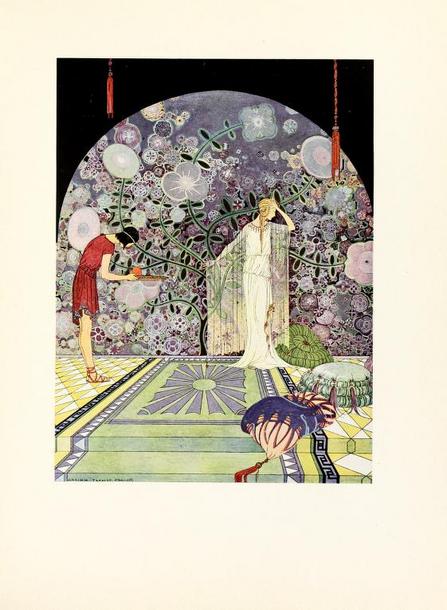
Illustration by Virginia Frances Sterrett, 1921.
"It is the only one in the world," said the servant.
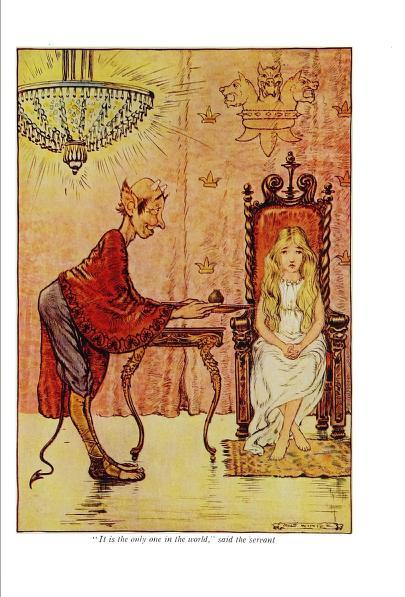
Illustration by Milo Winter. . Chicago: Rand McNally, 1913.
He set down the golden salver, with the wizened pomegranate upon it, and left the room. When he was gone, Proserpina could not help coming close to the table, and looking at this poor specimen of dried fruit with a great deal of eagerness; for, to say the truth, on seeing something that suited her taste, she felt all the six months' appetite taking possession of her at once. To be sure, it was a very wretched-looking pomegranate, and seemed to have no more juice in it than an oyster shell. But there was no choice of such things in King Pluto's palace. This was the first fruit she had seen there, and the last she was ever likely to see; and unless she ate it up immediately, it would grow drier than it already was, and be wholly unfit to eat.
"At least, I may smell it," thought Proserpina.
So she took up the pomegranate, and applied it to her nose; and, somehow or other, being in such close neighborhood to her mouth, the fruit found its way into that little red cave. Dear me! what an everlasting pity! Before Proserpina knew what she was about, her teeth had actually bitten it, of their own accord. Just as this fatal deed was done, the door of the apartment opened, and in came King Pluto, followed by Quicksilver, who had been urging him to let his little prisoner go. At the first noise of their entrance, Proserpina withdrew the pomegranate from her mouth. But Quicksilver (whose eyes were very keen, and his wits the sharpest that ever anybody had) perceived that the child was a little confused; and seeing the empty salver, he suspected that she had been taking a sly nibble of something or other. As for honest Pluto, he never guessed at the secret.
"My little Proserpina," said the king, sitting down, and affectionately drawing her between his knees, "here is Quicksilver, who tells me that a great many misfortunes have befallen innocent people on account of my detaining you in my dominions. To confess the truth, I myself had already reflected that it was an unjustifiable act to take you away from your good mother. But, then, you must consider, my dear child, that this vast palace is apt to be gloomy (although the precious stones certainly shine very bright), and that I am not of the most cheerful disposition, and that therefore it was a natural thing enough to seek for the society of some merrier creature than myself. I hoped you would take my crown for a plaything, and me--ah, you laugh, naughty Proserpina--me, grim as I am, for a playmate. It was a silly expectation."
"Not so extremely silly," whispered Proserpina. "You have really amused me very much, sometimes."
"Thank you," said King Pluto, rather dryly. "But I can see plainly enough, that you think my palace a dusky prison, and me the iron-hearted keeper of it. And an iron heart I should surely have, if I could detain you here any longer, my poor child, when it is now six months since you tasted food. I give you your liberty. Go with Quicksilver. Hasten home to your dear mother."
Now, although you may not have supposed it, Proserpina found it impossible to take leave of poor King Pluto without some regrets, and a good deal of compunction for not telling him about the pomegranate. She even shed a tear or two, thinking how lonely and cheerless the great palace would seem to him, with all its ugly glare of artificial light, after she herself--his one little ray of natural sunshine, whom he had stolen, to be sure, but only because he valued her so much--after she should have departed. I know not how many kind things she might have said to the disconsolate king of the mines, had not Quicksilver hurried her way.
"Come along quickly," whispered he in her ear, "or his majesty may change his royal mind. And take care, above all things, that you say nothing of what was brought you on the golden salver."
In a very short time, they had passed the great gateway (leaving the three-headed Cerberus, barking, and yelping, and growling, with threefold din, behind them), and emerged upon the surface of the earth. It was delightful to behold, as Proserpina hastened along, how the path grew verdant behind and on either side of her. Wherever she set her blessed foot, there was at once a dewy flower. The violets gushed up along the wayside. The grass and the grain began to sprout with tenfold vigor and luxuriance, to make up for the dreary months that had been wasted in barrenness. The starved cattle immediately set to work grazing, after their long fast, and ate enormously, all day, and got up at midnight to eat more.But I can assure you it was a busy time of year with the farmers, when they found the summer coming upon them with such a rush. Nor must I forget to say, that all the birds in the whole world hopped about upon the newly-blossoming trees, and sang together, in a prodigious ecstasy of joy.
Mother Ceres had returned to her deserted home, and was sitting disconsolately on the doorstep, with her torch burning in her hand. She had been idly watching the flame for some moments past, when, all at once, it flickered and went out.
"What does this mean?" thought she. "It was an enchanted torch, and should have kept burning till my child came back."
Lifting her eyes, she was surprised to see a sudden verdure flashing over the brown and barren fields, exactly as you may have observed a golden hue gleaming far and wide across the landscape, from the just risen sun."Does the earth disobey me?" exclaimed Mother Ceres, indignantly.
"Does it presume to be green, when I have bidden it be barren, until my daughter shall be restored to my arms?"
"Then open your arms, dear mother," cried a well-known voice, "and take your little daughter into them."
And Proserpina came running, and flung herself upon her mother's bosom. Their mutual transport is not to be described. The grief of their separation had caused both of them to shed a great many tears; and now they shed a great many more, because their joy could not so well express itself in any other way.
Illustration by George Wharton Edwards. Boston: Houghton, Mifflin, 1889.
When their hearts had grown a little more quiet, Mother Ceres looked anxiously at Proserpina.
"My child," said she, "did you taste any food while you were in King Pluto's palace?"
"Dearest mother," exclaimed Proserpina, "I will tell you the whole truth. Until this very morning, not a morsel of food had passed my lips. But to-day, they brought me a pomegranate (a very dry one it was, and all shriveled up, till there was little left of it but seeds and skin), and having seen no fruit for so long a time, and being faint with hunger, I was tempted just to bite it. The instant I tasted it, King Pluto and Quicksilver came into the room. I had not swallowed a morsel; but--dear mother, I hope it was no harm--but six of the pomegranate seeds, I am afraid, remained in my mouth."
"Ah, unfortunate child, and miserable me!" exclaimed Ceres. "For each of those six pomegranate seeds you must spend one month of every year in King Pluto's palace. You are but half restored to your mother. Only six months with me, and six with that good-for-nothing King of Darkness!"
"Do not speak so harshly of poor King Pluto," said Prosperina, kissing her mother. "He has some very good qualities; and I really think I can bear to spend six months in his palace, if he will only let me spend the other six with you. He certainly did very wrong to carry me off; but then, as he says, it was but a dismal sort of life for him, to live in that great gloomy place, all alone; and it has made a wonderful change in his spirits to have a little girl to run up stairs and down. There is some comfort in making him so happy; and so, upon the whole, dearest mother, let us be thankful that he is not to keep me the whole year round."おしまい
.jpg)
Dante Gabriel Rossetti, Proserpine (1871) pastel and chalk on paper
画家 F・S・コバーン Frederick Simpson Coburn [F. S. Coburn] [Marginalia 余白に]
20世紀初めのポー全集に挿絵を描いた画家のコバーンはWikipedia に記事がないみたいなので、書き留めておきます。
F. S. COBURN というふうに大文字で署名している絵が多いらしい F. S. コバーンは、長い名を フレデリック・シンプソン・コバーン Frederick Simpson Coburn といい、1871年カナダのケベックに生まれ、1960年に生まれ故郷の村で亡くなりました。
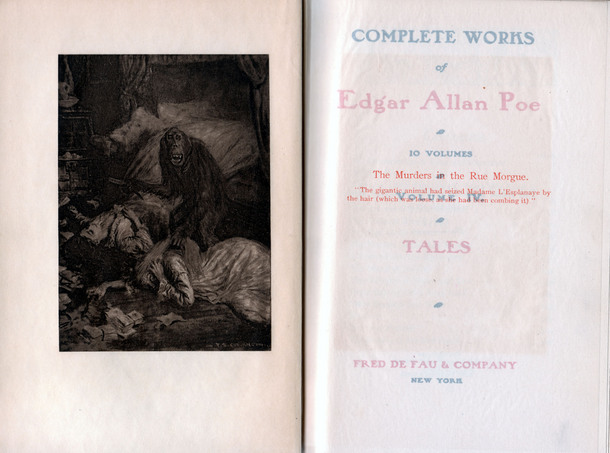
F. S. Coburn, The Murders in the Rue Morgue, frontispiece to Vol IV of Complete Works of Edgar Allan Poe (New York: Fred de Fau, 1902) 右側のページとのあいだにパラフィン紙がはさまっていて、キャプションが書かれています。(クリックで拡大)
☆香港の古書店 Lok Man Rare Books のページ(ポー全集の写真と、下の Klinkhoff 画廊からの伝記の引用)・・・・・・これを見ると、モーリちゃんの父が持っている10巻本は "Tamerlane Edition" というもともとデラックスな版の、おそらくは廉価版で(といってもこれだって限定1000なのだが)あるようです――"The Complete Works of Edgar Allan Poe. Edited and Chronologically Arranged on the Basis of the Standard Text, with Certain Additional Material and with a Critical Introduction by Charles F. Richardson. - Edgar Allan Poe 1902 - G. P. Putnam's Sons / The Knickerbocker Press, New York and London - The Tamerlane Edition"
<http://www.lokmanbooks.com/index.php?page=shop.product_details&flypage=flypage.tpl&product_id=583&category_id=%20&keyword=Coburn&option=com_virtuemart&Itemid=1&332c25b43a99a39361f1cad2bf90a6f3=7d6a897ecda122bb1c20fa1ab9af99e2>
☆カナダの画廊 Galerie Walter Klinkhoff のページ(くわしい伝記と油絵の風景画の展示あり)――
"Frederick Simspon Coburn, R. C. A. (1871-1960)"
<http://www.klinkhoff.com/canadian-artist/Frederick-Simpson-Coburn>
☆カナダの Michel Bugué Art Galleries の画家一覧ページ(肖像とくわしい伝記)―― "F. S. Coburn (Frederick Simpson Coburn) 1871-1960"
<http://www.galeriemichelbigue.com/en/frederick-simpson-coburn-en>
☆昨年2010年に没後50年の展覧会が故郷で開催されたときの記事――
"Sherbrooke museum features works of artist F.S. Coburn: 30 paintings from Musee des beaux-arts de Sherbrooke's collection on display" By Mike Fuhrmann, The Canadian Press
[Times & Transcript January 16, 2010] <http://timestranscript.canadaeast.com/rss/article/921615>
以上からの情報をかいつまんで、適当につけくわえて、以下に記します。
フレデリック・シンプソン・コバーンは1871年3月18日、カナダのケベック州南部モントリオール東部の町シャーブルック Sherbrooke のすぐ北にある小さな村アパーメルバン Upper Melbourne に生まれた。モントリオールの工芸学校で才能を示し、ニューヨークの Carl Hecker School of Art に進学、そして1890年に19歳のときにベルリンの(王立)美術院 Akademie der Künste に留学した。Julius Erhentraut と Franz Skarbina (1849-1910) のもとで解剖学的知見にもとづく精密なデッサン力を鍛錬した。しかしドイツで修行中にカナダの母親が急死、一時帰国。1892年ふたたび渡欧し、パリの École des Beaux-Arts では Jean-Léon Gérôme に師事して印象主義を吸収(ロートレックらと交遊)、フランス滞在中の3年間に、北米の雑誌 Harper’s Magazine、McClure’s New Monthly Magazine、The Monthly Illustrator などにイラストを描くようになり、カナダとフランスを行き来する。
1896年、カナダ帰国時に、アイルランド生まれのカナダの詩人ウィリアム・ヘンリー・ドラモンド William Henry Drummond (1854-1907) と面識をもち、詩集 The Habitant and Other Canadian Poems の挿画を依頼される。こののちドラモンドの刊行する本の挿画を継続的に手がける。
1896年から1897年にかけて、ロンドンの Slade School of Art では Henry Tonks に師事して、写実を超えた主観的解釈を学ぶいっぽう、London Sporting and Dramatic News にカナダの野生動物を描いたり、London News の仕事をしたりする。1897年、ベルギーのアントワープの 美術学校に入学、Albrecht De Vriendt のスタジオで人物画を学ぶ。この地で、その後結婚することになる女性画家(画学生だった) Malvina Sheepers と知り合う。Goot 助成金を外国人としてはじめて獲得、2年間、無料のスタジオ、モデル、衣装、美術書の自由な閲覧など認められた。1897年の夏カナダに帰省してドラモンドの次作 Madeleine Verchères の挿絵を描くためにカナダの地方を取材。
1898年ふたたびベルギーに。その後カナダとのあいだを行き来しながら、ドラモンドの刊行する本の挿画、さらに、さらにドラモンドのつきあいのあったニューヨークの出版社 Putnam からイラストを依頼されるようになり、ディケンズ、ポー、テニソン、ゴールドスミス、ロバート・ブラウニングなどの作品に挿画を描くことになる。
さらに1903年に新境地を求めてふたたび渡欧した先のオランダではハーグ派 Hague School の画家たちの影響を受ける(Maris 兄弟や J. H. de Weissenbruch と交流)。その後のコバーンの絵はこの派の明るい色調が出てくるみたい(それまでの白黒を主調としたイラストから変化していく)・・・・・・とりあえず、今日のところはここまでにして以下の生涯の記述は略)。
という感じで、全部で80枚くらいのポーの挿絵を描いた1901年、1902年というのはコバーンが暗い色調(というかモノトーン)を好んで描いていた時代だったようで、そのことはポー作品にとってはラッキーだったような気がします。1930年だいとかの風景画を見ると(といってもあくまでWEB上で小さなスキャン画像しか見られないけれど)、同じ作家とは思われないような絵です。
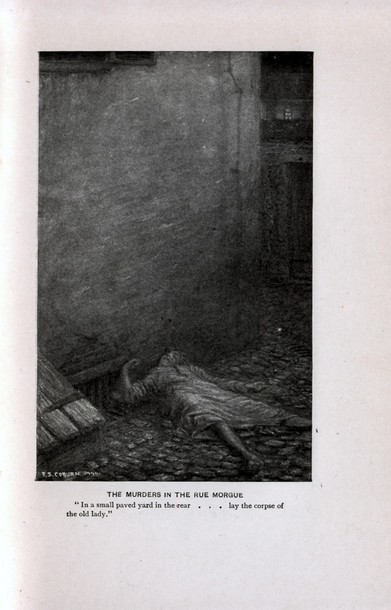
F. S. Coburn, illustration for "The Murders in the Rue Morgue," between pp. 188-189 [click to enlarge] "In a small paved yard in the rear . . . lay the corpse of the old lady."
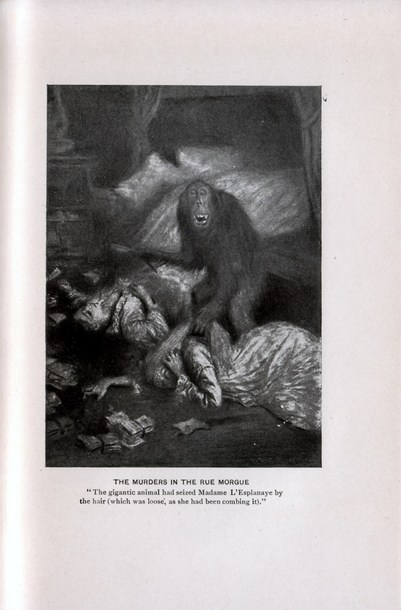
F. S. Coburn, illustration for "The Murders in the Rue Morgue," between pp. 228-229 [クリックで拡大] "The gigantic animal had seized Madame L'Espanaye by the hair (which was loose, as she had been combing it).
扉絵が本文中の挿絵で反復されています。手前の、髪の毛をオランウータンにつかまれているのが母親のエスパニエですけれど、笑い仮面みたいにみえるのは気のせいで、下を向いているのだと思います。扉絵はまたちがう仮面に見えますけど。奥の女な娘で、煙突に詰め込まれ、母親は前の挿絵に描かれたように、裏手の舗道に投げ捨てられます。
ま、作品が暗いから絵も暗くなるのでしょうけど、画家の想像力が文学テクストのゴシック的な消化/昇華を示している絵も見られるようです(ということでスキャンをしながらつづく)。
改行解除とパラグラフ保存とインデント(字下げ)の頭の体操 [Marginalia 余白に]
記事「改行解除(ワード) How to Remove Line Breaks (Microsoft Office Word)」と「RLB: Remove Line Breaks」の余白に。
あとのほうの記事の最後に「パラグラフを残してその他の改行を解除するにはどうしたらいいのかしら。頭の体操をしてみよう。」と書きました。
ちゃんと知ってる人は知ってるんだろうなあ、と思いつつ、しかし恥じることもなく頭の体操をしてみる。
いちおう例題(実験台)として Full text of"Tanglewood Tales" [Project Gutenberg] @ Internet Archive <http://www.archive.org/stream/tanglewoodtales00976gut/tnglw10.txt>
☆第零段階
ワードにコピペしてctl[Ctrl; control]+ H [or F] などで検索・置換ダイアログを開ける。
☆第一段階
・検索する文字列― ^13{2,}
・置換後の文字列― テクスト内で使われていない文字をひとつ、あるいは念のためふたつ、たとえば##
・検索オプション― ワイルドカードを使用するにチェックを入れる
・この条件ですべて置換(837個の項目を置換)
〔{2,} はその前の要素が2回以上を表わす。^13 は改行だけど、1個だけだと見た目行間が空かない改行(つまり^13 が2回あるのは行間が空いている)〕
☆第二段階
・検索する文字列― ^13
・置換後の文字列― スペース半角分ひとつ
・検索オプション― なし(ワイルドカードを使用するのチェックはあってもなくても同じ)
・この条件ですべて置換(5444個の項目を置換)
第三段階
・検索する文字列― 第一段階の文字(列)、たとえば##
・置換後の文字列― ^13 ^13とパラグラフ冒頭のインデントしたい分のスペース、たとえば5個
・検索オプション― ワイルドカードを使用するのチェックはあってもなくても同じ
・この条件ですべて置換(837個の項目を置換)
これは、自分の感じからすると、オオカミだかキツネだかがいるけどウサギとニワトリを向こう岸に舟一艘で渡す頭の体操に似ている。
でも、よく見ると、グーテンベルグの冒頭の説明のところは改行がもともとヘンなので、そこはきれいに統一されないです。あと、段落のインデント(字下げ)は別途設定してもいいかも。
ワイルドカードの ! =「否定」の利用も考えたのですけれど、英語だとうまくいかなかった。勉強しよっと。
2011年3月16日午前1時ごろ追記――ちなみに第一段階を経ないで第二段階の置換を行なうと7151個の置換が行なわれる。7151=5444+837×2 ではない。5444+837×2=7118 すなわち改行マークは3以上で連続している箇所があるということかな。
オシムのことば―エイシー AC [Marginalia 余白に]
記事「エイシー AC」のおまけ。
2011年3月21日夜、ふと気づくと「エ~シ~♪」という〆のコトバが消えている(とりあえずテレビ朝日あたりでは)。ウルサイというクレームがあったのかしら。
それはそれとして、金子みすゞや宮澤章二の詩や詩の断片をくりかえしくりかえし反復的に脳に注入されて、反問したり納得したり反発したり煩悶したりするわけですけれど、なかなか覚えられない、というか、頭に入らないのがオシムのことばです。
それで調べてみた。なんのことはない、前の記事のリンクのACの「支援キャンペーン」に掲載されていましたw。はやく見ればよかったw。――
| Osim | Viitalna je brzina |
| NA | スピードが命なんだよ。 |
| Osim | To i kod fudbala i kod tretmana mozdanog udara |
| NA | サッカーでも、脳卒中の対応でも。[・・・・・・] これらの症状が現れたらすぐに救急車を。 |
| Osim | preziveo, pomoglo ostalima, to bi bilo super |
| NA | 私の経験を活かしてくれ。 [・・・・・・] |
| SL | ♪AC~ |
<http://www.ad-c.or.jp/campaign/support/01/>
☆22日朝追記――『オシムの伝言』公式ブログの「VITALNA JE BRZINA(スピードが命)」(2011.3.19) というページ <http://info.osimnodengon.com/?eid=250>にくわしいことばの説明がありました。 カタカナの振り仮名つき。ボスニア語だそうで。
・インタビューをまとめた動画(日本脳卒中協会)――<http://www.jsa-web.org/ac2010/index.html>
///////////////////////////////
コールのブック・アーケード Cole's Book Arcade [Marginalia 余白に]
記事「ブルー(憂鬱)を吹き飛ばす本 Books to Dispel the Blues」で載せた、オーストラリアの新聞の画像を再掲――
"Gardening Books" や "Books to Dispel the Blues" などの見出しでお勧め本をリストアップしているコラムのタイトルが "COLE'S BOOK ARCADE" です。
そして、画像では切れているけれど、 "For the Children" という見出しの次は "Secondhand Department" なのでした。はい、古書部ですぅ。
E. W. Cole とはなにか、つーと Edward William Cole で、英語のWikipedia には "Edward William Cole" の見出しで記事があり、"Edward William Cole, also known as 'E. W. Cole of the Book Arcade', (4 January 1832 – 16 December 1918) was a bookseller and founder of the book arcade, Melbourne, Australia." と冒頭に書かれています <http://en.wikipedia.org/wiki/Edward_William_Cole>。
オーストラリアのメルボルンの本屋さんでした。エドワード・ウィリアム・コールはイギリスのケント州出身で、20歳のころにオーストラリアに移民し、農業をやったあと1865年に600冊の本を並べて本屋を開きました。そして1874年にはそのそばのBourke Street に移転。さらに店を拡充していって "arcade" を形成。
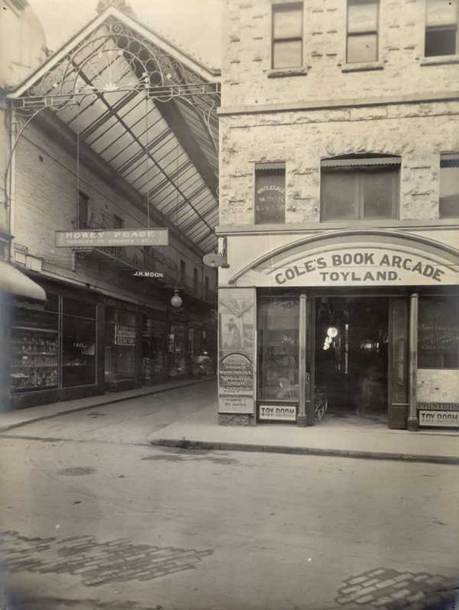
image via eGold (Electronic Encyclopedia of Gold in Australia) <http://www.egold.net.au/objects/DEG000070.htm>
"Toyland" とありますけれど、古本部門だけでなく、さまざまな雑貨や置物やオモチャを詰め込んだ空間だったようです(Cole's Book Arcade の写真 "Ornamental overkill (ca. 1900) <http://www.flickr.com/photos/15693951@N00/3079723675/in/photostream/>)。
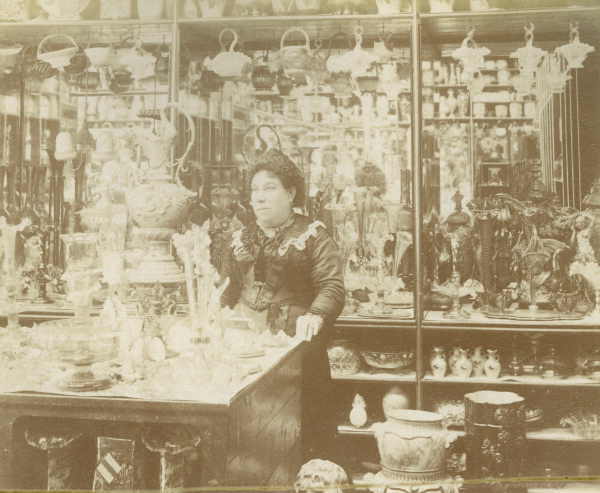
Mrs. E. W. Cole (c. 1901), image via State Library of Victoria <http://www.slv.vic.gov.au/pictures/0/0/0/doc/pi000108.shtml>
そして、ウィキペディアには書いていないけれど、オーストラリア人名事典の記述によれば、1898年にEdward Augustus Petherick からシドニーとアデレードの本屋を買収してチェーン展開しました。アデレードの新聞の記事の最後の Rundle Street というのはアデレード市の中心的な商店街です。
コールというのはなかなかの奇人のようで、そのうちいくつか記事を書くかもしれません。
/////////////////////
"Cole, Edward William (1832-1918)" in Australian Dictionary of Biography: Online Edition <http://www.adb.online.anu.edu.au/biogs/A030410b.htm> 〔E. Cole Turnley, 'Cole, Edward William (1832 - 1918)', Australian Dictionary of Biography, Volume 3, Melbourne University Press, 1969, pp. 438-440〕
"Edward William Cole - Wikipedia" <http://en.wikipedia.org/wiki/Edward_William_Cole>
"Image - Cole's Book Arcade - Electronic Encyclopedia of Gold in Australia" <http://www.egold.net.au/objects/DEG000070.htm>
Sally Ruljancich, "Cole's Book Arcade," eMelbourne: The Encyclopedia of Melbourne Online <http://www.emelbourne.net.au/biogs/EM00374b.htm>
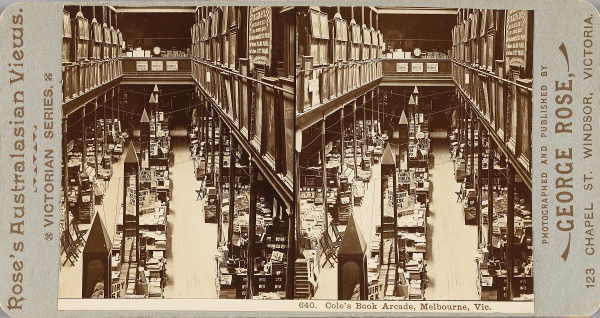
Cole's Book Arcade, Melbourne (c1890's), image via State Library of Victoria <http://www.slv.vic.gov.au/pictoria/b/4/6/doc/b46417.shtml>
flickr の Cole's Book Arcade の写真 "Ornamental overkill (ca. 1900) <http://www.flickr.com/photos/15693951@N00/3079723675/in/photostream/>, "Cole's Book Arcade (ca. 1900)" <http://www.flickr.com/photos/15693951@N00/3082012913/in/photostream/> by ookami_dou Wolfgang Wiggers.




![CornellAlu[v]mniNews,Vol.3,No.12(December19,1900).jpg](https://occultamerica2.c.blog.ss-blog.jp/_images/blog/_73b/occultamerica2/m_CornellAlu5Bv5DmniNews2CVol.32CNo.12(December192C1900).jpg)
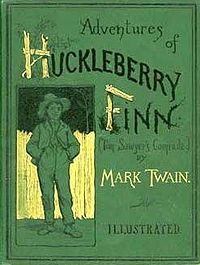
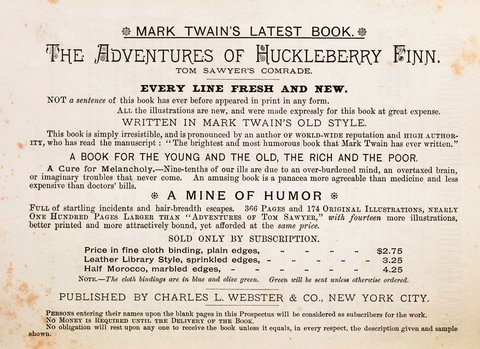
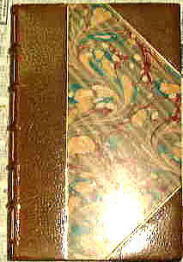
100.jpg)
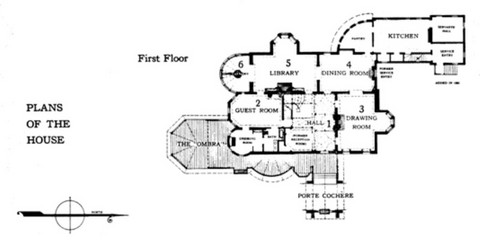
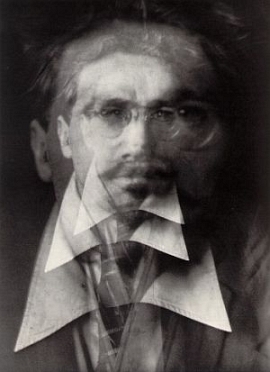


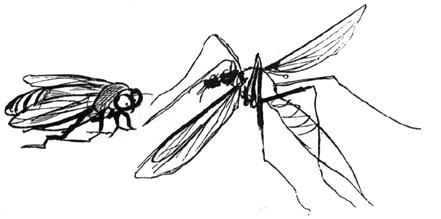
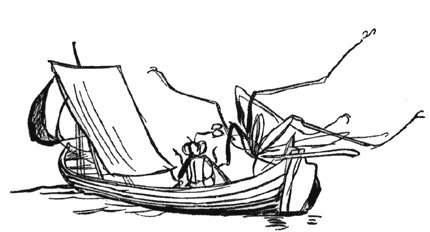
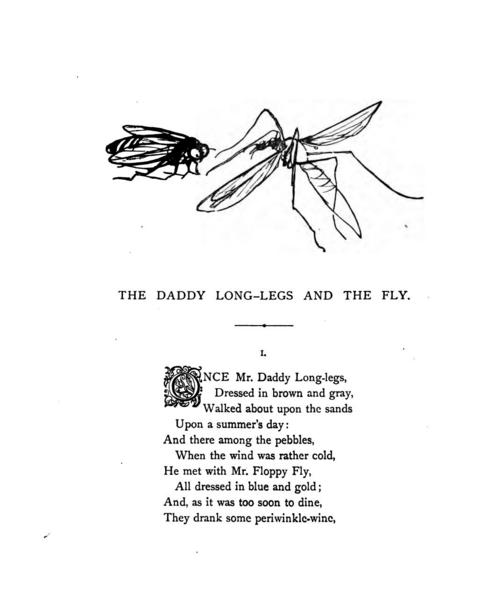
.jpg)
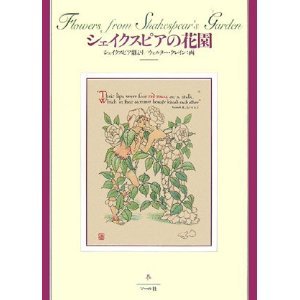
.jpg)